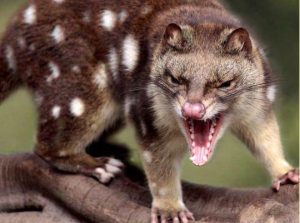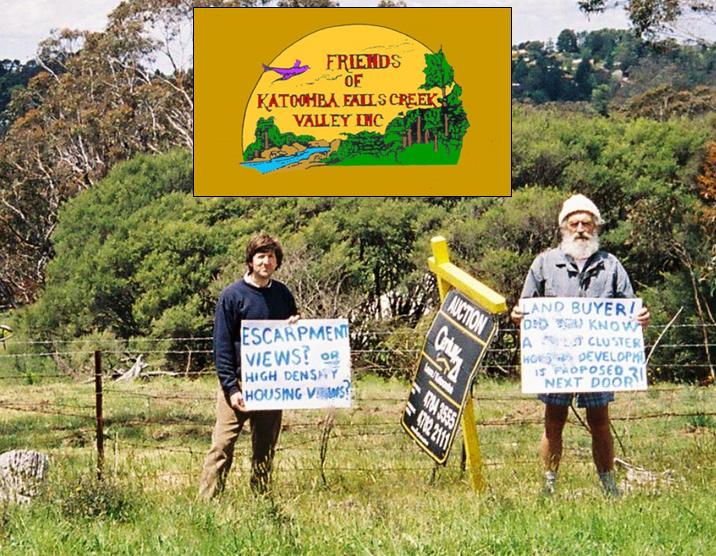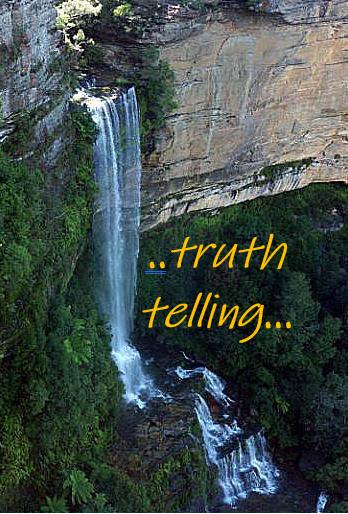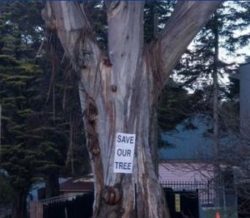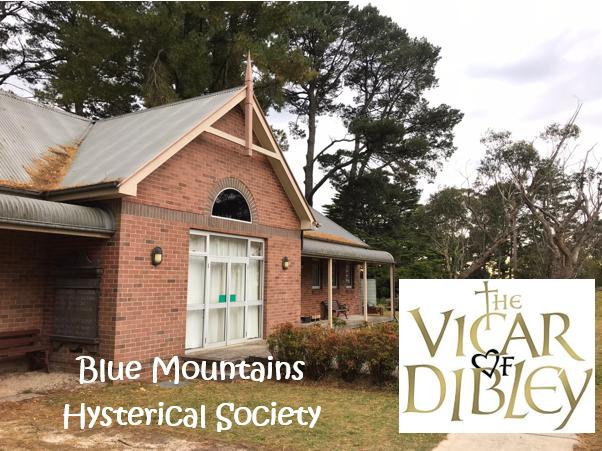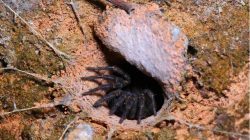Archive for the ‘Habitat Threats’ Category
Monday, November 26th, 2012
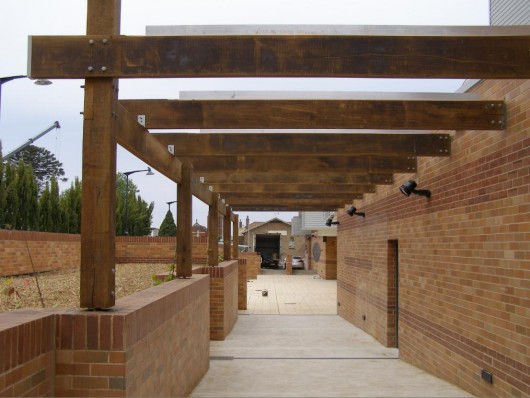 The pergola entrance to the Blue Mountains Cultural Centre
..using Old Growth ‘Tasmanian Oak’? The pergola entrance to the Blue Mountains Cultural Centre
..using Old Growth ‘Tasmanian Oak’?
.
.
The new Blue Mountains Cultural Centre opened at 30 Parke Street, Katoomba in the Blue Mountains west of Sydney on Saturday 17th November 2012.
The Blue Mountains Cultural Centre is a very large complex for the town of Katoomba and the sparsely populated region.
It features:
- an art gallery
- state-of-the-art library
- an extensive scenic viewing platform towards the Jamison Valley (and World Heritage wilderness beyond)
- seminar room
- multi-purpose workshop
- coffee shop
- gift shop
- meeting rooms
- an interpretative centre for the Greater Blue Mountains World Heritage Area.
.
It is a “purpose built cultural precinct; a place that simultaneously celebrates our unique sense of place, and allows us to explore what it means to live here, and share those understandings with those who visit our home.”
[Source: ‘Grand Opening – Blue Mountains Cultural Centre’, (special feature), Blue Mountains Gazette, 20121114, p.2]
.
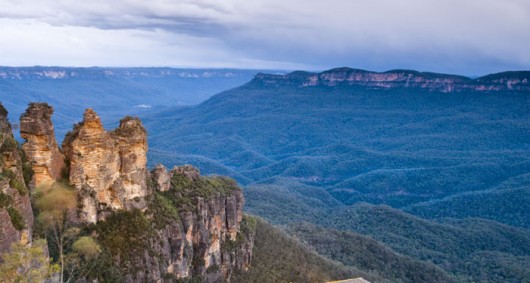 The Jamison Valley Wilderness
Contains natural stands of giant old growth Turpentines (Syncarpia glomulifera)
and old growth Mountain Blue Gums (Eucalyptus deanei) The Jamison Valley Wilderness
Contains natural stands of giant old growth Turpentines (Syncarpia glomulifera)
and old growth Mountain Blue Gums (Eucalyptus deanei)
.
Planning for the Blue Mountains Cultural Centre commenced way back in 1998 and there was much local community consultation in the planning process including with local Aboriginal people.
The building was commissioned by the local Blue Mountains Council and funded mainly by the New South Wales Government by more than $6 million. The Cultural Centre was designed by architects Hassell & Scott Carver Architects and built by Richard Crookes Constructions.
The Cultural Centre, now built, is positioned on the top (roof) level of a building which has, in the main, been constructed for a new relocated Coles supermarket and shopping arcade.
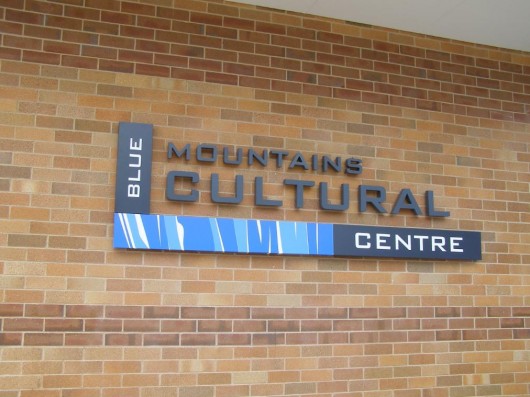 Blue Mountains Cultural Centre entrance Blue Mountains Cultural Centre entrance
.
While the now operational purposes of the Blue Mountains Cultural Centre promise to have considerable merit, there are two notable drawbacks associated with the recent construction of this building, which should not be forgotten to history.
.
1. The Entrance Pergola appears to be of ‘Tasmanian Oak‘
.
The timber pergola at the entrance has the distinctive colour and texture of ‘Tasmanian Oak‘, which is a timber industry generic marketing term used to group old growth native hardwood timber from a choice of one of the following three botannical species:
.
- Eucalyptus regnans
- Eucalyptus obliqua
- Eucalyptus delegatensis
 The distinctive colour and texture of Tasmanian Oak (treated and stained) The distinctive colour and texture of Tasmanian Oak (treated and stained)
These large posts and the beams have few knots and clearly have been sourced from the heartwood of very large and old native trees.
.
A ‘Tassie Oak’ comparison..
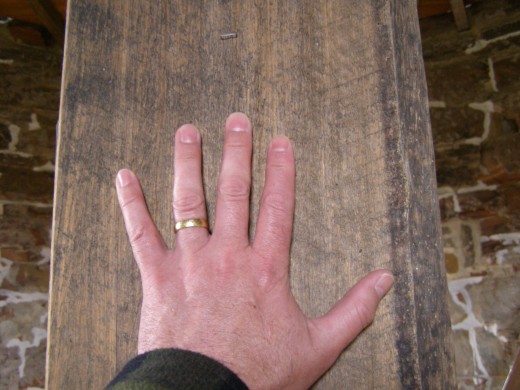 Tasmanian Oak in Tasmania
A new ten inch (wide) ‘Tasmanian Oak’ post inside Oatlands’ restored mill, Tasmania Tasmanian Oak in Tasmania
A new ten inch (wide) ‘Tasmanian Oak’ post inside Oatlands’ restored mill, Tasmania
It was probably from local Messmate/Stringybark (Eucalyptus obliqua), treated but not stained
(Photo by Editor, September 2009, Photo Free in Public Domain)
.
The name ‘Tasmanian Oak‘ was originally used by early European timber workers who believed the eucalypts showed the same strength as English Oak. When sourced from Tasmania, the wood is called Tasmanian Oak. When sourced from Victoria, the wood is called ‘Victorian Ash‘ or ‘Mountain Ash‘.
This uniquely Australian hardwood timber is light-coloured, ranging from straw to light reddish brown. It continues to be used in the building trade for panelling, flooring, furniture, framing, doors, stairs, external structures, joinery, reconstituted board and even as pulp for paper.
As the tallest flowering plant in the world, Eucalyptus regnans grow up to 100 metres tall. Whereas Eucalyptus delegatensis and Eucalyptus obliqua do not reach these heights; instead reaching about 70m with the tallest trees achieving 90 metres, which is no less considerable.
Read More about >Tasmanian Oak
[Source: Tasmanian Government, ^http://www.tastimber.tas.gov.au/species/pdfs/A4_ESB_Tasoak.pdf]
.
Nevertheless, all these species comprise timber logged from native old growth forests, not plantations. Such forests are rare and fast disappearing due to excessive logging practices – their dependent ecosystems, flora and fauna included.
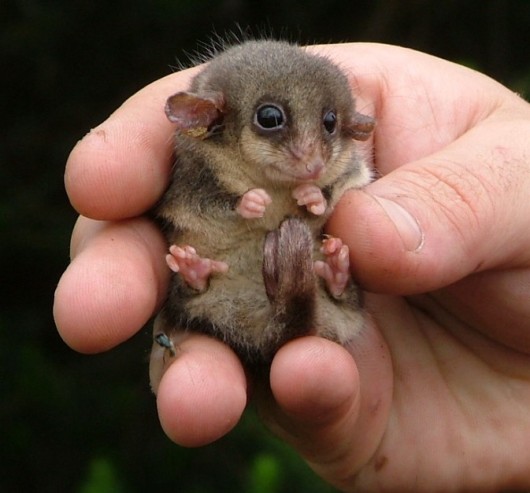 The Pygmy Possum (Genus Cercartetus)
Once prolific, but now threatened across the Blue Mountains heathland escarpment
due to misguided escarpment Government Arson labelled as ‘Hazard Reduction’
To the Rural Fire Service anything natural is phobically deemed to be a ‘hazard’.
[Source: ^http://www.warra.com/warra/research_projects/research_project_WRA116.html] The Pygmy Possum (Genus Cercartetus)
Once prolific, but now threatened across the Blue Mountains heathland escarpment
due to misguided escarpment Government Arson labelled as ‘Hazard Reduction’
To the Rural Fire Service anything natural is phobically deemed to be a ‘hazard’.
[Source: ^http://www.warra.com/warra/research_projects/research_project_WRA116.html]
.
So logging and use of this native old growth timber is unsustainable, despite Australian timber industry certification claims, which are proven dubious.
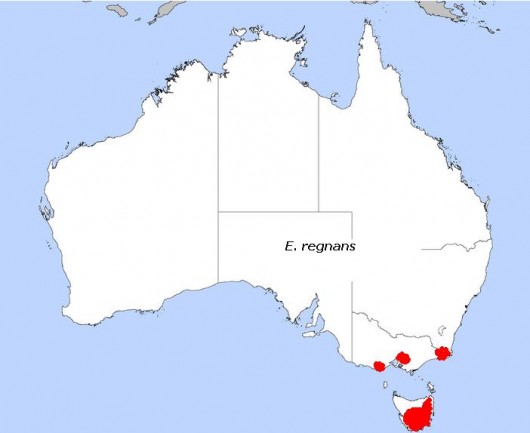 Tasmanian Oak/Mountain Ash (Eucalyptus regnans)
Its original distribution mainly from Tasmania
To a lesser extent variants come from the high rainfall areas of East Gippsland, Dandenong Ranges to Black Spur Range and the Otway Ranges. Tasmanian Oak/Mountain Ash (Eucalyptus regnans)
Its original distribution mainly from Tasmania
To a lesser extent variants come from the high rainfall areas of East Gippsland, Dandenong Ranges to Black Spur Range and the Otway Ranges.
.
A likely justification for the use of Tasmanian Oak for the Blue Mountains Cultural Centre’s entrance pergola is that Tasmanian Oak being a strong hardwood timber is load-bearing with few knots. While steel or another composite material could have been used, it is probable that the Tasmanian Oak was inadertently chosen for its aesthetic appeal, ignoring sustainability criteria.
Tasmanian Oak, like many Australian native hardwood timbers, is durable, termite and borer resistant, and fire resistant which makes its suitable for such an external structure, plus it is readily available and so a comparatively affordable building material. The timber has few knots because it is sourced from old growth trees, perhaps aged over one hundred years, and so the trunk is very tall and straight between the tree’s base and the branch canopy.
The Blue Mountains are dominated by Eucalypt forests, which contain flammable natural eucalyptus oil. Although the Cultural Centre is wholly within the township of Katoomba some distance from native forests, compliance with the Building Code of Australia would have mandated the building material options for the pergola, including the requirement that the external structure be of fire resistant material. Since the Cultural Centre is situated within the least risk buffer zone of a designated Bushfire Prone Area, the choice of building material would also have would been mandated under the Australian Standard AS 3959 ‘Construction of Buildings in Bushfire Prone Areas’ and with local council’s Blue Mountains Local Environment Plan 2005 – Regulation 86 : ‘Bush fire constructions standards’.
Under AS 3959, the construction of new buildings, the use of timber as an extrenal building material is permitted in the lower risk levels provided the timber species must comply with minimum crierian for Fire Retardant Treated Timber. The following timber species have been tested and found to meet the required parameters without having to be subjected to fire retardant treatment:
- Blackbutt
- Merbau
- Red Ironbark
- River Red Gum
- Silvertop Ash
- Spotted Gum
- Turpentine
.
[Source: The Australian Timber Database, ^http://www.timber.net.au/index.php/timber-in-bushfire-prone-areas.html]
.
The above hardwoods are all threatened species and are disappearing fast; all Australian bar Merbau which is being depleted from old growth Indonesian rainforests.
The timber used in the Cultural Centre’s timber pergola is arguably of Tasmanian Oak, which is known variously by the common names Mountain Ash, Victorian Ash, Swamp Gum, or Stringy Gum.
It is a species of Eucalyptus native to southeastern Australia, in Tasmania and Victoria. Historically, it has been known to attain heights over 100 metres (330 ft) and is one of the tallest tree species in the world. In native forests, the two species (Mountain Ash & Alpine Ash) that are combined to produce Victorian Ash are known to be two of the world’s largest trees, occasionally growing to over 100m in height.
Yet all these Australian native hardwood timbers are increasingly becoming scarcer as they are logged for such fire-resistant application.
.
The Building Standard for Fire Retardant Treated Timber is driving deforestation of Australian Old Growth Forests.
.
These old growth timbers are the dominant canaopy species for wet eucalypt forests restricted to cool, deep soiled, mostly mountainous areas to 1,000 metres (3,300 ft) altitude with high rainfall of over 1,200 millimetres (47 in) per year. The trees grow very quickly, at more than a metre a year, and can reach 65 metres (213 ft) in 50 years, with an average life-span of 400 years.
Eucalyptus regnans is the tallest of all flowering plants, and possibly the tallest of all plants, although no living specimens can make that claim.The tallest measured living specimen, named Centurion, stands 101 metres tall in Tasmania.
Before the discovery of Centurion, the tallest known specimen was Icarus Dream, which was rediscovered in Tasmania in January, 2005 and is 97 metres (318 ft) high. It was first measured by surveyors at 98.8 metres (324 ft) in 1962 but the documentation had been lost. Sixteen living trees in Tasmania have been reliably measured in excess of 90 metres (300 ft).
Historically, the tallest individual is claimed to be the Ferguson Tree, at 132.6 metres (435 ft), found in the Watts River region of Victoria in 1871 or 1872.
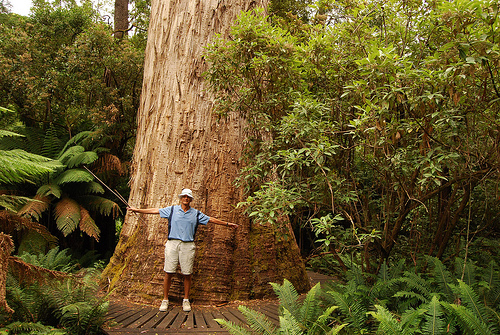 Eucalyptus regnans
(marketed as ‘Tasmanian Oak’) Eucalyptus regnans
(marketed as ‘Tasmanian Oak’)
.
The fallen logs continue supporting a rich variety of life for centuries more on the forest floor. These restricted mountain ash forests provide vital yet shrinking habitat for many of Australia’s threatened species of fauna.
.
2. Construction created considerable land fill
.
It was observed throughout the construction phase of the Blue Mountains Cultural Centre, that daily large skips of builders waste from the site were loaded alongside in Parke Street.
These commercial skips were consistently yellow in colour and the same size – about six meters long and two meters wide (12 cubic metre capacity). Typically there were two such skips positioned and loaded with builders’ waste from the construction site each weekday. This was observed over the course of a year up until August 2012. They were loaded by bobcat-style machinery with all types of mixed rubbish – concrete, unwanted insulation, scrap metal, rubble, empty cans, you name it. There was no separation of waste observed for recycling. It would all have been trucked to landfill – possibly to either the nearby Katoomba or Blaxland waste management facilities, or else off-Mountain somewhere.
 Commercial skip used to cart away builders’ waste from the construction site
(Approximate scale) Commercial skip used to cart away builders’ waste from the construction site
(Approximate scale)
.
A conservative estimate of the land fill volume generated from the Cultural Centre construction site, which also included the Coles shopping complex, over the course of the year would be 12 cubic metres x 2 skips x 5 days x 42 weeks (generously allowing for 10 non work weeks out of 52) = over 5,000 cubic metres of land fill!
.
.
Cultural Centre’s Green Credentials
.
The above two environmental impacts are far from encouraging for this high profile community-serving 21st Century building, and within a World Heritage Area to boot.
The interpretative concept is one that is meant to inspire locals and visitors alike. So these two impacts are concerning and perhaps need to be clarified in the public literature produced by the Blue Mountains Council which commissioned the Cultural Centre.
The public impression promoted by the Blue Mountains Council is that the Cultural Centre is a eco-friendly building deserving praise.
<<It has free wi-fi and features a range of green initiatives including double-glazed windows, solar panels, rainwater harvesting, and low-energy LED lights in the gallery.>>
[Source: ‘Grand Opening – Blue Mountains Cultural Centre’, (special feature), Blue Mountains Gazette, 20121114, p.3]
.
<<The Blue Mountains Cultural Centre has a range of green (building) features that ensure that its impacts on the World Heritage environment is kept to a minimum.
Some of the features include:
- A fully insulated roof, double-brick air cavity walls and double-glazed windows assist to insulate the building.
- Extensive rainwater collection, harvested by the Centre and the Carrington Hotel and stored onsite, in an underground 50,000 litre tank
- On the roof there are 54, 10kW solar panels to reduce the Centre’s reliance on traditional energy sources.
- The ‘green roof’ treats a portion of the Cultural Centre’s water run-off (with the aid of a UV disinfection system) that is then used for irrigation and toilet flushing.
- The Centre is lit with a combination of efficient, long-life lighting sources and lighting zoning to allow separate switching and dimming of areas adjacent to windows.
- The City Art Gallery uses LED lighting technology to significantly reduce power consumption.
- The building orientation itself is designed to provide protection to the open courtyard areas from the prevailing westerly winds and exposure to northern sunlight.
.
With these initiatives in place, the Cultural Centre aims to reduce water consumption by 5.5 million litres each year and reduce energy usage of 1.8 million kWh/year — enough energy to power 246 homes in the region.>>
[Source: Blue Mountains Cultural Centre website, ^http://bluemountainsculturalcentre.com.au/about-us/history/environmental-design-aspects/]
.
A core part of the Blue Mountains Council’s 25 Year Vision for the Blue Mountains region focussed on ‘Looking After the Environment‘:
<<We value our surrounding bushland and the World Heritage National Park.
Recognising that the Blue Mountains natural environment is dynamic and changing, we look after and enjoy the healthy creeks and waterways, diverse flora and fauna and clean air.
Living in harmony with the environment, we care for the ecosystems and habitats that support life in the bush and in our backyards.
We conserve energy and the natural resources we use and reduce environmental impacts by living sustainably.>>
.
[Source: ‘Towards a More Sustainable Blue Mountains – A 25 Year Vision for the City, Blue Mountains Council ,2000-2025, ^http://www.sustainablebluemountains.net.au/our-city-vision/city-vision-publications/]
.
Ed: Such are noble goals however outsourced, but if they are dismissed just as ^’Greenwashing’ :the community message quicky becomes recognised as hollow spin and then any hard earned credibility risks being quickly lost.
.
Tags: Blue Mountains Council, Blue Mountains Cultural Centre, builders waste, Bushfire Prone Area, Eucalyptus delegatensis, Eucalyptus obliqua, Eucalyptus regnans, Fire Retardant Treated Timber, land fill, Mountain Ash, pergola, Tasmanian Oak, Tassie Oak, Victorian Ash
Posted in Blue Mountains (AU), Threats from Development, Threats from Greenwashing | No Comments »
Add this post to Del.icio.us - Digg
Saturday, November 24th, 2012
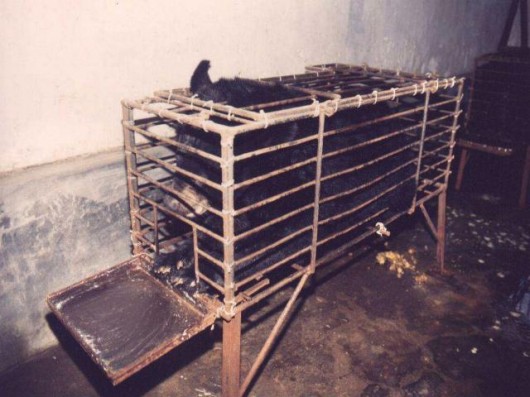 Asian Black Bear (Ursus thibetanus)
Wrongly captured, cruelly caged and exploited as Bile bears or battery bears for TCM
Kept in captivity to harvest bile, a digestive juice produced by the liver and stored in the gall bladder. Asian Black Bear (Ursus thibetanus)
Wrongly captured, cruelly caged and exploited as Bile bears or battery bears for TCM
Kept in captivity to harvest bile, a digestive juice produced by the liver and stored in the gall bladder.
.
<<When extracted, the bears’ bile is a valuable commodity for sale as an ingredient in so-called ‘Traditional’ Chinese Medicine (TCM). The bears are also known as moon bears because of the cream-colored crescent moon shape on their chest.
The Asian black bear, the one most commonly used on bear farms, is listed as ‘Vulnerable to Extinction’ on the World Conservation Union’s (IUCN’s) Red List of Threatened Animals. Bear bile collection occurs in China, South Korea, Laos and Vietnam.
Traditional Chinese medicine has been practiced for more than 3,000 years, but the popularity of some TCM cures has helped drive certain species close to extinction, including Tigers and Rhinos. The use of the term ‘traditional’ connected with Chinese medicine is debatable anyway. The term ought to be replaced by ‘gullible’.
.
The use of endangered animal parts must be stopped completely.
TCM is immoral wildlife quackery only practiced by backward asians
.
Because of their use in medicines — along with other factors like habitat loss — tigers have almost disappeared, with as few as 5,000 to 7,000 left in the wild. If the use of their bones for TCM continues, the powerful and majestic wild tiger may not be around for future generations. Rhino horn has been used in Chinese medicines for centuries. But now only 3,100 black rhinos survive in Africa. In Asia, the situation is even more dire, with only about 2,800 of all three Asian species combined.
Although many TCM practitioners now reject the use of these and other endangered species, poaching continues. The use of these animals’ parts and products is deeply rooted in traditional East Asian cultures and these ancient practices are slow to change.
The Chinese Medicine Council and Ministry of Health, must therefore condemn the use of endangered animal parts by de-registering any practitioners found to be using them.>>
.
[Source: ‘Chinese medicine council ban the use of endangered animal parts, ^http://www.change.org/en-AU/petitions/chinese-medicine-council-ban-the-use-of-endangered-animal-parts]
.
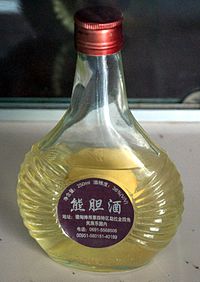 Cruel TCM Bear Bile
A fraud. It does nothing it is purported claimed to do.
It could be cerebal fluid from a human infant – just as much a placebo, just as immoral. Cruel TCM Bear Bile
A fraud. It does nothing it is purported claimed to do.
It could be cerebal fluid from a human infant – just as much a placebo, just as immoral.
.
<<At a conference in London (August 2011), the experts (have said) that there is no justification for the farms because their latest research has shown that that herbal substitutes have greater health benefits than those claimed for bear bile which is used in traditional Chinese medicine.
The rare public criticism of ‘bile farms’ by traditional Chinese medicine experts will be led by Dr Yibin Feng, an associate professor and assistant director at the School of Chinese Medicine at the University of Hong Kong.
He (unveilled) new research showing that the bears’ suffering on the farms is “unnecessary” and (has called) for the farms to be closed down.
“Bears are being inhumanely treated and bear farming must end in the near future,” Dr Feng will tell the conference in Westminster. Our research provides evidence that other easily available animal bile and plants can be used as bear bile substitutes.”
His conclusions will delight campaigners who for years have fought against the farms and freed hundreds of bears from captivity.They claim that opposition to the industry is growing as China’s burgeoning middle class become increasingly opposed to such cruelty.
Bear gall bladders have no proven medicial qualities.
.
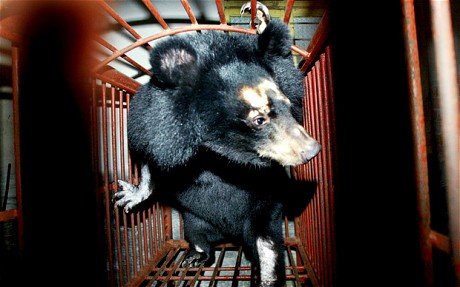 On the farms, the bears are milked while alive for their bile through crude holes cut into the abdomen wall and the gall bladder.
Photo: EPA On the farms, the bears are milked while alive for their bile through crude holes cut into the abdomen wall and the gall bladder.
Photo: EPA
.
Dr Feng will warn the World Traditional Chinese Medicine Congress conference, however, that opponents face a hard battle with traditionalists who remain convinced that real bear bile can help cure many ailments including stomach and digestive disorders and kidney problems. Many people, including government officials, will refuse to accept substitutes, he will say.
On the farms, the bears – mostly Asiatic black bears – are kept in tiny, cramped cages and milked for their bile through crude holes cut into the abdomen wall and the gall bladder.The wounds are deliberately left open, leaving the bears exposed to infection and disease.
They are kept hungry and denied free access to water because this helps produce more bile.The farms are still found in many parts of China and other Asian countries, fuelling poaching and illegal trade in the animals.
..Jill Robinson, the English founder and chief executive of the charity, which has a sanctuary for rescued bears in China, said: “Bears are dying in droves across the country in conditions that are just as horrendous as they were when we began rescuing bears in 1995. This appalling trade has to end.
“There are over 54 different herbal alternatives and man-made synthetics that can take their place.
No one is going to die from a lack of bear bile.”
In December 2009, 19 of China’s mainland provinces committed to becoming bear farm free. Another province, Shandong, closed its last bear farm in 2010. But there is growing concern that the bear bile trade is still widespread throughout Asia. The Chinese government estimates that there are currently between 7,000 and 10,000 bears kept for their bile in China. There are an estimated 16,000 Asiatic bears living in the wild.
A report in May 2011 by ^TRAFFIC, the wildlife monitoring network, found that poaching and illegal trade of bears, “continues unabated”, and on a large scale..
..mostly in east asia, namely:
- China
- Hong Kong
- Malaysia
- Myanmar
- Vietnam
.
The most common products on sale were pills and whole bear gall bladders where the bile secreted by the liver is stored.International trade in the bears, and their parts and derivatives, is prohibited under Appendix I of the Convention on International Trade in Endangered Species of Wild Fauna and Flora (CITES). The report found that the ban was widely flouted.
Domestic trade of bear bile is legal but regulated in China and Japan and illegal in other countries.
Bear bile has been used in traditional Chinese medicine for more than 3,000 years.Until about 30 years ago, the only way to acquire bear bile was by killing a wild animal and removing its gall bladder.
In the early 1980s bear farms began appearing in North Korea and quickly spread to China. Bears rescued from farms by Animals Asia are found to be suffering from liver cancer, blindness, shattered teeth and ulcerated gums. Contaminated bile from sick bears poses a threat to human health.
..We must all help the thousands of bears suffering terrible cruelty.
Dr Jidong Wu, president of the UK association of traditional chinese medicine at Middlesex university, which prohibits the use of bear bile by its practitioners, said extracting bear bile was “inhumane and unethical” and “against the general principle and law of traditional Chinese medicine which emphasises keeping the balance between mankind and nature.”>>.
[Source: ‘Chinese doctors to call for ‘cruel’ bear farms to be closed’, 20110828, by David Harrison, Telegraph, Britain, ^ http://www.telegraph.co.uk/news/worldnews/asia/china/8727071/Chinese-doctors-to-call-for-cruel-bear-farms-to-be-closed.html]
.
http://www.youtube.com/watch?feature=player_detailpage&v=j8zgCASRtw0
.
.
Traditional Chinese Medicine?
The quackery spin:

.
The cruel reality:

.
.
Poachers of Manta Ray ‘gill rakers’ scam $US251/kg from Chinese
.
 Giant Oceanic Manta Ray (Manta birostris) – a free one
[Source: ^http://www.treehugger.com/ocean-conservation/alibabacom-stops-selling-manta-ray-products.html] Giant Oceanic Manta Ray (Manta birostris) – a free one
[Source: ^http://www.treehugger.com/ocean-conservation/alibabacom-stops-selling-manta-ray-products.html]
.
The Giant Oceanic Manta Ray (Manta birostris) is listed as ‘Vulnerable to extinction’ by The International Union for the Conservation of Nature due to overfishing.
They are the gentle giants of the ocean, weighing as much as 1400 kilograms. But an emerging market in Chinese (‘traditional’) Medicine for gill rakers is threatening global populations of giant manta rays.
An investigation last year found the main driver of the manta ray’s decline is rapidly increasing demand from Chinese and other markets for gill rakers – thin filaments that rays use to filter food from water – to be dried and boiled as medicines.
The group’s report found gill rakers were fetching on average $US251 a kilogram in Guangzhou in southern China, where 99 per cent of the world’s product is sold. Targeted fishing of rays occurs predominantly in India, Sri Lanka, Indonesia, Peru and China.
.
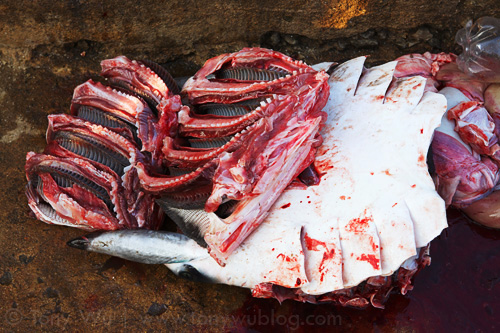 Gill rakers, extracted from a slaughtered Mobula Ray to cater to backward asians
[Source: ^http://www.tonywublog.com/tag/traditional-chinese-medicine#axzz2D5oERJh9] Gill rakers, extracted from a slaughtered Mobula Ray to cater to backward asians
[Source: ^http://www.tonywublog.com/tag/traditional-chinese-medicine#axzz2D5oERJh9]
.
The report says local traders are spruiking gill rakers as a way to boost the immune system, while others claim it can treat ailments like chickenpox and even cancer.>>
.
What Crap!
.
How to properly boost the human immune system:
.
According to the Harvard Medical School:
.
<<Our first line of defense is to choose a healthy lifestyle.
Following general good-health guidelines is the single best step you can take toward keeping your immune system strong and healthy.
Every part of your body, including your immune system, functions better when protected from environmental assaults and bolstered by healthy-living strategies such as these:
- Don’t smoke
- Eat a diet high in fruits, vegetables, and whole grains, and low in saturated fat
- Exercise regularly
- Maintain a healthy weight
- Control your blood pressure
- If you drink alcohol, drink only in moderation
- Get adequate sleep
- Take steps to avoid infection, such as washing your hands frequently and cooking meats thoroughly
- Get regular medical screening tests for people in your age group and risk category.>>
[Source: Harvard Medical School, USA, ^http://www.health.harvard.edu/flu-resource-center/how-to-boost-your-immune-system.htm]
.
So why do such backward asians perpetuate the dodgy ‘Gill Raker’ trade’?
.
<<Just in the last fifteen or twenty years we’ve seen a new market opening up for a product from the manta rays, whereas before they were never really fished in significant quantities.
This product is the actual mechanism inside the gills of both manta and mobula rays. This structure of the body is called the gill raker, which is the part of the gill that strains their food out of the water.
Now this gill raker is chopped out of the manta’s body and are then dried and exported to Asia and they are then bought and consumed in a broth with other ingredients. The main ingredient is the gill raker because it’s believed that this has some medicinal properties that can treat a variety of different illnesses.>>
.
Ed: Which is a lot of baloney.
.
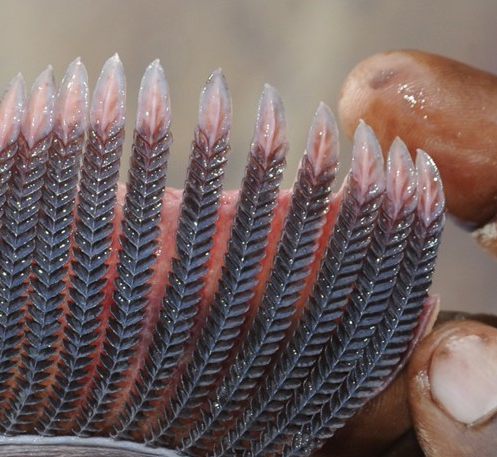 Gill rakers filter particles from water, allowing manta rays to feed.
Photo credit: Guy Stevens
[Source: ^http://conservationconnections.blogspot.com.au/] Gill rakers filter particles from water, allowing manta rays to feed.
Photo credit: Guy Stevens
[Source: ^http://conservationconnections.blogspot.com.au/]
.
It’s supposed to be a traditional Chinese medicine but there are no historical references to this remedy in the Chinese texts, so the term ‘traditional’ cannot directly be applied accurately.
But nevertheless this product is being marketed as such. From what we’ve been able to find from market research in China and Hong Kong, the marketing pitch is that manta rays are capable of filtering particles out of the water, therefore if you consume the rakers yourself, it will filter impurities from your body. And it’s thought that because of the increasing problems with bird flu, SARS, asthma from pollution, et cetera, this marketing pitch has tapped into people’s insecurities and they’re consuming the gill rakers when twenty years ago this was an unheard of remedy. Now of course there’s absolutely zero medical proof that it’s beneficial.
Murdoch University manta ray researcher Frazer McGregor said the increasing affluence of the Chinese market was driving demand in animal products and the manta ray had been affected. He said the danger to the species was intensified by its slow rate of reproduction.
Now, amid increasing international efforts to curb the decline, the Australian Government will today protect the species – found predominantly in the tropical waters of northern Australia – under national environment law.
Under the protections, the giant ray will be listed as a migratory species, making it an offence to take, trade, keep, or move the species from Commonwealth waters. Fishers will now also have to report any interactions with a giant manta ray as is the case with other protected species such as dugongs and whale sharks.
Environment Minister Tony Burke said while Australia’s populations of giant manta rays were fairly secure, globally the species’ numbers have declined 30 per cent. Last year, the giant manta ray was listed as threatened under the international Convention on the Conservation of Migratory Species.
”The giant manta ray is a highly migratory species – with some being known to travel more than 1000 kilometres – and threats often arise outside of protected areas,” Mr Burke said.
”For this reason, the Convention on the Conservation of Migratory Species and our national environment law are an excellent way to achieve international co-operation and co-ordination to better protect the species.’‘>>
.
[Source: ‘Chinese medicine proves disastrous for manta rays’, by Tom Arup, Sydney Morning Herald, 20121020, ^http://www.smh.com.au/environment/animals/chinese-medicine-proves-disastrous-for-manta-rays-20121019-27wrg.html]
.
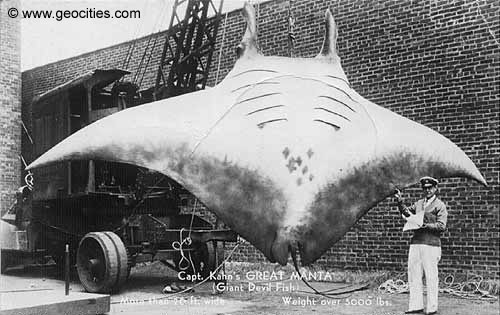 Poaching the Ocean’s Giants
This oceanic manta ray was caught off the coast of New Jersey in 1933.
It measured six metres from wing-tip-to-tip and weighed over 5,000 pounds.
Backward americans then branded them ‘giant devil fish’.
[Source: Manta Trust (UK), ^http://www.mantatrust.org/about-mantas/mantas-at-a-glance/] Poaching the Ocean’s Giants
This oceanic manta ray was caught off the coast of New Jersey in 1933.
It measured six metres from wing-tip-to-tip and weighed over 5,000 pounds.
Backward americans then branded them ‘giant devil fish’.
[Source: Manta Trust (UK), ^http://www.mantatrust.org/about-mantas/mantas-at-a-glance/]
.
Ed:
It is about time that the Australian Government formally outlawed the poaching of all Australian wildlife and outlawed the use or importation of any wildlife or their body parts.
It is also about time that the Chinese Medicine Board of Australia and the Australian Acupuncture & Chinese Medicine Association Ltd publicly renounce the use of wildlife parts across its entire practice.
.
 . .
 . .
Further Reading:
.
[1] ‘Manta Rays Under Attack – Will CITES Save the Manta?‘, 20121005, by Shawn Heinrichs, ^http://www.bluespheremedia.com/2012/10/manta-rays-under-attack-will-cites-save-mantas/
The following photos were taken at Raja Ampat Islands, located off the northwest tip of Bird’s Head Peninsula on the island of New Guinea, in Indonesia’s West Papua province, Raja Ampat. These photos are copyright of Shawn Heinrichs:
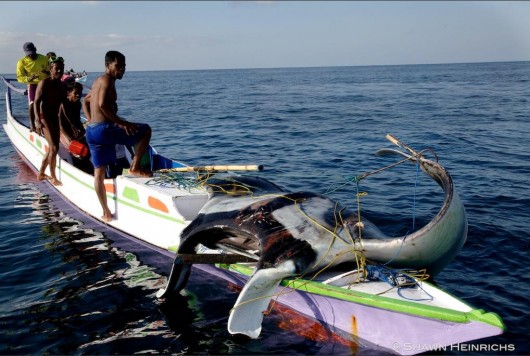
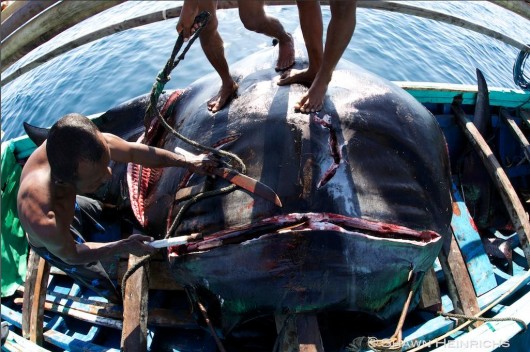 . .
 . .
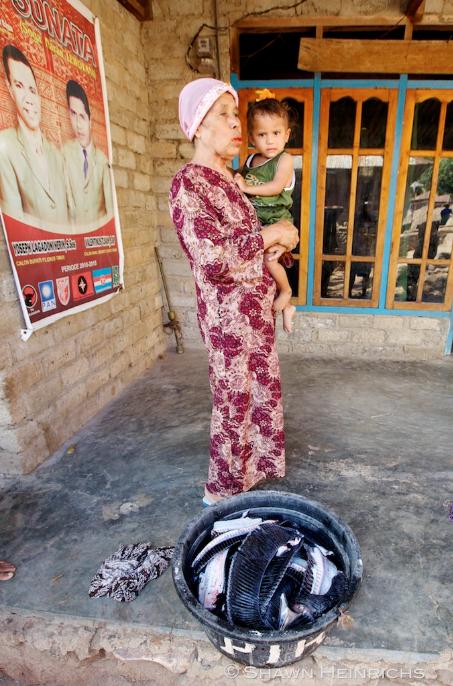 . .
 . .
[2] ^MantaRayOfHope.org
.
[3] ^WildAid.org
.
[4] ^SharkSavers.org
.
[5] ^ The Manta Trust
.
[6] ^Manta Fisheries
.
[7] ^Gill Raker Trade
.
[8] Animals Asia, ^http://www.animalsasia.org Go To: >Campaigns > ‘End Bear Bile Farming’
..
[9] ‘Bear gall bladder uses popular search term illegal activity‘, ^http://www.thirdage.com/news/bear-gall-bladder-uses-popular-search-term-illegal-activity_11-29-2010#ixzz16o2bZTKE
.
[10] ‘Bear Gall Bladders: Illegal And Ineffectual, But Lead Web Searches‘, 20101130, by Samantha Ellis, Global Animal, ^http://www.globalanimal.org/2010/11/30/bear-gall-bladders-illegal-and-ineffectual-but-leads-internet-searches/25331/
.
<<Bear gall bladders are dominating Internet searches and are widely used in ancient Asian medicines. However, not only is the trafficking and trade of bear organs illegal, but it has been found that the gall bladders have no medicinal purpose.
Why do people continue to slaughter endangered animals – tiger, rhino, bear – for small useless organs, when there is proven, legal medicine available? The world is too small to continue consuming these beautiful animals in the name of cruel tradition.’ For anyone trolling the internet and contemplating the galling act of buying a bear’s gall bladder on the black market, may we suggest going to a doctor to get something that works? Anybody involved in killing one of the last 3,200 wild tigers for ‘medicine,’ consider for a moment what you are doing to this iconic and disappearing species. And to those foolishly using Rhino horn as an ‘aphrodisiac,’ learn to love Viagra and make everybody, especially the rhino, happy! — Global Animal
Bear Gall Bladder uses is being searched widely on the internet giving the impression that many are curious about the use of this organ. However, trafficking or killing the animals for organ parts is illegal and should be discouraged.
The bear gall bladder has been used typically in ancient Chinese medicine. The bile stored in the bladder is said to cure several ailments and is used in anything from eye drops to pharmaceutical drugs.
The price for these organs ranges from $400 to $600 each. The practice of killing the bears and trafficking in their organs is highly illegal spurring an underground trade in the organs.
“There’s a hot black market for black bears,” Chinese officials say. “Like the drug trade, this business spawns a seamy underside of big money, international smuggling and murder. But unlike the drug trade, the illegal goods in this operation travel from west to east.”
Bear gall bladders have no proven medicial qualities.>>
.
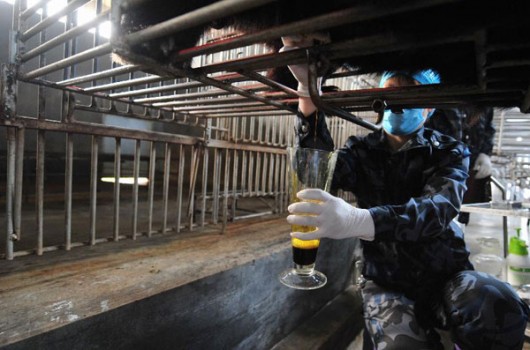 A staff member extracts bile from a live bear at a bear farm of Guizhentang Pharmaceutical Co. Ltd., which makes medicine by using bile extracted from live bears, in Hui’an, southeast China’s Fujian Province,Feb. 22, 2012. [Wei Peiquan/Xinhua],
^http://www.china.org.cn/opinion/2012-02/28/content_24750491.htm A staff member extracts bile from a live bear at a bear farm of Guizhentang Pharmaceutical Co. Ltd., which makes medicine by using bile extracted from live bears, in Hui’an, southeast China’s Fujian Province,Feb. 22, 2012. [Wei Peiquan/Xinhua],
^http://www.china.org.cn/opinion/2012-02/28/content_24750491.htm
.
Sunday, November 11th, 2012
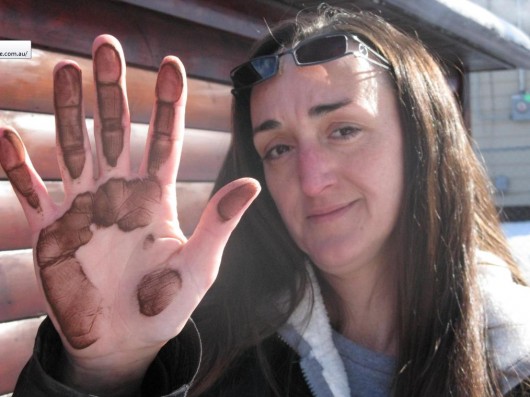 Lessons from coal mining destruction of the Appalachian Mountains and its people Lessons from coal mining destruction of the Appalachian Mountains and its people
2010 West Virginia, United States of America
.
<<Maria Gunnoe is a community member and organizer for the Ohio Valley Environmental Coalition. Here, she displays the coal dust wiped from Frankie Mooney’s garage in Twilight, West Virginia. The nearby blasting routinely fills the air with coal dust clouds, which then settle on buildings and turn air filters black. If Massey had its way, Twilight would become the next Lindytown – but Frankie’s property is closest to the company land and his refusal to sell protects the rest of Twilight from destruction.>>
[Source: ‘Stand with Coalfield Residents at Appalachia Rising‘, by ‘Carolyna’, 20100917, ^http://members.greenpeace.org/blog/carolyna/]
.
‘New report highlights health fears for Hunter Valley’
[New South Wales, Australia]
[Source: ‘New report highlights health fears for Hunter Valley’, 20121029, Australian Broadcasting Corporation, ^http://www.abc.net.au/news/2012-10-29/new-report-highlights-health-fears-for-hunter-valley/4338446]
.
 A Dickensian Industry
[Source: The 2012 London Olympics, ^http://www.mirror.co.uk/news/uk-news/london-2012-opening-ceremony-opinion-1176668] A Dickensian Industry
[Source: The 2012 London Olympics, ^http://www.mirror.co.uk/news/uk-news/london-2012-opening-ceremony-opinion-1176668]
.
<<Health authorities are coming under pressure to properly investigate the health impacts of mining on Australia’s largest coal mining region, in the New South Wales Hunter Valley.
It comes after new research showing a link with increased death rates and disease in some other countries.
Sydney University’s Associate Professor Ruth Colagiuri analysed research from 10 countries including the USA and the UK. She says coal mining communities there had elevated rates of cancer and higher death rates from illnesses such as heart, lung and kidney disease. Birth defects were also more prevalent.
 Deadly Coal Dust Deadly Coal Dust
.
Professor Colagiuri:
- There are clear indications of serious health issues associated with coal mining and coal-fired power plants for surrounding communities. But.. there has been no such research done in the Hunter Valley.
- We have very little in Australia on the health harms at all. I guess until we have our own studies we don’t know for sure but it would be silly to think that some of the evidence is not applicable here, particularly if it’s not from the countries that are more applicable to Australia, culturally and economically.
- It is time to gather the evidence, so (that) judgments can be made…about whether the harms we’re finding in the international literature do apply to Australia.
.
The Cancer Council’s head Ian Oliver agrees: “The people who live in these areas need to be aware of whether the same thing applies here,” he said.
Sydney University’s independent research was commissioned by environmental group, Beyond Zero Emissions.
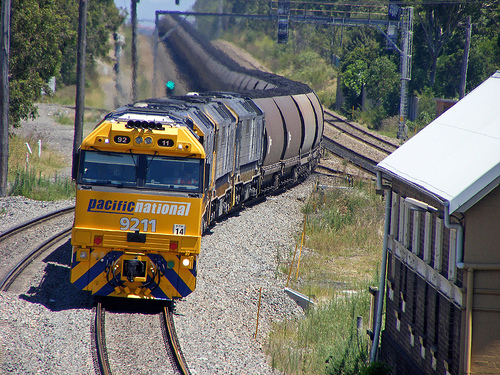 Hunter Valley Coal Train
[Source: Photo by Vince Wang
^http://www.railpage.com.au/f-t11342636-s30.htm] Hunter Valley Coal Train
[Source: Photo by Vince Wang
^http://www.railpage.com.au/f-t11342636-s30.htm]
.
The Chairman of a Hunter Valley health lobby group has described as ‘unconscionable’ the lack of research by both State and Federal Governments into the health impacts of mining.
Dr John Drinan from the Singleton Shire Healthy Environment Group says the latest report just reinforces what Hunter mining communities have been calling for.
“It really is unconscionable that governments have allowed this sort of thing go on for years knowing full well there are implications of coal mining on health,” he said.
“Here we are in the Hunter Valley generating billions of dollars a year for the Government coffers, yet they’ve seen no need to put any effort back into finding out whether this has any deleterious impacts on our health.”
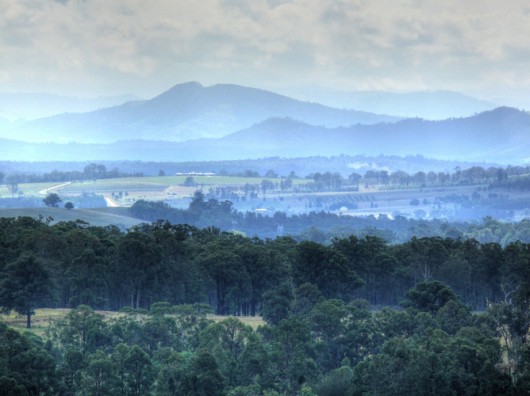 Coal mining in NSW’s Hunter region co-exists with wine growing, racehorse breeding, dairy and other pastoral industries.
[Photo by Jo Schmaltz]. Coal mining in NSW’s Hunter region co-exists with wine growing, racehorse breeding, dairy and other pastoral industries.
[Photo by Jo Schmaltz].
.
‘Research needed into Hunter’s coalmines’
[Source: ‘Research needed into Hunter’s coalmines’, by Ian Olver, The Herald (newspaper), 20121102, ^http://www.theherald.com.au/story/524537/opinion-research-needed-into-hunters-coalmines/]
.
Cancer Council Australia chief executive, Professor Ian Olver:
<<I did not expect the lecture room at the University of Sydney to be overflowing for the release of a report on the impact of coalmining. But it was.
The group Beyond Zero Emissions had commissioned Ruth Colaguiri’s group at the university to review all the research in Australia and overseas on the effect of coalmining on local communities. They were particularly worried about the Hunter Valley – and with reason.
.
The population of 700,000 lives in a region that has more than 30 open-cut coalmines and six coal-fired power stations.
.
As I left the launch of the report I fell into step with a person from the area. He told me his village was next to go. An open-cut mine was coming.
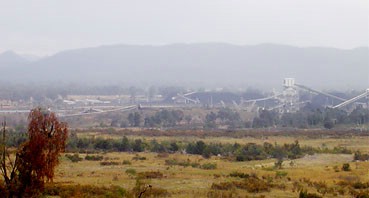 Dust clouds the view of the Ulan Mine conveyor belts
(North west of Mudgee, NSW) Dust clouds the view of the Ulan Mine conveyor belts
(North west of Mudgee, NSW)
.
I asked about compensation, but, more resigned than angry, he told me that he was to receive none. He couldn’t sell, because who would buy with the mine approaching?
A mine worker for years, he would have to stick it out on his few acres growing grapes with an open-cut mine for a neighbour, located within a few kilometres.
The University of Sydney researchers reviewed 38 studies:
.
‘Data from Appalachian coalmining counties in the United States or areas in Nova Scotia, Canada, most nearly paralleled local conditions. Adults living in coalmining communities had higher rates of lung, heart and kidney disease and lung cancer. Hospitalisations for chronic lung disease increased with the amount of coal mined…’
.
Children had more asthma and higher levels of lead and cadmium in their blood. There was a higher incidence of some birth defects.
It was a similar story for those living near coal-fired power stations, with adults having a higher death rate from cancers of the lung, head, throat, bladder and a higher incidence of skin cancer and children have more breathing difficulties. They also reported more miscarriages. People living in these areas score lower on assessments of their quality of life.
Why would these illnesses occur?
Each stage of coal production – mining, transport, washing, burning the coal and disposing of the waste products – releases particles into the environment that have the potential to cause harm if the level of exposure is high and prolonged. Burning coal makes a contribution to greenhouse gases. Waste products including heavy metals have the potential to contaminate the water supply.
So what about in the Hunter Valley? Are the same health problems reported there?
We don’t know. The detailed research needed has not been done. The main thrust of the report is that we need to collect evidence so the extent of the health impact is known. Anecdotes are not sufficient. But the overseas studies give us a strong reason to push for local studies.
What we do know is that 16% of the Upper Hunter Valley consists of open cut coalmines and massive expansion is planned. It is only recently that the NSW Government has set up a network of stations to monitor particle pollution of the air. To be most valuable they will need to report each occasion when particle levels exceed acceptable limits and how frequently, rather than averages.
The report went further than documenting the health and environmental impacts of living near coalmines and coal-fired power stations. It also documented the adverse social impact on the surrounding communities.
This time there were studies from the Hunter Valley.
.
‘There is an injustice if people do not know the potential extent of the environmental damage, poor air and water quality and how it may damage their health.’
.
However, we need to know details about the levels of exposure to pollutants from mining in the Hunter and whether they are causing an increase in illness before we can ask the governments or the industry to increase protection. Communities become distressed by being disempowered and not being able to influence the changes that are reducing their living standards, and influencing their access to natural resources.
There is no doubt about the need for power production, but this needs to be balanced against harms to local communities. Diseases such as lung cancer are difficult to treat and we must seize upon any opportunity for prevention. Individual stories may raise awareness, but advocacy for change must be based on solid evidence and we must do the Australian research into the health impacts of coalmining on local communities to help us achieve a just balance.>>
.
Black Lung – centuries change but Coal Dust doesn’t
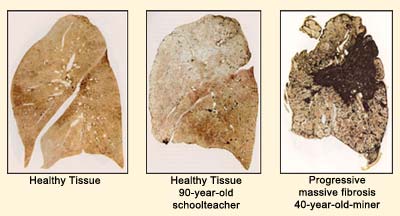 <<‘Black Lung’ is a legal term describing a preventable, occupational lung disease that is contracted by prolonged breathing of Coal Mine Dust. Described by a variety of names, including: <<‘Black Lung’ is a legal term describing a preventable, occupational lung disease that is contracted by prolonged breathing of Coal Mine Dust. Described by a variety of names, including:
- Miner’s Asthma
- Silicosis
- Coal Workers Pneumoconiosis
- Black Lung
.
.. all are all dust diseases with the same symptoms.
.
Like all occupational diseases, black lung is man-made and can be prevented. In fact, the U.S. Congress ordered Black Lung to be eradicated from the coal industry in 1969. Today, it is estimated that 1500 former coal miners each year die an agonizing death in often isolated rural communities, away from the spotlight of publicity.>>
[Source: United Mine Workers of America,^http://www.umwa.org/?q=content/black-lung]
.
 Protesters on horseback take to the streets in November 2009 to voice concerns over the proposed Bickham coal mine (Hunter Valley)
Friends of the Earth Sydney congratulates Pages River and Tributaries Water Users Association and Rivers SoS Alliance in their successful campaign to stop the proposed Bickham open-cut coal mine and save the Pages River (near Scone in the NSW Hunter Valley). Protesters on horseback take to the streets in November 2009 to voice concerns over the proposed Bickham coal mine (Hunter Valley)
Friends of the Earth Sydney congratulates Pages River and Tributaries Water Users Association and Rivers SoS Alliance in their successful campaign to stop the proposed Bickham open-cut coal mine and save the Pages River (near Scone in the NSW Hunter Valley).
[Source: Friends of the Earth Sydney,
^http://www.sydney.foe.org.au/news/nsw-government-rejects-coal-mine-first-time-ever]
.
‘Coal industry thriving, but at what social and health cost?’
[Source: ‘Coal industry thriving, but at what social and health cost?’, by Ruth Colagiuri, Emily Morrice, The Conversation, 20121102, ^http://theconversation.edu.au/coal-industry-thriving-but-at-what-social-and-health-cost-9266]
.
<<If you believe industry propaganda, coal mining is a panacea not only for economic ills but also for smoothing troubled social waters. But a lack of local evidence about the health impact of the coal industry should give us all cause for thought.
With the highest density of coal mining activity close to towns and farms in Australia (well over 30 operating mines and six active coal-fired power stations, and the largest black coal exporting port in the world), many Hunter Valley residents remain unconvinced. Less than a two-hour drive north of Sydney, in one of the largest, most fertile, beautiful river valley systems in Australia, the Hunter region’s long tradition of coal mining has co-existed for many decades in balance with wine growing, racehorse breeding, dairy and other pastoral industries.
But the seemingly indiscriminate granting of mining licences by the previous state government (and little abatement likely under the current government) has put a major strain on relations between the mining industry, other local industries and the citizenry.
This is unsurprising considering inequities such as water rights favouring the coal industry over local farmers, the removal of local government input from the coal mine licensing process, and concerns about the transgenerational effects of irreparable environmental damage.
And then there’s health. Ongoing concerns and myriad anecdotal reports of serious health impacts have been expressed by both local communities and health professionals, and echoed by organisations such as Doctors for the Environment. But there’s virtually no hard evidence in the peer-reviewed literature to confirm or deny the negative health impacts on communities near coal mines or coal-fired power stations in Australia.
Such evidence is available in other countries and is summarised in a new independent report that cites 50 articles exploring the health and social harms of coal on community health from 13 countries. And it’s not pretty.
.
Health and Social Harms of Coal Mining in Local Communities:
.
Spotlight on the Hunter Region cites excess deaths from lung cancer, chronic heart, respiratory and kidney disease related to living near coal mines. The evidence is mostly from the United States and often features a dose-response effect related to coal quantity or surface area of the mine. Other effects include high blood levels of heavy metals in children, and higher rates of birth defects.
Living near coal combusting power plants is associated with excess death – in this case from lung, laryngeal and bladder cancer. Respiratory complaints, increases in non-melanoma skin cancers, still births and miscarriages are also reported.
So how alarmed should Australians be? The problem is we don’t really know. Mining methods, practices and regulatory controls vary across countries and may account for some of the reported health effects. As may factors such as difficulties in accurately measuring exposures to toxins and particulate matter in air pollution.
Despite these limitations, it would be irresponsible to ignore the possibility that some of the effects demonstrated in similar countries are likely to apply here.
The lack of local evidence in itself is alarming – particularly at a time when NSW Health is believed to be investigating a cancer cluster in the Illawarra mining region of the state. Six children living in close proximity are said to have developed either leukaemia or a lymphoma in the past five years.
A report by the Australia Institute and many other technical reports on the coal industry point out that externalities are rarely included in cost estimates of the benefits and harms of coal extraction and combustion. These factors include environmental damage, social costs such as tax subsidies to the industry (of up to $10 billion annually) and health harms estimated by the Australian Academy of Technological Sciences and Engineering(ATSE) at $2.6bn annually.
Nonetheless, major developments in the coal mining industry are underway. Massive expansion of the port of Newcastle – already the world’s biggest black coal exporting port – is in planning stages. Commonly referred to as the “T4” Project, Port Waratah Coal Services propose expanding their Kooragang terminal in Newcastle in order to increase coal exports by up to 120 million tonnes a year.
 CNA Coal, Muswellbrook
Hunter Valley CNA Coal, Muswellbrook
Hunter Valley
.
Further coal port expansions are also planned by North Queensland’s Bulk Ports Corporation’s at Dudgeon Point, south of Mackay, and Rey Resources are planning their “Duchess Paradise” coal mine, which lies on a coal reserve estimated at 500 million tonnes near the Fitzroy River in the Kimberley, Western Australia.
But we have a glaring absence of local evidence to determine what impacts these projects will have on the health of surrounding communities. Surely such evidence should play a role in policy and planning of the expansion of Australia’s coal industry. It would also help us, as a society, to make up our minds about what we value more – money or our people and the planet that sustains us.>>
.
 . .
‘Coal is killing Australia’, new book reveals’
[Source: ‘Coal is killing Australia’, new book reveals’, By Christa Schwoebel, 20120527, ^http://www.greenleft.org.au/node/51154]
.
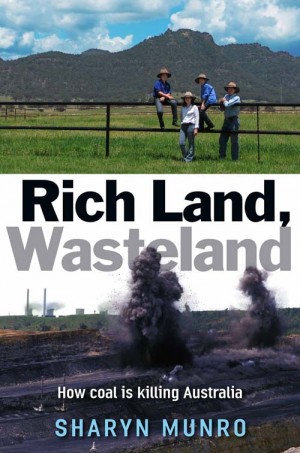
‘Rich Land, Wasteland’
book by Sharyn Munro
Exisle Publishing & Pan Macmillan
453 pages, pb, $29.99
^http://www.exislepublishing.com.au/Rich-Land-Wasteland.html
.
<<When a coalmine starts up near a township, a village or a farm it is to be expected that lives will change.
Indeed change is often promised and welcomed ― more Jobs, more money flowing into the community, better roads and services. In short, progress is promised.
The reality, however, is that not only do the benefits not evolve as the mines begin their operations, they destroy the land, pollute the water and air, erode people’s physical and emotional health and rip up the social fabric.
The media lead us to believe that Australia’s wellbeing depends on the mining sector. The more minerals that are exported, the healthier the Australian economy is and the better off we are. But such stories hide the real impacts of mining from most Australians.
Sharyn Munro puts aside “the diversionary cloud of spin” and tells the real story of coal mining. A resident of the upper Hunter who saw the coal mines taking over vast tracts of that valley, she spent a year travelling to the different parts of Australia where coalmining is destroying communities, livelihoods and ecosystems.
She found that “coal is killing Australia”.
Meeting victims of the industry in NSW, Queensland, Victoria, in WA and Tasmania, she records their stories. In Rich Land, Wasteland, she lets them tell their side of the story.
They tell us that there is “a war taking place in Australia”. It is an invasion where “the invaders are mostly foreign or multinational”. It looks like the second invasion of the continent.
The victims of this war, the people harassed and displaced by the mines, are fighting the invasion and mostly they have been fighting alone. They live in smaller communities or on the land, isolated from neighbours by distance and by the mines’ strategies of divide and take over.
All are deeply shocked by the lack of support from the governments and the legal system.
With their health, properties and livelihoods on the line, they try to stand up against the wealthy opponents.
The “warring sides are more unevenly matched than any David and Goliath cliche can convey”, the book says. Most of them have taken the fight up reluctantly. But if they are not despairing early on, they get increasingly incensed by the injustice they experience.
All are disillusioned, if not deeply depressed, by the failure of democratic processes.
Occasionally, they win a small concession ― only to be wiped out again by the mining companies’ blatant disregard of the conditions placed on their operations or by changed government regulations.
Where the invasion has been beaten off, as in the Margret River region in WA, the attackers regroup a short distance away, where they hope resistance will be weaker.
Each of the individual stories Munro presents is underpinned with meticulously researched facts and figures. Judiciously inserted at relevant points, these expand the anecdotal evidence into a systematic documentation of the true impact of coalmining.
In some sections, the seemingly obvious becomes a revelation.
.
Take the impact of dust:
.
From the blasting and machinery working in open cut mines, to vast piles of overburdened, uncovered coal trains up to two kilometres-long on their way to the ports and fly-ash from the coal power stations, it negatively affects the health of people, animals and plants.
The dust consists of smaller and larger particles of lead, arsenic and mercury, which are inhaled and ingested by animals and humans. Its role in higher rates of health problems such as asthma have been proven, yet the government does not act.
Contrary to the findings and advice of medical experts, governments assures residents they have nothing to fear. In 2010, the Independent Review of Cumulative Impacts on Camberwell (Hunter) “dismissed fears mines are making people sick”.
The report advised people to stay inside, close doors and wear masks, put on air-conditioners and seek medical advice.
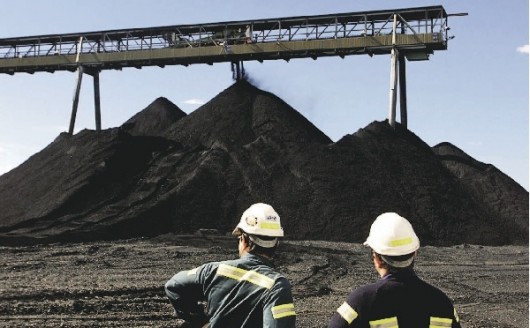 . .
Conditions placed on mining operations, such as to reduce dust, are hardly ever monitored ― except by the mining companies themselves. Their results never surprise.
There are many more, widely varied aspects to this war. These include issues such as ownership of mines and who benefits, the fast and huge expansions of coal mining as well as coal seam gas exploration and extraction, collusion of mine operators and government agencies, strategies applied to move people out of the way of mines, the impact of the predominantly male fly-in-fly-out workforce, higher road traffic, new exclusive rail lines and shipping in the Great Barrier Reef.
Everywhere there is environmental destruction, a lack of ― indeed the impossibility of ― site rehabilitation, and water depletion and water contamination. Everywhere, it poses the question: how can this happen in a democratic country such as Australia?
With so many details, an index would help reading and following up on some facts. The subheadings to the chapters that list locations help only to a point. I would have liked a list of acronyms and some maps.
However, when turning to the internet to look for the locations, I found that satellite maps gave extra insights into the vast onslaught of coal mines on the country.
Reading this book, veil after veil is lifted, revealing the reality of Australia today. It could be a deeply depressing book, if it weren’t for the encounters with many individuals who are standing up and speaking out.
As one says, “you must fight or nothing happens”. Munro encourages the readers to add their voices, stop the plunder and “speak up for the smart, sustainable and humane Australia we could be instead” ― the country worth fighting for.>>
.
 Government vested interest in Coal Mining
‘In 2008-09 the royalty revenue generated by the NSW minerals sector was $1.28 billion, with coal accounting for approximately 95% of the total.’
[Source: New South Wales Government, Division of Resources and Energy – Minerals and Petroleum,
^http://www.resources.nsw.gov.au/resources/royalty, website accessed 20121111] Government vested interest in Coal Mining
‘In 2008-09 the royalty revenue generated by the NSW minerals sector was $1.28 billion, with coal accounting for approximately 95% of the total.’
[Source: New South Wales Government, Division of Resources and Energy – Minerals and Petroleum,
^http://www.resources.nsw.gov.au/resources/royalty, website accessed 20121111]
.
‘Hunter coal mine fined for dust emissions‘
[Source: ‘Hunter coal mine fined for dust emissions’, by Cole Latimer, Safe To Work, 20120524, ^http://www.safetowork.com.au/news/hunter-coal-mine-fined-for-excessive-dust]
.
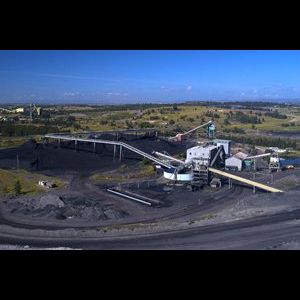
<<Rio Tinto’s Mt Thorley Warkworth coal mine has been fined by the NSW Department of Planning and Infrastructure after failing to minimise dust emissions.
A (paltry) $3000 fine was issued after an investigation into “significant dust emissions from the Mt Thorley Warkworth mine on Sunday 13 May,” the Department says.
The miner has been warned that “further breaches for dust emissions are likely to attract stronger enforcement action by the Department, including the potential for criminal proceedings in the Land and Environment Court”.
In January the mine came under fire for the placement of its water fill points, which reduced the effectiveness of the water cart fleet and its dust reduction activities.
Rio stated that this issue had been identified in 2010, and it had since secured funding to solve the problem, with the initial two fill points commissioned in December 2011, and the remaining three in February.
These new fill points are predicted to cut fill times by up to 15 minutes, while the storage capacity of each point has also been increased to enable continuous refills.
Rio stated that an early warning system for faults had been installed as well as automatic cut off.
It also received a number of noise complaints in January, accounting for 85% of submitted complaints.
According to the Department, breezes and low cloud cover contributed to noise transfer from the mines.
The Department’s executive director for major development assessment, Chris Wilson, said the mine has now failed to minimise offsite dust emissions and had not suspended or modified operations.
“Both the Upper Hunter Air Quality Network and the mine’s own real-time air quality monitor showed a spike in dust levels above the permitted 24 hour average,” Wilson said. “Our investigations have indicated that the mine’s air quality and dust mitigation measures required under the mine’s planning approval, were not adequate on that day.”
While the complaints occurred over a weekend, an officer from the nearby Singleton compliance unit was able to immediately attend the mine; Wilson adding that “the compliance officer observed that the mine was continuing to operate a dragline and excavator, despite dust being generated.
“These activities should have been suspended by the mine in the windy conditions.”
Under its existing operating approvals, the mine has to ‘implement best management practice to minimise odour, fume, and dust emissions’.
“This includes commitments by the mine to minimise wind-blown and traffic generated dust from coal handling and coal stockpiles, using water sprays on coal stockpiles to reduce airborne dust and using water trucks to minimise dust on roads. “The inspection found these commitments were not being complied with on 13 May,” Wilson said.
“Consequently large volumes of dust from mining operations flowed across the Putty road and the dust was also visible from the Golden Highway,” he added. “The decision to issue a penalty notice to the mine follows two previous warning letters last year in relation to dust.”>>
.
 . .
‘Foreign investors sow deep roots in food bowl’
[Source: ‘Foreign investors sow deep roots in food bowl’, by Leonie Lamont, Sydney Morning Herald (newspaper), 20110730, ^http://www.smh.com.au/nsw/foreign-investors-sow-deep-roots-in-food-bowl-20110729-1i4ar.html]
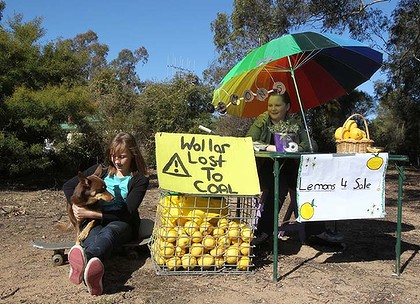 Sour taste … Ruby Marshall (age 12), and her sister April (age 11)
Display an anti-mining sign at their lemon stall in the former farming village of Wollar
(Photo by Peter Rae) Sour taste … Ruby Marshall (age 12), and her sister April (age 11)
Display an anti-mining sign at their lemon stall in the former farming village of Wollar
(Photo by Peter Rae)
.
<<Mining and energy companies have bought more than 35,000 hectares of rural land in NSW in the past year, in a scramble with foreign investors in agriculture to snap up prime sites.
A Herald review of land sales found the mining interest was focused on a swath of rural land extending from the Upper Hunter through the rich Liverpool Plains to Narrabri. Mining companies spent more than $85 million buying 27,500 hectares in this area – nearly 80 per cent of the total bought.
Community agitation about the collision of farming and mining interests has risen with miners’ purchases including $14 million paid by Coalworks for Kurrumbede, the family property of poet Dorothea Mackellar, near Gunnedah.
The miners’ outlay of $113 million is challenging overseas investment in agriculture, which amounted to $125 million in the past year, buying 225,000 hectares. Despite the soaring dollar, Australia’s openness to foreign investment has made it an attractive destination for miners as well as investors and sovereign wealth funds seeking to exploit the growing demand for agricultural produce.
Chris Meares, a land agent and rural property expert, said over the past year the main ”buying power” had been institutions, corporates and mining companies – many foreign-owned.
”In the last two years, credit has got very difficult to obtain in Australia,” he said. ”Initially [after the global financial crisis] the overseas investors said the dollar was too high, but then they saw some very good investment opportunities sitting there. Commodity prices were strong and there was little opposition from Australian investors, so they could come in and buy assets globally at very cheap rates. That’s what’s happened.”
The mining boom in NSW is underpinned by prices for thermal and coking coal, which have jumped almost 60 per cent over the past five years. Export prices for liquefied natural gas – which are driving the coal seam gas boom in Queensland and NSW – have risen 36 per cent in five years and are still rising.
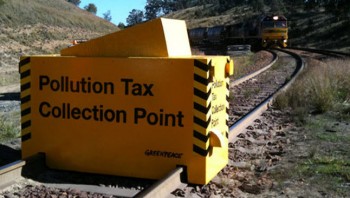
Mining companies said it was wrong to assume the sales meant the land was excised from agricultural use. Aston Resources said its 2800 hectares near Tamworth, which it bought for $4 million, would not be mined as it was an environmental offset – high value native trees and grassland next to the Mount Kaputar National Park, and cleared grazing land that would be leased to the original farming owner.
But Bruce Marshall, who moved to the former farming village of Wollar 20 years ago, said expansion by the mining giant Peabody Energy there had ”split the community”. Anti-mining signs adorn his fence and the fresh lemon stall run by his daughters April, 11, and Ruby, 12, beside the road to the mine site2.
This month, the NSW government set new environmental and consultative conditions for miners and extractors.
The NSW Minister for Resources and Energy, Chris Hartcher, said there had been a ”changed paradigm” that people had to acknowledge but residents and mining companies needed to know what the rules were.
”If it is essential to protect water or Prime Agricultural Land. We will not shy away from making the decision it is inappropriate [to mine] in these areas.”
The Herald used RP Data, a property information system, to review sales of more than 250 hectares during the past year. The review did not cover purchases by individuals – typically farming families – and small companies associated with them.
The biggest mining spender was Shenhua Watermark, majority owned by the Chinese government, which spent $26.5 million on 2700 hectares in the Gunnedah area. It has spent more than $200 million acquiring land for its planned $1.7 billion open-cut coal mining operation.>>
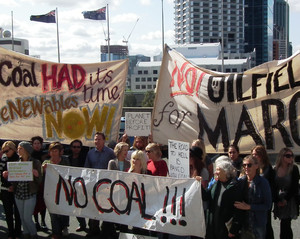 . .
‘Cancer concern for people surrounded by coal mines’
[Source: ‘Cancer concern for people surrounded by coal mines’, by Richard Noone, The Daily Telegraph, 20121030, ^http://www.news.com.au/national/cancer-concern-for-people-surrounded-by-coal-mines/story-fndo4bst-1226505615788]
.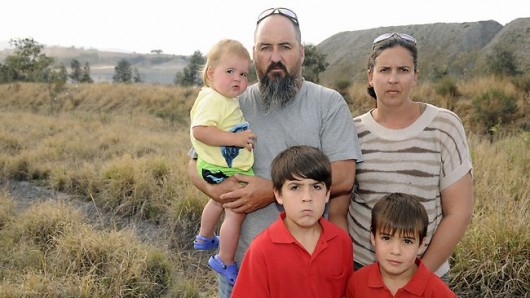 Jason and Belinda Passlow with children Harrison, Lachlan and William in Bulga (Hunter Valley)
(Photo by Waide Maguire, The Daily Telegraph) Jason and Belinda Passlow with children Harrison, Lachlan and William in Bulga (Hunter Valley)
(Photo by Waide Maguire, The Daily Telegraph)
.
<<People surrounded by coal mines in the Hunter Valley could be at more risk of cancer, heart, lung and kidney disease and birth defects.
A new report has found serious illnesses were rife in communities near mines overseas. The report calls for an urgent health impact study in the Hunter after analysis of 50 peer-reviewed research papers from 10 countries, including the US, the UK and China, found a wide range of adverse health effects in those living close to mines.
Lead author, Sydney University associate professor Ruth Colagiuri, said similar studies in Australia’s largest coal mining region were needed “so governments and community can make informed decisions and develop policies to minimise health harms”.
The study – Health and Social Harms of Mining in Local Communities: Spotlight on the Hunter Region – was commissioned by Beyond Zero Emissions. “With plans for 30 new or bigger coal mines, an independent authority is urgently needed to monitor emissions in the region and for an in-depth health study to take place,” BZE spokesman Mark Ogge said.
Mother-of-four Belinda Passlow said her two eldest children, Eleanor, 14, and Lachlan, 10, developed asthma after moving to Bulga, a village near four open cut mines in the Upper Hunter. She said they were forced “like most people around here” to put up with constant dust.>>
.
‘Stand with Coalfield Residents at Appalachia Rising (USA)’
[Source: ‘Stand with Coalfield Residents at Appalachia Rising’, by ‘Carolyna’, Greenpeace (USA), 20100917, ^http://members.greenpeace.org/blog/carolyna/]
.
Appalachia Rising is three days of coalfield residents and activists from across the country standing together for an end to Mountain Top Removal (MTR), an extremely destructive form of mining where the tops of mountains are blown off to extract the coal seams below.
I saw firsthand the effects of MTR on Appalachian communities while visiting Rock Creek, West Virginia (USA) this past January. Below is a selection of photos that my friend, Phoebe Neel, and I shot while bearing witness to the destruction.
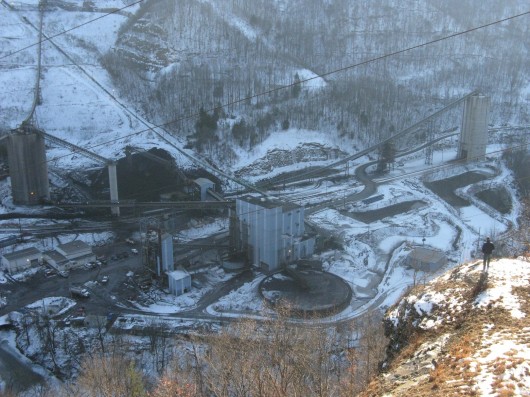 Goals Coal Plant in WV, owned by Massey Energy Goals Coal Plant in WV, owned by Massey Energy
.
This behemoth of a complex owned by Massey Energy contains the Goals Coal Processing Plant.
Above it, sits the Shumate Coal Sludge Impoundment Pond, which contains 2.8 billion gallons of toxic coal waste. Beyond that is the Edwight Mountain Top Removal site, whose blasting puts the dam at risk of failing.
Also out of the picture is Marsh Fork Elementary, which would be wiped out if such a failure were to occur. Thankfully, the community won a six year fight this past April to build a new school, which will break ground next year.
Just realized that most of my description was for what is NOT shown in this photo. It says something when you need to be that high up to see the extent of the problem.
.
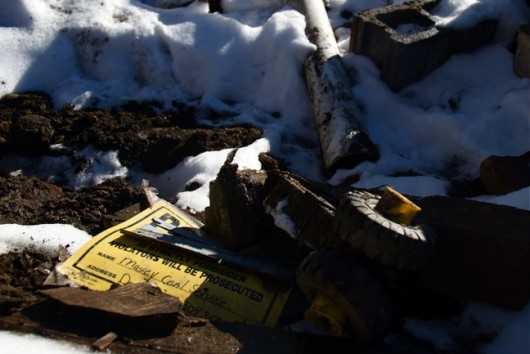 Massey Energy Notice
(Photo by Phoebe Neel) Massey Energy Notice
(Photo by Phoebe Neel)
.
A ‘No Trespassing’ notice from Massey Energy in the rubble of a demolished house. Massey bought out the residents of Lindytown, West Virginia (USA) one by one so the company could level the town and expand the mountaintop removal site that borders it. Saying the residents had a choice in the matter is a farce – with the noise, dust, and polluted well water that comes with MTR, you trade your health for your home.
.
 Demolished home in Twilight, West Virginia Demolished home in Twilight, West Virginia
.
This is a wider shot of Lindytown, which shows three homes that have been bulldozed. Surveying the scene, I remember thinking that it could’ve been the site of a natural disaster – a storm that had decimated the neighborhood. However, this was caused by man and was just a precursor to the much wider destruction of themining to come. Nothing would be rebuilt; those concrete steps would always lead to nowhere.
The next two photos should be looked at as a pair.
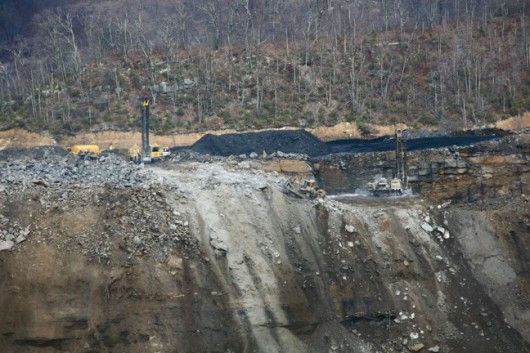 Bee Tree site
(Photo by Phoebe Neel) Bee Tree site
(Photo by Phoebe Neel)
.
This one is of the Bee Tree site in Pettus, West Virginia (USA) and the huge earth-moving machines that are used to extract the exposed coal. The striking thing about this for me is that all the rubble is refered to as “fill,” which companies like Massey dump into neighboring valleys, burying streams and polluting drinking water.
.
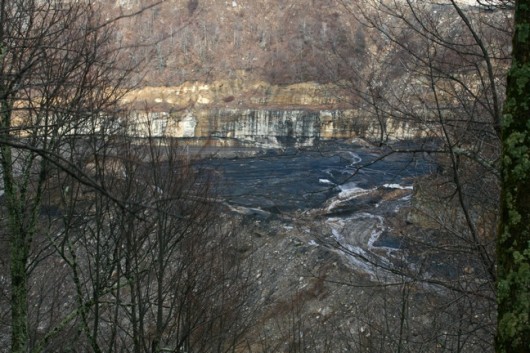 Brushy Fork Impoundment
(Photo by Phoebe Neel) Brushy Fork Impoundment
(Photo by Phoebe Neel)
.
This last photo is of the Brushy Fork Impoundment, which at 8.2 billion gallons, holds much more coal waste than the Shumate Impoundment. However, it has one important thing in common – it’s also located close to an MTR site, where blasting can affect its structural integrity. It lies less than half a mile away from the Bee Tree site. Marfork Coal, a subsidary of Massey Energy, estimates a dam failure could cause a wave of coal sludge as high at 72 ft.
This is just a small selection of what I witnessed in West Virginia. And when you come to DC for Appalachia Rising, you won’t see any of these scarred landscapes. But what you will see are more people like Maria Gunnoe – people who refuse to give up and instead are rising up.
.
Coal Bin Flag
. 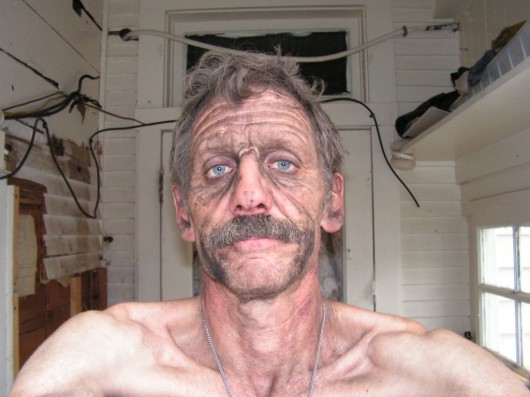 Coal Dust Victim Coal Dust Victim
.
<<The dirtiest part of resurrecting this old house was cleaning the Coal Bin.
If you’ve never been in a Coal Bin, you may not have a sense of how coal dust can get everywhere. I mean ev-er-y-where. Coal dust is insidious. It gets everywhere on your body – even in places you didn’t know you had places. And it instantly goes airborne when disturbed from its decades-long slumber.
A normal shop vacuum filter has no use in this environment. Coals dust passes right through the filter. The only way to capture the dust is with one of the expensive filters.
Our coal bin took two days to clean and dismantle.
The best part about the job was finishing. The second best part was this old flag.
This 48 star flag is easy to date. Arizona, our 48th state was added in 1912, roughly four years after Harry & Carrie Benham built this great old house. It was replaced by our current 50 star flag in 1960 when Alaska and Hawaii were added to the Union. So in 2007 when I found this flag in the coal bin it was between 47 and 95 years old.
I can’t narrow it down any more than that, but I like to imagine the flag was placed there about the time the old coal burner furnace was converted to gas – maybe in the 1950s.>>
[Source: ^http://residencehill.blogspot.com.au/2012/03/coal-bin-flag.html]
.
 ‘Devil’s Dust’ – past decades of asbestos fibre exposure are being repeated with coal dust exposure
..it’s just that the law hasn’t caught up yet. ‘Devil’s Dust’ – past decades of asbestos fibre exposure are being repeated with coal dust exposure
..it’s just that the law hasn’t caught up yet.
.
Tags: Appalachia Rising, Appalachian Mountains, Black Lung, Cancer Council Australia, Chris Hartcher, Coal Dust, Coal Mining, Coal Workers Pneumoconiosis, Coalfield Residents, coalmines, devil's dust, Edwight Mountain Top Removal, food bowl, Goals Coal Processing Plant, Greenpeace, Hunter Valley, lung disease, Massey Energy, Miner's Asthma, mining royalties, Ohio Valley Environmental Coalition, Prime Agricultural Land, Shenhua Watermark, Shumate Coal Sludge Impoundment Pond, Silicosis, Singleton Shire Healthy Environment Group, Wollar
Posted in Threats from Mining | No Comments »
Add this post to Del.icio.us - Digg
Thursday, November 8th, 2012
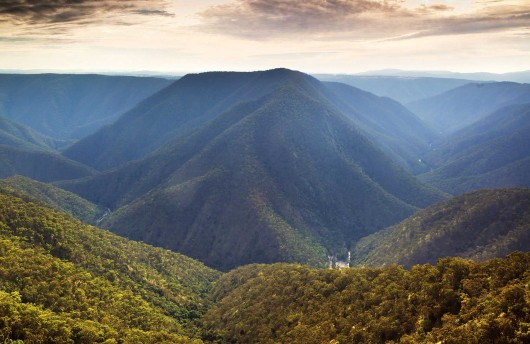 Oxley Wild Rivers National Park
Click image to enlarge
Inscribed on the asset register of World Heritage sites in 1994…but how much has been wiped out by October’s bushfires?
[Photo Source: New South Wales Government,
^http://www.nationalparks.nsw.gov.au/oxley-wild-rivers-national-park/travel-info] Oxley Wild Rivers National Park
Click image to enlarge
Inscribed on the asset register of World Heritage sites in 1994…but how much has been wiped out by October’s bushfires?
[Photo Source: New South Wales Government,
^http://www.nationalparks.nsw.gov.au/oxley-wild-rivers-national-park/travel-info]
.
 Location of Oxley Wild Rivers National Park
Click image to enlarge – note the patchy dark green of remnant forests Location of Oxley Wild Rivers National Park
Click image to enlarge – note the patchy dark green of remnant forests
[Source: Satellite Map – Google Maps]
.
The ‘Macleay River’ Bushfire (Oct 2012)
.
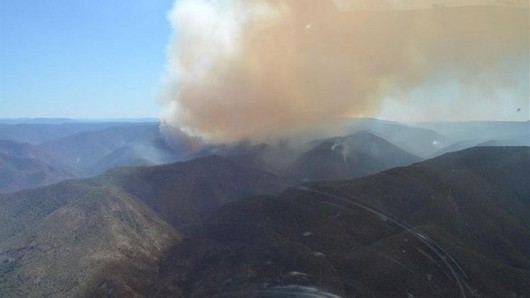 Macleay River Bushfire October 2012
– left to burn for a week from 12th Oct 2012 because not a threat to private property
..then the wind picked up…unbelievable! Macleay River Bushfire October 2012
– left to burn for a week from 12th Oct 2012 because not a threat to private property
..then the wind picked up…unbelievable!
.
Over the past month, a single contiguous area covering some 60,000 hectares of vegetation has been left to burn by bushfire. That equates to 600 km2 or roughly 25km x 25km.
Much of what has been burned is/was of World Heritage values within the included Oxley Wild Rivers National Park. This is unacceptable custodial neglect.
If this was Sydney, this is the black boxed area that would have been incinerated: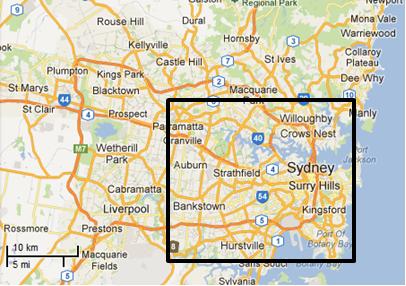 Putting this 60,000ha bushfire into a Sydney urban perspective
Professional urban fire fighting would not allow 60,000 hectares of private property and human lives to burn
– such would historically dwarf the Great Fire of London. Putting this 60,000ha bushfire into a Sydney urban perspective
Professional urban fire fighting would not allow 60,000 hectares of private property and human lives to burn
– such would historically dwarf the Great Fire of London.
.
The Rural Fire Service has labelled the bushfire the ‘Macleay River Fire‘. But it began as two separate bushfires on or before 12 October, nearly a month prior. One was then labelled ‘Georges Junction Fire‘ and the other ‘Freds Creek Fire‘, both purportedly ignited by bush arsonist(s). Seven days later, the Georges Junction Fire has burnt an estimated 8,931 ha, while the then much smaller Freds Creek Fire had burnt 1,688 ha. By the time the combined bushfire was extinguished 60,000 hectares had been burned, much within the World Heritage Area..
This is yet another classic case of bushfire neglect primarily by the delegated custodians of the National Park and World Heritage Area – the New South Wales National Parks and Wildlife Service. Is this due to chronic lack of resourcing; and/or symptomatic of a disturbing rationalist culture that believes that burning Australian vegetation, even ancient rainforest, could be somehow beneficial to biodiversity.
Remote ignitions go undetected, then unsuppressed, until many days later, bushfire weather conditions worsen and the fires get out of control, combine and destroy vast areas of important Nationl Park and World Heritage.
This 2012 Macleay River Fire is like the ‘2006 Grose Valley Fires‘ of the Blue Mountains repeated to script.
.
.
The Australian Government continues to be ultimately culpable for gross neglect in failing to protect its custodial listed natural heritage.
The Rural Fire Service has learnt to avoid accusatioins of incompetence by routinely removing timely records on its websites about the operational response in the days at the start of the ignitions. Details about the timings of ignition detection and initial suppression are deliberately withheld from the public.
The following bushfire updates are mainly from second-hand news media. A notable recurring theme across these news reports is that the media interest and the target of the fire fighting effort, just like in urban fire fighting, is to save humans lives and property. This is not a bad thing, but the glaring omission is the lack of interest in suppressing the bushfire in the National Park and World Heritage.
The Rural Fire Service policy and operational strategy is such that if human lives and properrty are not directly threatened by bushfire, then a bushfire is allowed to continue burning, irrespective of whether it is burning through National Park or World Heritage. Since the Rural Fire Service has the same terms of reference as the professionaly paid New South Wales Fire Brigade, then they are essentially doing the same urban job.
The only reason the Rural Fire Service exists in less populated rural areas instead of the professionaly paid New South Wales Fire Brigade, is traditionally so that the Australian Government and New South Wales Government can save money by relying on unpaid, under-resourced volunteers. Yet the environment in rural fire fighters work in is inherently more dangerous, demanding and in need of sophisticated resources for military-speed detection and suppressions of bushfires.
.
21 Oct: Bushfire Update
.
‘Blazes burn out of control: Permits suspended as hot, dry weather hits North West’
[Source: ”Blazes burn out of control: Permits suspended as hot, dry weather hits North West”, by Wendy Spooner, Northern Leader (regional newspaper), 20121021, ^http://www.northerndailyleader.com.au/story/411057/blazes-burn-out-of-control-permits-suspended-as-hot-dry-weather-hits-north-west/]
.
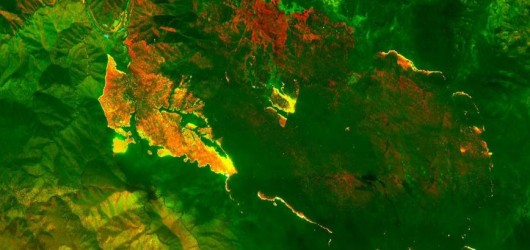 Satellite infrared image of the fire called Georges Junction inside the Oxley Wild Rivers National Park
Having already burnt out a massive 14,000 hectares and is likely to join up with the Freds Creek fire.
The active edge of the fire shows up bright yellow; the red areas are the burnt areas.
(Photo by New England RFS) Satellite infrared image of the fire called Georges Junction inside the Oxley Wild Rivers National Park
Having already burnt out a massive 14,000 hectares and is likely to join up with the Freds Creek fire.
The active edge of the fire shows up bright yellow; the red areas are the burnt areas.
(Photo by New England RFS)
.
<<Two massive bushfires in the Oxley Wild Rivers National Park were basically running unchecked yesterday because of adverse firefighting conditions, incident controller for the New England bushfire emergency, Allyn Purkiss, said.
Mr Purkiss said the two Section 44-declared fires one named Freds Creek and the other Georges Junction were likely to join up yesterday and burn out a total of 30,000 hectares in the coming weeks.
“They took a big run under strong winds (on Saturday)..The fires had started after landholder burns had got away”, Mr Purkiss said.
..The fire named Freds Creek, which started on October 12, had burnt out 3,189 hectares and was crowning at 4am yesterday, with flames jumping from treetop to treetop.
“It means it’s very uncontrollable very dangerous conditions,” Mr Purkiss said yesterday.
The RFS had been unable to aerial-bomb the fires because of gusty winds. Mr Purkiss described it as “nigh-on impossible” to water-bomb in those conditions.
Instead, RFS volunteers had concentrated on saving property. He said it was hard to tell how many homes and remote-area shacks might be affected.
“We’re still trying to come to terms with that. We could have up to 50 in the area: there are shacks all through this country,” he said.
Mr Purkiss said the other fire, Georges Junction, had already burnt out 14,000 hectares. (Ed: Same as the 2006 Grose Valley Fires).
He said conditions in the New England RFS zone were “fairly similar” to strong, gusty winds on Saturday. “The forecast is for 50km/h winds by late afternoon,” Mr Purkiss said.
No homes had been lost in either fire yet. “None that we know of,” he said. The RFS was doing a “fairly extensive reconnaissance of the area”, he said.
Three other fires one about 40km east of Guyra, one near Walcha and one near Ebor had also started since Friday.
The Guyra fire, which started on Saturday, was located in the Mt Mulligan/Wards Mistake area.
Locals had alerted the RFS to the fire, which was in “very remote country … it’s difficult to get to no roads, no trails”, Mr Purkiss said.
“I’ve tasked an aircraft to get out there today and map it and give us some intel (intelligence),” he said..
“No properties were under threat: it was burning in scrub.“
.
Mr Purkiss said he was “not sure” how much land had been burnt out he would have to wait for information provided by the aircraft crew.
The Walcha fire, called Panhandle and in the Enfield State Forest, had burnt out five hectares by the time it was contained by mid-afternoon on Saturday.
The Ebor-area fire was located “in an area we can’t get to”, Mr Purkiss said. “We’re flying to map it today,” he said yesterday.
It had also burnt out five hectares.
“Local landholders and Ebor RFS assisted in containing it,” he said.
Mr Purkiss said the New England RFS zone was unlikely to lift its suspension of fire permits today.
“While ever we have a bushfire emergency like this going, all permits are suspended we’re already dealing with enough fires, so we don’t need any more mistakes giving us grief than we already have,” he said.
Mr Purkiss said this season had already started to play out differently compared to the past three years.
In the past three fire seasons, rain had usually come along and helped extinguish any fires but this season was different, with many more periods of extended dry weather.
“In talking to the local staff, they say that this (Georges Junction) is the largest fire they have had since 2009,” Mr Purkiss said. “We’re working hard to get it done. We thank the volunteers and employers for allowing us to fight these very large fires.”>>
.
22 Oct: Bushfire Update
.
‘Macleay River fire threatens homes’
[Source: ‘Macleay River fire threatens homes’, by Victoria Nugent, The Armidale Express (regional newspaper), 20121022, ^http://www.armidaleexpress.com.au/story/410559/macleay-river-fire-threatens-homes/?cs=469]
.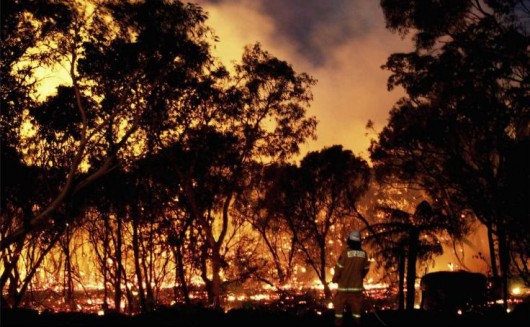 Properties between Georges Junction and Five Day Creek were at threat from fire yesterday
(Photo: The Armidale Express) Properties between Georges Junction and Five Day Creek were at threat from fire yesterday
(Photo: The Armidale Express)
.
<<Fire continues to threaten properties near Oxley Wild Rivers National Park after two blazes combined yesterday.
The Macleay River bushfire had already burnt about 20,000 hectares early yesterday afternoon as more than 30 firefighters battled the out of control blaze, NSW Rural Fire Service spokeswoman Bridie O’Connor said.
The inferno may have posed a threat to properties between Georges Junction and Five Day Creek, particularly on the Carrai and Fitzroy Tablelands and on the Macleay River in the vicinity of Lower Creek and Comara, Ms O’Connor said early yesterday afternoon.
“We’re looking at a minimum of six hours before some properties might be affected,” she said. “People should expect to see smoke and fire and be alert.”
Hot and windy conditions over the weekend (20th and 21st) saw the fires at Georges Junction and Freds Creek combine.
The Georges Junction fire, near Cochrane State Forest, which started on October 12 had burnt more than 14,859 hectares and was still burning out of control when it met with the Freds Creek fire early yesterday afternoon. The fire at Freds Creek was being controlled yesterday afternoon after three State Forest groups joined the NSW Rural Fire Service to use bulldozers to create fire breaks earlier in the week.
Meanwhile, the Armidale to Kempsey Road between Waterfall Way and Bellbrook was closed on Saturday and Sunday because of the fires.
The Rural Fire Service was concentrating its efforts on establishing containment lines.
People on properties near Georges Junction and on the Macleay were urged to be alert for fire warnings.>>
.
23 Oct: Bushfire Update
.
‘Total fire bans expected back in place by Thursday’
[Source: ‘Total fire bans expected back in place by Thursday’, by Campbell Walker, Namoi Valley Independent (newspaper), 20121023, ^http://www.nvi.com.au/story/415687/total-fire-bans-expected-back-in-place-by-thursday/]
.
<<…Adverse weather conditions on Sunday hindered attempts to subdue two massive bushfires in the Oxley Wild Rivers National Park. Fire crews were reduced to protecting property on the ground and the two fires merged late on Sunday as fire crews battled from the ground to protect property, unable to water bomb due to gusty winds across the region.
The fire, now named the Macleay River Fire had burnt out 28,733 hectares as of last night, Inspector Brett Loughlin, public liaison officer for Armidale Section 44 with the NSW Rural Fire Service, said.
Mr Loughlin was expecting the fire to burn out more land.
“We’re doing some mapping now and expect it to be around that 30,000-hectare mark,” he said. He said 52 firefighters were on the ground creating firebreaks, doing backburning and helping protect the property of landholders living within a few kilometres of the fire front.
“There are properties in close proximity,” Mr Loughlin said. “The fire has flared up a little this afternoon and some embers are falling around properties in the Lower Creek area.
“No property is under threat at the moment … the fire’s not doing anything like it was doing on Saturday (when it was out of control – a day of hot, gusty westerly winds).”
Five helicopters are currently tasked to water bombing the Macleay River Fire.
Oxley Wild Rivers National Park is still shut to the public…>>
.
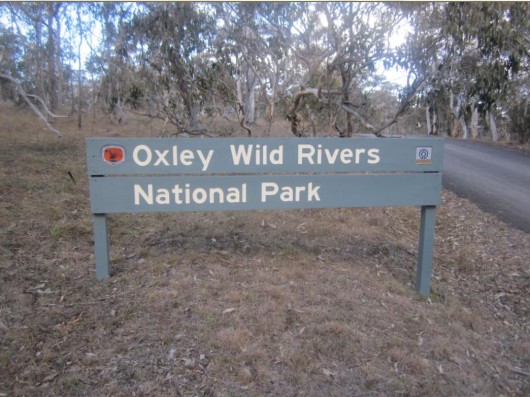
.
25 Oct: Bushfire Update
.
‘Arson suspected in Macleay River fire‘
[Source: ‘Arson suspected in Macleay River fire’, by Kitty Hill, Northern Daily Leader (local print newspaper), 20121025, ^http://www.northerndailyleader.com.au/story/420443/arson-suspected-in-macleay-river-fire/]
.
<<Rural Fire Service forensic investigators have interviewed a ‘person of interest’ as the battle to contain the Macleay River fire enters its 15th day.
RFS investigators from Kempsey and Coffs Harbour arrived yesterday to investigate the possible cause of the blaze in the Oxley Wild Rivers National Park which has since burnt out 33,160 hectares of bush and pasture land.
RFS Public Liason Officer Inspector Brett Loughlin said all major fires were investigated as a matter of cause and investigations were ongoing.
Around 80 firefighters from the NSW RFS, FRNSW and NPWS, supported by five aircraft and four bulldozers are fighting the fire, which has a 247 kilometre perimeter.
Ember attack on properties around the Lower Creek area were reported yesterday but Inspector Loughlin said that firefighters were working with local landholders to protect at-risk homes.
Inspector Loughlin said that good containment lines had been established by fire crews in the last 24 hours and today “aerial incendiary” work by helicopter would be carried out on the south western side of the blaze. “It’s still an active fire but we’re starting to get a handle on it,” Inspector Loughlin said.
The Macleay River Fire is the culmination of the ‘Freds Creek Bushfire‘ and ‘Georges Junction Bushfire‘ that had merged last weekend. The fire is burning in the vicinity of the Comara, Georges Junction, Five Day Creek, Lower Creek, Blanches Creek and Smith Creek areas.
Another fire burning near Guyra, has been contained. The ‘Mulligans Bushfire‘, which has burnt out 3207 hectares near the Guy Fawkes National Park has been burning since Saturday.>>
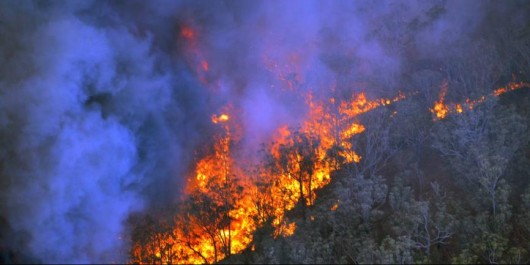 Macleay River Bushfire
(Photo by Sean Bremmer) Macleay River Bushfire
(Photo by Sean Bremmer)
.
1 Nov: Bushfire Update
.
Rural Fire Service Reported Operational Statistics:
[Source: New South Wales Government, Rural Fire Service, ^ http://www.rfs.nsw.gov.au/]
‘MACLEAY RIVER FIRE‘
ALERT LEVEL: Advice
LOCATION: 50 kms east of Armidale, 75 kms west of Kempsey, 65kms east of Walcha
COUNCIL AREA: Armidale Dumaresq
STATUS: Being Controlled (Ed: glass half-full spin)
TYPE: Bush fire
FIRE: Yes
SIZE: 51,405 ha
RESPONSIBLE AGENCY: Rural Fire Service
UPDATED: 1 Nov 2012 15:25
.
5 Nov: Bushfire Update
.
‘NSW fires declared natural disaster zones’
.
[Source: ‘NSW fires declared natural disaster zones’, by AAP, 20121105, ^ http://www.heraldsun.com.au/news/breaking-news/nsw-fires-declared-natural-disaster-zones/story-e6frf7kf-1226510654741]
.
<<Three local government areas have been declared natural disaster zones in the wake of a major fire that has been raging in northern NSW for two weeks.
The massive front formed on October 21 when the Freds Creek and Georges Junction fires combined at the Macleay River. It has damaged over 51,000 hectares of:
- National Parks
- State Forests
- Private Land
.
across three shires:
- Armidale Dumaresq shire‘
- Walcha shire
- Kempsey shire
.
“These fires have been burning in the area for a number of days and due to the conditions, they merged into one large fire, jumped containment lines and threatened numerous properties,” Emergency Services Minister Michael Gallacher said in a statement on Monday.
“This declaration triggers a number of disaster assistance schemes to assist with the cost of disaster relief and recovery.”
Over the last two weeks, bushfires have raged across the New England and Mid North Coast regions. Other fires under this declaration include the Clay fire in Armidale Dumaresq, the Panhandle fire in Walcha and the Mulligans fire in Guyra on the western side of Guy Fawkes National Park, which has burnt over 3,400 hectares of National Park and private land.
Mr Gallacher said the Macleay River fire had damaged significant portions of the Oxley Wild Rivers National Park, which is part of the Gondwana Rainforests of Australia World Heritage Area, a series of protected areas which were first inscribed on the World Heritage List in 1986 and extended in 1994.
.
5 Nov: Bushfire Update
.
<<Three separate fires burning out of control south-west of Casino since the weekend have been contained, the Clarence Valley Rural Fire District reports.
The ‘Dubadar Creek Bushfire‘, which was believed to have been started by arsonists before blowing out from 50ha to 300ha on Saturday, was contained on Sunday and was extinguished at midday today, the district’s incident controller Stuart Watts said.
Two separate blazes, also deliberately lit, at Mt Pickabooba 4km from the Dubadar Creek fire were expected to be contained by this afternoon following back-burning, Mr Watts said. The Rural Fire Service had 10 fire trucks, 19 personnel and two bulldozers working to bring the fires under control on the weekend. The Northern Star has approached the police for comment.
The battle with the blazes come as NSW Police and Emergency Services Minister Michael Gallacher declared natural disasters for the Mid North Coast – parts of which only a year ago were receiving the same declaration for floods – and New England areas.
“The main focus of this declaration is the Macleay River Fire, which developed on 21 October 2012 as the culmination of the Fred’s Creek and Georges Junction Fires,” Mr Gallacher said in a written statement.
“These fires have been burning in the area for a number of days and due to the conditions, they merged into one large fire, jumped containment lines and threatened numerous properties…Firefighters have been working hard to create containment lines around the Macleay River Fire to protect properties as the fire approaches.
“As of 1 November 2012, the Macleay River Fire continues to burn and is estimated to have damaged over 51,000 hectares of National Parks, State Forests and private land across the three LGA’s of Armidale Dumaresq, Walcha and Kempsey.
“The Macleay River Fire has damaged significant portions of the Oxley Wild Rivers National Park, which is part of the Gondwana Rainforests of Australia World Heritage Area, a series of protected areas which were first inscribed on the World Heritage List in 1986 and extended in 1994.“>>
.
Reader Comment:
by ‘coco50’ from Ballina 20111105:
<<When is our judicial system going to get serious about arsonists? It is difficult enough to catch them. Think about what they do. They destroy natural bushland and animal habitat. They put the lives of people at risk or even cause deaths. They destroy property which causes hardship and suffering and years to rebuild. This pushes up everyone’s insurance premiums. They out emergency services personnel at risk.
But when we get an arsonist in court, the defence counsel makes an argument like: “My client had a difficult childhood – his parents and peers didn’t understand him. He is remorseful”
The Judge almost cries while handing out a “slap on the wrist” sentence. It is much harder to start a fire in jail while you are doing 20 years time. Lock them up!>>
.
[Source: ‘Fires contained as disaster declared’ , 20121105, Northern Star (local print newspaper), ^http://www.northernstar.com.au/news/fires-contained/1609219/]
.
6 Nov: Bushfire Update
.
Rural Fire Service Reported Operational Statistics:
.
[Source: New South Wales Government, Rural Fire Service, ^ http://www.rfs.nsw.gov.au/]
.
‘MACLEAY RIVER BUSHFIRE’
ALERT LEVEL: Advice
LOCATION: 65km East of Walcha
COUNCIL AREA: Armidale Dumaresq
STATUS: Being Controlled
TYPE: Bush fire
FIRE: Yes
SIZE: 59, 663 ha
RESPONSIBLE AGENCY: Rural Fire Service
UPDATED: 6 Nov 2012 09:10
.
Oxley Wild Rivers National Park is World Heritage ‘protected‘
.

1986: Gondwana Rainforests of Australia inscribed on the World Heritage List.
.
 World Heritage Listing because local people thought it was so important to save before it was gone World Heritage Listing because local people thought it was so important to save before it was gone
.
Over twenty-five years ago, in 1986 the Gondwana Rainforests of Australia, then called the Central Eastern Rainforest Reserves of Australia (CERRA), were inscribed on the World Heritage List for their outstanding natural universal values.
Theses rainforest comprise the Great Escarpment of eastern New South Wales, then known as the Australian East Coast Sub-tropical and Temperate Rainforest Parks, were inscribed on the World Heritage list meeting the following three World Heritage Natural Criteria:
- Outstanding example representing significant ongoing geological processes and biological evolution (World Heritage Natural Criterion viii)
- Outstanding example representing major stages of the earth’s evolutionary history (World Heritage Natural Criterion ix)
- Containing important and significant habitats for the in situ conservation of biological diversity (World Heritage Natural Criterion x)
.
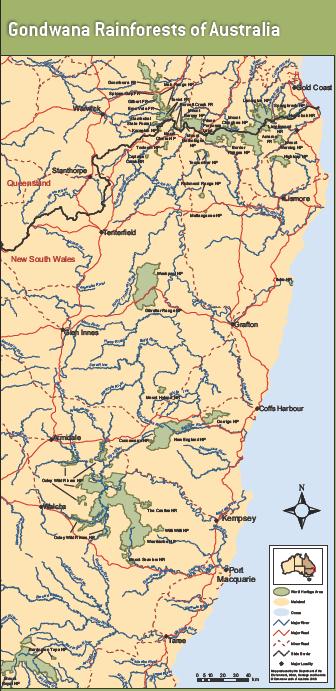 Trying to save the surviving remnant patches of Gondwana Rainforest ecosystems
(Ed: These few green shades are emblematic of Australian ransacking)
Read: >Large Map
[Source: ^http://www.environment.gov.au/heritage/places/world/gondwana/pubs/gondwana-map.pdf] Trying to save the surviving remnant patches of Gondwana Rainforest ecosystems
(Ed: These few green shades are emblematic of Australian ransacking)
Read: >Large Map
[Source: ^http://www.environment.gov.au/heritage/places/world/gondwana/pubs/gondwana-map.pdf]
.
The Gondwana Rainforests contains the largest and most significant remaining stands of subtropical rainforest and Antarctic Beech (Nothofagus moorei) cool temperate rainforests in the world, the largest and most significant areas of warm temperate rainforest and one of only two remaining large areas of Araucarian rainforest in Australia.
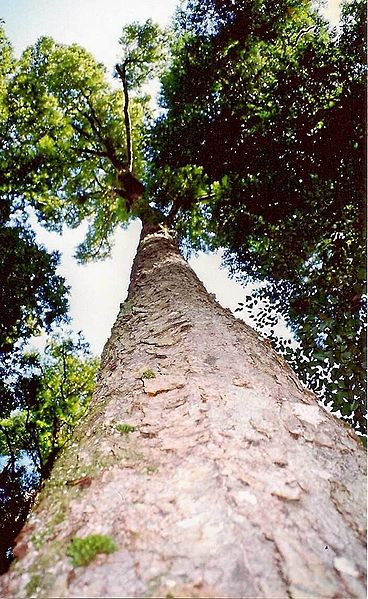 Enormous Antarctic Beech (Nothofagus moorei)
At Cobark Park, Barrington Tops, 50 metres tall Enormous Antarctic Beech (Nothofagus moorei)
At Cobark Park, Barrington Tops, 50 metres tall
.
The Gondwana Rainforests of Australia is a serial property comprising the major remaining areas of rainforest in southeast Queensland and northeast New South Wales. They include the most extensive areas of subtropical rainforest in the world, large areas of warm temperate rainforest and nearly all of the Antarctic beech cool temperate rainforest. Some of the oldest elements of the world’s ferns and conifers are found here and there is a concentration of primitive plant families that are direct links with the birth and spread of flowering plants over 100 million years ago.
A wide range of plant and animal lineages and communities with ancient origins in Gondwana, many of which are restricted largely or entirely to the Gondwana Rainforests, survive in this collection of reserves. The Gondwana Rainforests also provides the principal habitat for many threatened species of plants and animals.
The area is one of the best places on earth to see ancient ferns and Araucaria such as Hoop Pines.
 Hoop Pine
(Araucaria cunninghamii)
Found naturally in the dry rainforests of New South Wales and Queensland and in Papua New Guinea.
The trees can live up to 450 years and grow to a height of 60 m. Hoop Pine
(Araucaria cunninghamii)
Found naturally in the dry rainforests of New South Wales and Queensland and in Papua New Guinea.
The trees can live up to 450 years and grow to a height of 60 m.
.
Rainforest once covered most of the ancient southern supercontinent Gondwana and remains the most ancient type of vegetation in Australia. The Gondwana Rainforests provide an interesting living link with the evolution of Australia. Few places on earth contain so many plants and animals which remain relatively unchanged from their ancestors in the fossil record.
Due to two centuries of colonial deforestation across New South Wales and Queensland – timbergetting, ‘land clearing’ for agriculture and housing – the reserves of rainforest that comprise The Gondwana Rainforests in discontinuous patches, surrounded by fireprone eucalypt forest and cleared agricultural lands.
These patches range in size from tiny gully stands to lush forests covering large valleys and ranges. Collectively, these ‘serial sites’ despite their small size and scattered fragments, provide proximity and interconnection by corridors of semi-natural habitats and buffers. Their natural asset value is fragile and demands intensive management and protection in order to preserve their ecological integrity.
.
[Source: Australian Government, ^http://www.environment.gov.au/heritage/places/world/gondwana/resources.html]
.
The ecosystems of the Gondwana Rainforests contain significant and important natural habitats for species of conservation significance (World Heritage Natural Criterion x).
The Gondwana Rainforests provides the principal habitat for many species of plants and animals of outstanding universal value, including more than 270 threatened species as well as relict and primitive taxa. Many of the rare and threatened flora and fauna species are rainforest specialists, and their vulnerability to extinction is due to a variety of factors including the rarity of their rainforest habitat.
The Gondwana Rainforests also protects large areas of other vegetation including a diverse range of heaths, rocky outcrop communities, forests and woodlands. These communities have a high diversity of plants and animals that add greatly to the value of the Gondwana Rainforests as habitat for rare, threatened and endemic species. The complex dynamics between rainforests and tall open forest particularly demonstrates the close evolutionary and ecological links between these communities.
Species continue to be discovered in the property including the re-discovery of two mammal species previously thought to have been extinct:
- The Hastings River Mouse (Pseudomys oralis)
- Parma Wallaby (Macropus parma)
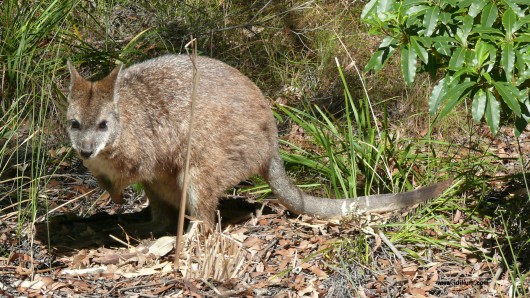 Parma Wallaby (Macropus parma)
Endemic to rainforests and sclerophyll forests in New South Wales from the Watagan Mountains in the South to the Gibraltar Range in the North.
Parma wallabies were thought to have become extinct a century ago until being discovered again in the 1970s. Parma Wallaby (Macropus parma)
Endemic to rainforests and sclerophyll forests in New South Wales from the Watagan Mountains in the South to the Gibraltar Range in the North.
Parma wallabies were thought to have become extinct a century ago until being discovered again in the 1970s.
.
1994: Oxley Wild Rivers NP added to World Heritage
.
In 1994, large extensions of rainforests across south-east Queensland and New South Wales including the Oxley Wild Rivers National Park were added to the World Heritage listed Central Eastern Rainforest Reserves of Australia (CERRA), now entitled The Gondwana Rainforests of Australia (since 2007).
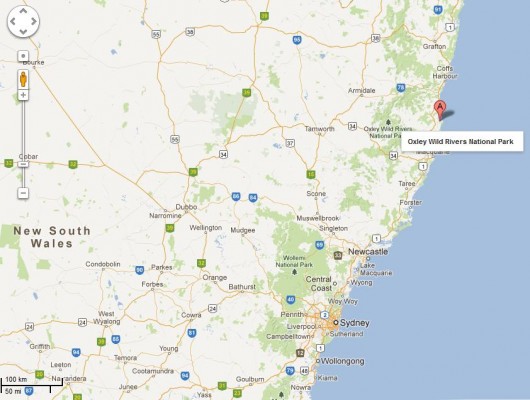 OxleyWild Rivers National Park – location map
[Source: Google Maps]
. OxleyWild Rivers National Park – location map
[Source: Google Maps]
.
These reserves comprise almost 50 separate remnant reserves of unspoilt rainforest wilderness stretching from north-east New South Wales (the Oxley Rivers region) up through south-east Queensland. Each of these reserves contains important nature conservation values in its own right, however the full significance of the property becomes evident only when viewed as a whole, and collectively CERRA provides a significant network of habitats for many of Australia’s rare and endangered species.
Since 1994, the Australian Government in co-operation with both the New South Wales and Queensland Governments have recognised the need for coordinated, consistent and cooperative management, to ensure that the integrity of CERRA‘s values is protected. At the time, the World Heritage Committee requested the Australian Government complete management plans of individual sites. Six years later in 2000, the Australian Government published its ‘Strategic Overview for Management for the Central Eastern Rainforest Reserves of Australia to guide co-operative management by the three Governments in relation to the identification, protection, conservation, rehabilitation and presentation of the Gondwana Rainforests. In 2002, a Technical and Scientific Advisory Committee and a Community Advisory Committee were established.
The Gondwana Rainforests of Australia are managed principally by the New South Wales National Parks and Wildlife Service (part of the New South Wales Department of Environment and Climate Change) and the Queensland Environmental Protection Agency.
.
[Source: Central Eastern Rainforest Reserves of Australia – Strategic Overview for Management’, November 2000, Australian Government, ^http://www.environment.gov.au/heritage/publications/strategy/pubs/mgtoverview.pdf]
.
Later 1,850 ha of Winterbourne State Forest, also known at the Big Lease, was added to the reserves wilderness. Currently (2012), the remaining 1,560 ha of Winterbourne and 1,075 ha of Enmore State Forests are to be added to the National Park. Further inclusions include Green Gully headwaters and 1,439 ha of leasehold land in the lower Chandlers River gorge.
The Macleay Gorges Wilderness Area, covering 50,000 hectares, was declared World Heritage in 1996 and further extended in 1997.
In 2007, Macleay Gorges Wilderness Area and Oxley Wild Rivers National Park, along with the 50 separate Crown Land reserves of remnant ancient rainforest were collectively renamed under the umbrella term Gondwana Rainforests of Australia to better reflect their World Heritage values. These include important rainforested areas between Newcastle and Brisbane from Mount Royal National Park and Banrrington Tops National Park to Lamington National Park inland of Queensland’s Gold Coast.
.
[Source: Australian Government, ^http://www.environment.gov.au/biodiversity/invasive/publications/pubs/mainland-islands-oxley-wild-rivers-national-park.pdf]
.
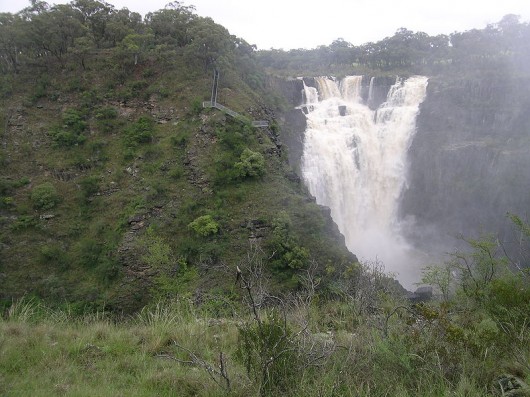 Aspley Falls in flood
Oxley Wild Rivers National Park Aspley Falls in flood
Oxley Wild Rivers National Park
.
High waterfalls crashing into steep gorges are spectacular examples of an important ongoing natural process – erosion. Erosion by coastal rivers created the Great Escarpment and the steep-sided caldera of the Tweed Valley surrounding Mount Warning. This towering mountain was once the buried plug of an ancient vast volcano. Today, rainforest grows on the fertile, well watered soils that remain.
The Macleay River on the Mid North Coast of New South Wales, Australia, has the world’s second-fastest flowing currents during flooding, when it can hold over 200,000 gigalitres.
Its headwaters flows from the Gara River on the eastern side of the Northern Tablelands near the tonwships of Armidale and Walcha. Key tributaries are the Chandler River, Styx River and Apsley River as well as the Tia River, Dyke River and Yarrowitch River, which pass through a number of spectacular gorges and waterfalls in the Oxley Wild Rivers National Park.
The Macleay River flows 400km south-east through Kempsey and into the Pacific Ocean at South West Rocks. Upon colonial discovery in the 1820s; the ancient, tall native Red Cedar (Toona ciliata) forests were completely deforested.
 Australian Red Cedar Forest
Tamborine National Park, Gold Coast Hinterland, Queensland
(such trees have long been logged through the Oxley Rivers region) Australian Red Cedar Forest
Tamborine National Park, Gold Coast Hinterland, Queensland
(such trees have long been logged through the Oxley Rivers region)
.
In 1976, the Apsley Macleay Gorges were identified as being of ‘true wilderness quality‘.
At that stage the public protection offered to the area was limited to two small reserves in the south, and a few local council run recreation areas at popular sites such as Wollomombi Falls, Dangars and Apsley Falls. With future land-use undecided, the NSW Electricity Commission began surveying the Apsley Valley for a hydro-electric scheme in the late 1970s. The Apsley Gorge National Park of 6,718 hectares was gazetted followed by the 3,456 hectare Yarrowitch Gorge National Park soon after.
In 1989 East Kunderang Station of 30,400 hectares passed to the National Parks and Wildlife Service (NPWS) and was proclaimed the Oxley Wild Rivers National Park.
.
Rich Wildlife through Oxley Wild Rivers National Park
.
Oxley Wild Rivers National Park is rich in fauna, with over 350 species recorded, including 55 mammals.
It is a major refuge for the Brush-tailed Rock-wallaby (Petrogale pencillata), with the largest confirmed population in the Green Gully area of Yarrowitch.
.
 Brush-tailed Rock Wallaby (Petrogale penicillata) in Oxley Wild Rivers National Park
This species is listed in New South Wales as ‘Vulnerable to extinction’, but that was by the NSW Scientific Committee in 2003, nine years ago
There have been two major bushfires through since then – one in 2009 and now in 2012
How many viable individuals have been lost to the Macleay River Bushfire – does the NSW NPWS know or care? Brush-tailed Rock Wallaby (Petrogale penicillata) in Oxley Wild Rivers National Park
This species is listed in New South Wales as ‘Vulnerable to extinction’, but that was by the NSW Scientific Committee in 2003, nine years ago
There have been two major bushfires through since then – one in 2009 and now in 2012
How many viable individuals have been lost to the Macleay River Bushfire – does the NSW NPWS know or care?
.
<<Oxley Wild Rivers National Park, including Green Gully Track, is closed until further notice due to wildfire.>>
[Source: ^http://www.environment.nsw.gov.au/NationalParks/parkFireClosure.aspx?id=N0043]
.
Other species found in the park include:
- Dingoes
- Bandicoots
- Bats
- Koalas
- Wombats
- Quolls
- Brushtail Possums
- Sugar gliders
- Platypus
- Echidnas
- Numerous small ground mammals
- Wedge-tailed Eagles
- Peregrine falcons
Over 173 bird species, 38 reptile and 19 amphibian species have been recorded in Oxley Wild Rivers National Park.
Skinks, goannas, tortoises, lizards, snakes, frogs and fish occur in the park, particularly on the river flats. A number of fish species have been recorded. Notable, is the speckled longfin eel (Anguilla reinhardtii), which breeds in the ocean with the juveniles eventually returning to the Apsley–Macleay River system.
There are fourteen known threatened species within the Oxley Wild Rivers National Park:
Six mammal species:
- Brush-tailed Phascogale (tuan) (Phascogale tapoatafa)
- Brush-tailed Rock Wallaby (Petrogale penicillata)
- Koala (Phascolarctos cinereus)
- Squirrel Glider (Petaurus norfolcensis)
- Tiger Quoll (Dasyurus maculatus)
- Hastings River Mouse (Pseudomys oralis)
.
Four bird species:
- Glossy Black Cockatoo (Calyptorhynchus lathami)
- Greater Sooty Owl (Tyto tenebricosa)
- Superb Fruit-dove (Ptilinopus superbus),
- Turquoise Parrot (Neophema pulchella)
One amphibian subspecies:
- Macleay River Turtle (Emydura macquarii dharra)
.
One reptile species:
- Carpet Python (Morelia spilota variegata)
.
Two frog species:
- Peppered Tree Frog (Litoria piperata)
-
The Glandular Frog or New England Tree Frog (Litoria subglandulosa)
.
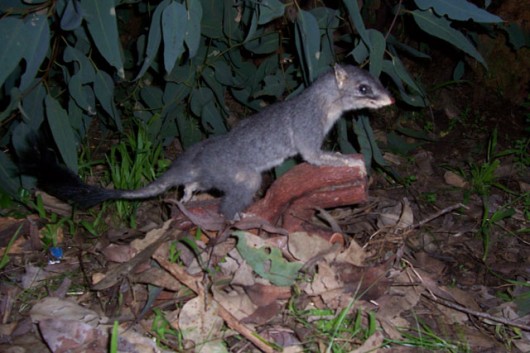 Brush-tailed Phascogale
[Source: Animal Hospital, ^http://www.chidlowmarsupialhospital.org.au/page-17-1-identification.html] Brush-tailed Phascogale
[Source: Animal Hospital, ^http://www.chidlowmarsupialhospital.org.au/page-17-1-identification.html]
.
All these wildlife were previously widespread, but now are vulnerable to extinction or worse; which has become an Australian cliché, but at the same time an indictment on Australians.
But how much of this protected wilderness region is left after last fortnight’s bushfire catastrophe?
How can it be deemed to be protected, when bushfire is allowed to ravage it and its vitally recognised flora and fauna? Was the World Heritage Area allowed to burn as a convenient bushfire management operational defacto Hazard Reduction? There were no human assets at risk. It was wilderness and so out of sight out of mind…such is the dominant bushphobic culture of the Australian and State Governments, so accused of neglect and incompetence after the 2009 Victorian Bushfires that killed 173 people.
To current anthropocentric (20th C babyboomer) governments, this ‘Macleay River Fire’, irrespective of its World Heritage ecological protection, is blanketly and culturally dismissed as just another hazardous fuel region to target within Australia’s continent-wide Government Arson strategy. Successive generations will revisit this prevailing cultural mindset of ‘hazard reduction‘ and cast it alongside 19th C ‘timbergetting‘ and 20th C ‘clearfelling‘.
In the Blue Mountains, some 40,000 hectares of native vegetation is currently approved by the same Australian and New South Wales Governments for deliberate burning.
If deliberately setting fire to the native vegetation is committed privately it is deemed bush arson and so attracts a poultry 14 years gaol or less even less, despite people having been burned to death as a direct consequence.
But if deliberately setting fire to the native vegetation is previously prescribed by Government, then participants are artificially deemed legally immune and impune from criminal liability, even if the prescribed bushfires they light get out of control, which is all too frequently.
The Australian Government’s official public relations message reads:
Institutional arrangements for the protection and management of Gondwana Rainforests are strong. The property is made up of 41 reserves, almost all of which are within the protected area estate, and primarily managed by the Queensland Parks and Wildlife Service and the New South Wales National Parks and Wildlife Service. Both States have legislation relating to protected areas and native flora and fauna that provide protection for the values of the Gondwana Rainforests.
All World Heritage properties in Australia are ‘matters of national environmental significance’ protected and managed under national legislation, the Environment Protection and Biodiversity Conservation Act 1999. This Act is the statutory instrument for implementing Australia’s obligations under a number of multilateral environmental agreements including the World Heritage Convention. By law, any action that has, will have or is likely to have a significant impact on the World Heritage values of a World Heritage property must be referred to the responsible Minister for consideration. Substantial penalties apply for taking such an action without approval. Once a heritage place is listed, the Act provides for the preparation of management plans which set out the significant heritage aspects of the place and how the values of the site will be managed.
National Heritage is also a matter of national environmental significance under the EPBC Act.
Importantly, this Act also aims to protect matters of national environmental significance, such as World Heritage properties, from impacts even if they originate outside the property or if the values of the property are mobile (as in fauna). It thus forms an additional layer of protection designed to protect values of World Heritage properties from external impacts.
The impacts of climate change and high levels of visitation, undertaking effective fire management, and mitigating the effects of invasion by pest species and pathogens present the greatest challenges for the protection and management of Gondwana Rainforests.
Climate change will impact particularly on those relict species in restricted habitats at higher altitudes, where particular microclimatic conditions have enabled these species to survive.
Management responses include improving the resilience of the property by addressing other threats such as inappropriate fire regimes and invasion by pest species, and trying to increase habitat connectivity across the landscape.
[Source: Australian Government, ^http://www.environment.gov.au/heritage/places/world/gondwana/values.html]
.
Recall 2009: 9,500 hectares of Oxley Wild Rivers left to burn
.
In December 2009, a lightning strike started a bushfire in the Youdales Hut area of the Oxley Wild Rivers region. The hut was unaffected (human property?), but 1,500 hectares of inaccessible steep country was burnt out before it was brought under control.
Another lightning strike started a large bushfire in the Reedy Creek region of the park. This fire has burnt out over 8,000 hectares of rough country.
.
[Ed: Yes, steep wilderness terrain without convenient fire trails carved through it, is naturally inaccessible to lumbering urban fire trucks – so RFS/NPWS where were the waterbombing aircraft on 12th Oct 2012, when the fires were tiny and manageable?]
.
Tags: Antarctic Beech, Australian East Coast Sub-tropical and Temperate Rainforest Parks, Australian Red Cedar Forest, Brush-tailed Phascogale, Brush-tailed Rock-wallaby, bush arsonists, bushfire out of control, Central Eastern Rainforest Reserves of Australia, Freds Creek Fire, Georges Junction Fire, Gondwana Rainforests of Australia, Green Gully Track, Hoop Pine, Macleay Gorges Wilderness Area, Macleay River Fire, Oxley Wild Rivers National Park, RFS, Rural Fire Service, wildfire, World Heritage
Posted in Kangaroos and Macropods, Threats from Bushfire | 3 Comments »
Add this post to Del.icio.us - Digg
Friday, November 2nd, 2012
 Once were common – now pose for the commoner! Once were common – now pose for the commoner!
Australia’s Koala
(Phascolarctos cinereus)
.
Australia’s iconic and once prolific Koala is now nationally listed as vulnerable to extinction.
What a despicable indictment of Australians!
<<The Koala was formerly common throughout the broad band of forests and woodlands dominated by Eucalyptus spp. extending from north Queensland to the south-eastern corner of mainland South Australia, Australia (Maxwell et al. 1996). However, the overall distribution of Koalas has been reduced since European settlement. This decline was primarily due to disease, bushfires, and widespread habitat destruction in the early decades of the 20th century.
Commercial poaching of koalas (they called it ‘harvesting‘) took place across the range towards the end of the 19th century and early 20th century (huge numbers, running into the millions, were killed for their pelts for a large export industry in Victoria, New South Wales, and Queensland). Koalas were widely hunted during the 1920s and 1930s, and their populations plunged.>>
Backward Queensland was the worst offender. In August 1927, the Koala fur trade saw the Queensland Government declare ‘open season’ on Koalas. Some 600, 000 koalas were shot to make gloves and hats in jut one month. It became known as ‘Black August‘.
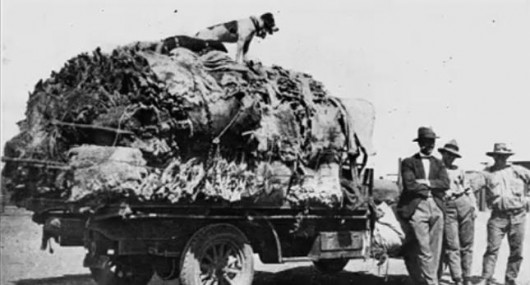 1927 ‘Black August’
When 600,000 Koalas were shot and skinned across Queensland
1927 ‘Black August’
When 600,000 Koalas were shot and skinned across Queensland
.
Commercial hunting was banned in Victoria in the 1890s, yet it continued sporadically (and under regulation) in backward Queensland until 1927 (Hrdina and Gordon 2004).

<<The Koala currently ranges from northeastern, central, and southeastern Queensland with patchy populations in western areas, to eastern New South Wales including the coastal strip and highlands of the Great Dividing Range, the western plains and related riparian environments where suitable habitat occurs, Victoria, and southeastern South Australia. The geographic range has contracted significantly due to loss of large areas of habitat since European settlement. In Queensland, extent of occurrence and area of occupancy have contracted by about 30% (Gordon et al. 2006).
Helped by reintroduction, Koalas have reappeared over much of their former range, but their populations are smaller and scattered. Koalas need a lot of space—about a hundred trees per animal—a pressing problem as Australia’s woodlands continue to shrink.>>
[Sources: The IUCN Red List of Threatened Species – Phascolarctos cinereus (Koala), ^http://www.iucnredlist.org/details/16892/0 ; ‘Koala’, National Geographic, ^http://animals.nationalgeographic.com/animals/mammals/koala/]
.
(2.6MB, pdf – NB. if slow to open, GoTo: File > Save As.., then open the PDF file from your auto-download folder)
.
[Source: The Decline in the distribution of the Koala in Queensland, G. Gordon, F. Hrdina, R. Patterson, Zoologist Vol 33, 2004,^http://www.rzsnsw.org.au/]
.
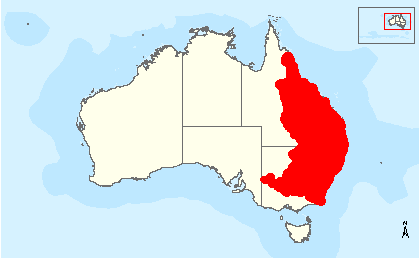 Koala Traditional Natural Range map (excluding Victorian and South Australia) Koala Traditional Natural Range map (excluding Victorian and South Australia)
[Source: ‘Koala (combined populations of Queensland, New South Wales and the Australian Capital Territory), Australian Government,
^http://www.environment.gov.au/cgi-bin/sprat/public/publicspecies.pl?taxon_id=85104]
.
<<Since European settlement, approximately 80% of Australia’s eucalypt forests have been decimated. Of the remaining 20% almost none is protected and most occurs on privately-owned land.>>
[Australian Koala Foundation, ^https://www.savethekoala.com/our-work/land-clearing-koalas]
.
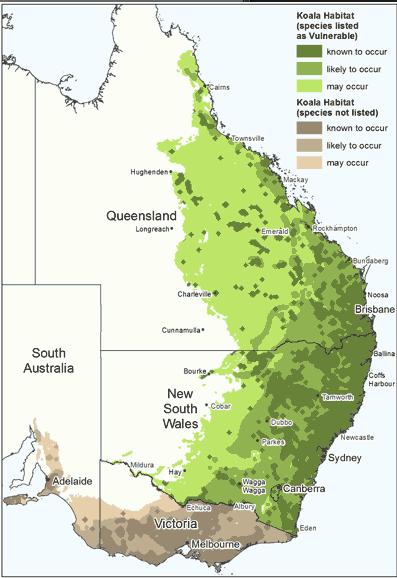 Koala reduced range map Koala reduced range map
Ed: Interpretation is Dark Green = known to occur, Light and Mid Green = used to occur
Dark green is where human population growth is worst!
(Source: ‘Koala (Phascolarctos cinereus) Listing’, Australian Government, 2012),
^http://www.environment.gov.au/biodiversity/threatened/species/koala.html]
.
.
Koalas partially listed as ‘Vulnerable’ to extinction
.
In April 2012, Australia’s Environment Minister, Tony Burke, declared that ‘at-risk’ koala populations along Australia’s eastern seaboard ‘vulnerable‘ under Australian national environment law – specifically under the Environment Protection and Biodiversity Conservation Act 1999.
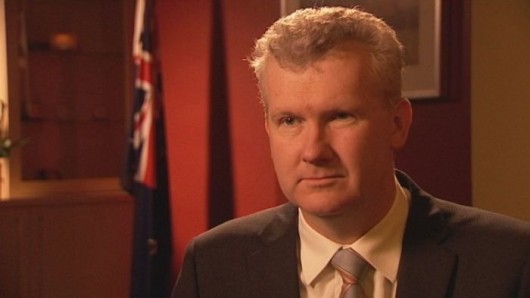 Australia’s Environment Minister, Tony Burke
Being interviewed on ABC Four Corners 20120821
[Source: ‘Koala Crunch Time’, ABC Four Corners, 20120821,^http://www.abc.net.au/4corners/stories/2012/08/16/3569231.htm] Australia’s Environment Minister, Tony Burke
Being interviewed on ABC Four Corners 20120821
[Source: ‘Koala Crunch Time’, ABC Four Corners, 20120821,^http://www.abc.net.au/4corners/stories/2012/08/16/3569231.htm]
.
This ‘EPBC Act‘ remains the Australian Government’s central piece of environmental legislation, providing a legal framework to protect and manage nationally and internationally important flora, fauna, ecological communities and heritage places. The Australian Government’s Department of Environment (etc) is currently developing EPBC Act referral guidelines for the Koala.
[Source: Australian Government, ^http://www.environment.gov.au/epbc/publications/interim-koala-referral-advice.html]
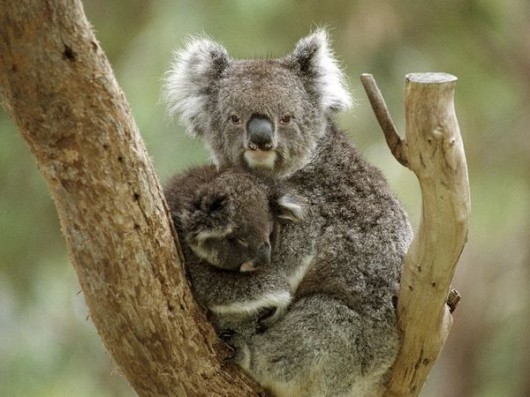 Koala with joey – zoo captive to benefit tourist visitation Koala with joey – zoo captive to benefit tourist visitation
[Source: Photo by Medford Taylor, National Geographic,
^http://animals.nationalgeographic.com/animals/mammals/koala/]
.
<<Rigorous scientific assessment by a variety of experts over the past three years has been reported back to Australia’s lead body on biodiversity conservation, the Threatened Species Scientific Committee (TSSC), which has found that Koala populations particularly in Queensland, New South Wales and Australian Capital Territory have declined markedly in recent years to a point where in these areas populations are vulnerable to regional extinction.
In 2011, the Threatened Species Scientific Committee combined available data for Koala populations across their natural range and generated estimates of the decline experienced over the period 1990–2010 by the national Koala population and, separately, the combined Queensland, NSW and ACT population (TSSC 2011bi).
The parameters of greatest uncertainty are the size of the Queensland population in 1990 and rate of subsequent decline, particularly in inland bioregions, and the size of the Victorian population.>>
The following table is a summary of the TSSC assessment of national Koala populations (TSSC 2012p):
| Region |
Date |
Best estimate |
Decline |
| Queensland |
1990 |
295 000 |
|
| 2010 |
167 000 |
43% |
| New South Wales |
1990 |
31 400 |
|
| 2010 |
21 000 |
33% |
| Victoria |
1990 |
215 000 |
|
| 2010 |
200 000 |
7% |
| South Australia |
1990 |
32 000 |
|
| 2010 |
19 500 |
39% |
TSSC 2012 Assessment of National Koala Populations
[Source: Koala (combined populations of Queensland, New South Wales and the Australian Capital Territory), Species Profile and Threats Database, Australia Government, ^http://www.environment.gov.au/cgi-bin/sprat/public/publicspecies.pl?taxon_id=85104]
.
<<These are the same regions where rapid ongoing housing development is allowed and encouraged, as Australia’s human population expands uncontrollably.
Mr Burke said “Koala populations are under serious threat from habitat loss and urban expansion, as well as vehicle strikes, dog attacks, and disease…In fact, in some areas in Victoria and South Australia, koalas are eating themselves out of suitable foraging habitat and their numbers need to be managed.”
“That is why the Scientific Committee recommended to me to list the Queensland, New South Wales and Australian Capital Territory populations as threatened, rather than to list the koala as nationally threatened across its full range.”
Mr Burke said the Gillard Government had committed $300,000 of new funding under the National Environmental Research Program Emerging Priorities to find out more about koala habitat.
“This funding will be used to develop new survey methods that will improve our knowledge of the quality of koala habitat using remote sensing, and help fill important data gaps to enhance our understanding and ability to protect the species,” Mr Burke said.
“The new funding is in addition to more than $3 million we have invested since 2007 to ensure the resilience and sustainability of our koala population.”>>
[Source: ‘Koala protected under national environment law’, The Hon Tony Burke MP media release, Minister for Environment etc, 20120430, ^http://www.environment.gov.au/minister/burke/2012/mr20120430.html]
.
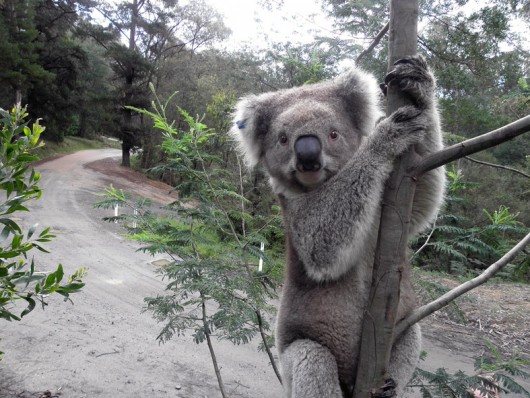 Koalas reduced to patchy populations
Below the IUCN radar/crisis, Koala functional extinction looms
… patchy populations, and more patchy every year.
Do we wait until Koala numbers downgrade to ‘Critically Endangered‘ before the Australian Government gives a toss! Koalas reduced to patchy populations
Below the IUCN radar/crisis, Koala functional extinction looms
… patchy populations, and more patchy every year.
Do we wait until Koala numbers downgrade to ‘Critically Endangered‘ before the Australian Government gives a toss!
[Source: ^http://home.vicnet.net.au/~fofkk/]
.
.
Australian Government – too little, too late, too selective
.
<<But the Australian Government’s announcement (back in April 2012, now six months ago) only confirmed what the Lismore-based ‘Friends of the Koala‘ group has known for more than a decade. Friends of the Koala volunteer carer Lola Whitney said the listing was long overdue.
“The work that we do here tells us that koalas are in danger of becoming extinct,” she said. “So many koalas come through our care centre every year, that it’s amazing we’ve got any around here at all. And the amount we lose from being hurt or from diseases – we lose a lot.”>>
.
Ed: But the Australian Government has only partially listed Koalas as vulnerable to extinction in Queensland, New South Wales and the Australian Capital Territory (ACT). Whereas Victorian and South Australian koalas were omitted.
.
This was because these were the recommendations of the 2011 Senate Enquiry, despite the TSSC confirmed 39% decline in the South Australian Koala population between 1990 and 2010.
.
Tony Burke as ultimate custodian: Why were problematic declining Koalas across South Australia and Victoria excluded from the EPBC Act?
.
It was also because the lead authority, the Threatened Species Scientific Committee, had “information gaps”, and because “the body of data on the status of koala populations is patchy, often sparse and not nationally comprehensive or coordinated”, the TSSC ignored the ‘Precautionary Principle and repeatedly rejected the Koala’s threatened species listing on the EPBC Act.
.
What it failed to appreciate was the more appropriate IUCN Red List categories of ‘DATA DEFICIENT’ (DD) and ‘NOT EVALUATED’ (NE).
.
.
The Conclusion by the 2011 Senate Committee Enquiry was selective. It read as follows:
.
<<The most prominent issue raised during this inquiry was whether the koala should be listed as a threatened species. Although the committee does not have the technical expertise of the TSSC, and therefore believes it is not qualified to determine whether or not the koala should be listed as threatened, the committee is deeply concerned about the sustainability of Australia’s koala population.
On one hand, the committee is pleased that the koala may not yet be eligible for listing as threatened. The committee believes that to have such a significant Australian icon
included on the threatened species list would be a national shame.
On the other hand, the committee believes there are parts of the koala population that require much greater protection. This is occurring to some extent in Queensland and NSW where the koala is listed in some areas under state environment protection legislation. However, state listing has not stemmed the marked decline in the population. If declines continue it will only be a matter of time before the koala is nationally listed as a threatened species.
The EPBC threatened species listing process is reactive and not well suited to the conservation needs of the koala. In the committee’s view, there ought to be processes available to enable proactive protection for the koala as well as other significant Australian species. In this regard the committee notes the possible mechanisms announced as part of the government’s response to the review of the EPBC Act which could enable a more proactive approach to koala conservation. Perhaps, building on the TSSC’s proposal to monitor species of cultural, evolutionary and/or economic significance, there ought to be a category of nationally significant species.
Ultimately, the committee would like to see Australia’s koala population return to plentiful numbers of healthy individuals, in resilient habitats, across the koala’s natural range.>>
[Conclusion, p. xix]
.
Threatened Species Scientific Committee repeatedly rejected Koala listing on EPBC Act
.
Three separate Listing Advices by the ‘ by the Threatened Species Scientific Committee (TSSC) to successive Australian Environment Ministers rejected the listing of the Koala as a threatened species on the EPBC Act, as follows:.
.
Feb 2006:
.
Due to the TSSC acknowledging that “there are still information gaps regarding the species’ conservation status“, the TSSC recommendation to Australia’s Environment Minister on Koala conservation was:
“The Committee recommends that the species Phascolarctos cinereus (Koala) is not eligible for inclusion in the list referred to in section 178 (Listing of Threatened Species) of the EPBC Act.”
[Source: ‘Advice to the Minister for the Environment and Heritage from the Threatened Species Scientific Committee (the Committee) on Amendments to the list of Threatened Species
under the EPBC Act’, 20060206, Item 6, p.15, Threatened Species Scientific Committee,^http://www.environment.gov.au/biodiversity/threatened/species/pubs/koala.pdf, >Read 2006 Listing Advice]
.
Sep 2010:
.
<<The body of data on the status of koala populations is patchy, often sparse and not nationally comprehensive or coordinated. The data quality is also variable. There has been only limited improvement in quality, relevance and integration of these data over the 15 years that the koala has been considered by this Committee and its predecessor. This situation is not unusual for the Committee but what is unusual is the huge area of occurrence and variability that the koala demonstrates. I addition there is a lack of any consistent reliable methodology for population monitoring of the koala.>>
.
<<In its deliberations, the Committee concluded that a Conservation Dependent listing for the koala could not be justified at this time.>>
.
[Source: Letter to Minster for Environment, by Associate Professor Robert J.S. Beeton, Chair, Threatened Species Scientific Committee, 20100930 ^http://www.environment.gov.au/biodiversity/threatened/species/pubs/koala-tssc-letter.pdf, >Read Sep 2010 Letter]
.
Feb 2011:
.
<<The Committee recommends that the list referred to in section 178 of the EPBC Act not be amended at this time by including the Phascolarctos cinereus (koala) in the list in the Vulnerable category.>>
.
[Source: ‘Advice to the Minister for Environment Protection, Heritage and the Arts from the Threatened Species Scientific Committee (the Committee) on Amendment to the list of Threatened Species under EPBC Act’, 20110211, Item 12, p.29, Threatened Species Scientific Committee,^http://www.environment.gov.au/biodiversity/threatened/species/pubs/koala-listing-advice.pdf, >Read Feb 2011 Listing Advice ]
.
Nov 2011 (change of heart, but ignoring Victoria and South Australia):
.
<<12. Recommendations
(i) The Committee recommends that the Minister declare the combined koala (Phascolarctos cinereus) populations in Queensland, New South Wales and the Australian Capital Territory to be a species for the purposes of the EPBC Act under s517 of the Act.
(ii) The Committee recommends that the list referred to in section 178 of the EPBC Act not be amended by including the koala (Phascolarctos cinereus) over its national extent.
(iii) The Committee recommends that the list referred to in section 178 of the EPBC Act be amended by including in the list in the Vulnerable category the combined koala (Phascolarctos cinereus) populations in Queensland, New South Wales and the Australian Capital Territory.
(iv) The Committee recommends that there should be a recovery plan for this species.>>
.
[Source: ‘Advice to the Minister for Sustainability, Environment, Water, Population and Communities from the Threatened Species Scientific Committee (the Committee) on Amendment to the list of Threatened Species under the EPBC Act, 20111125, Item 12, p.34, Threatened Species Scientific Committee,^http://www.environment.gov.au/biodiversity/threatened/species/pubs/197-listing-advice.pdf, >Read Nov 2011 Listing Advice ]
.
The current members of the Threatened Species Scientific Committee are:
.
- Professor Helene Marsh (Chair)
- Dr Guy Fitzhardinge
- Dr Gordon Guymer
- Professor Peter Harrison
- Dr Rosemary Purdie
- Dr Keith Walker
- Professor John Woinarski
- Dr Andrea Taylor
- Dr William Humphreys
- Dr Michelle Heupel
.
[Source: ‘Threatened Species Scientific Committee Members, Department of Environment (etc, Australian Govermment, ^http://www.environment.gov.au/biodiversity/threatened/committee-members.html]
 Professor Helen Marsh
TSSC Chair since August 2011 Professor Helen Marsh
TSSC Chair since August 2011
.
To his credit, Tony Burke had asked the Threatened Species Scientific Committee (TSSC) for more precise boundaries detailing areas where koala populations are in trouble.
In February 2012, Australian Koala Foundation chief executive officer Deborah Tabart said that this Senate Committee Enquiry document was telling Mr Burke that he should act now and not wait another 10 weeks.
 Deborah Tabart OAM
– not smiling Deborah Tabart OAM
– not smiling
.
<<“Minister Burke has delayed this decision, I think, twice and Minister (Peter) Garrett prior to that, I think, three times. “I’m just hoping that the Senate inquiry document, which is now firmly on his (Mr Burke’s) desk, should persuade him that, if nothing else, he should protect the koala under a precautionary approach”, said Tabart.>>
[Source: ‘Government ‘stalling’ on endangered koalas decision’, Feb 17, 2012, ^http://www.abc.net.au/news/2012-02-17/koala-listing-process-delayed/3835228 ]
.
[Source: Australian Parliament House, Senate Committees, >’The koala—saving our national icon’, 20110922, ^http://www.aph.gov.au/Parliamentary_Business/Committees/Senate_Committees?url=ec_ctte/koalas/report/index.htm]
.
<<The National Board of the Australian Koala Foundation (AKF), being much more aware of the Koala population range reality, undertook an extensive mapping project to quantify how many koalas remained in the wild, and where those koalas were located.
Extensive research was undertaken using National Vegetation Information System (NVIS) data, vegetation mapping, a bidling database of records for over 80,000 individually assessed trees from 2,000 field sites across the Koala’s range. Data has been collected by AKF from sixteen of the twenty-four Australian bioregions that the Koala is known to occur.>>
In 2011, the following map has been prepared estimating Australia’ national Koala population:
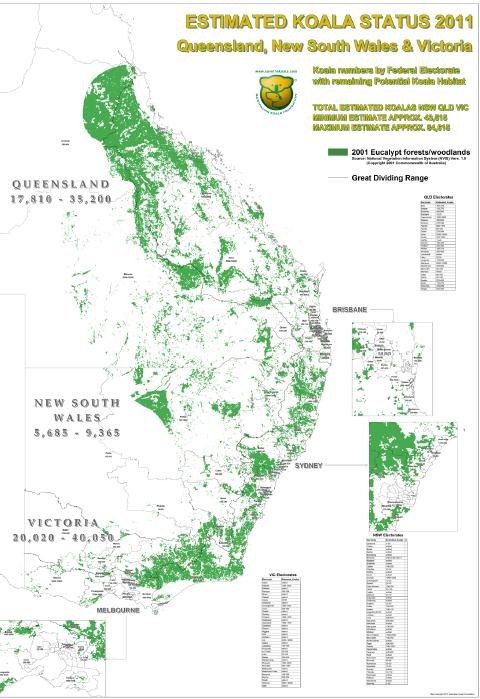 Estimated Australian Koala Population, 2011 Estimated Australian Koala Population, 2011
>Read Large Map(pdf) (3.4MB – – NB. if slow to open,
GoTo: File > Save As.., then open the PDF file from your auto-download folder)
[Source: ‘Bob’s Map’, Australian Koala Foundation,
^https://www.savethekoala.com/our-work/koala-numbers]
.
2011 Senate Committee: ‘The koala—saving our national icon’
.
The 19 Recommendations of the Senate Committee
.
<<Recommendation 1
The Australian Government fund research into the genetic diversity of the koala including a population viability assessment of the southern koala and determining priority areas for conservation nationally.
.
Recommendation 2
The Australian Government fund a properly designed, funded and implemented national koala monitoring and evaluation program across the full range of the koala.
.
Recommendation 3
The Australian Government establish a nationally coordinated and integrated program for population monitoring of threatened species and other culturally, evolutionary and/or economically significant species.
.
Recommendation 4
The Australian Government assist the koala research community and interested organisations to work towards a standardised set of methodologies for estimating koala populations.
.
Recommendation 5
The Threatened Species Scientific Committee provide clearer information to the Environment Minister in all future threatened species listing advices, including species population information, and that the Threatened Species Scientific Committee review its advice to the Minister on the listing of the koala in light of the findings of this inquiry.
.
Recommendation 6
The Australian Government undertake habitat mapping across the koala’s national range, including the identification of priority areas of koala conservation, with a view to listing important habitat under the provisions of the EPBC Act.
.
Recommendation 7
The habitat maps be used to identify and protect important habitat in known koala ranges.
.
Recommendation 8
The Australian Government review its land holdings which contain koala habitat and consider biodiversity, and specifically koala populations, in the management and sale of Commonwealth land.
.
Recommendation 9
The Australian Government actively consider options for recognition and funding for private land holders for the conservation of koala habitat.
.
Recommendation 10
The Australian Government fund research into koala disease, including the viability of vaccination programs and the effect of changes in leaf chemistry.
.
Recommendation 11
The Australian Government fund the Koala Research Network’s request for a Research Liaison Officer.
.
Recommendation 12
The Australia Government consider further wild dog control options in priority koala areas.
.
Recommendation 13
Local and state governments:
- Introduce appropriate speed limits in priority koala areas; and
- Where appropriate, build or retrofit underpasses or overpasses for major roads in priority koala areas as well as installing koala fencing adjacent to major roads.
.
Recommendation 14
Where the Australian Government provides funding for roads or other infrastructure in or adjacent to koala habitat, it be contingent on the provision of adequate koala protections.
.
Recommendation 15
The Australian Government work with the states to develop new national guidelines to ensure that all new roads and upgrades in or adjacent to koala habitat are koala-friendly.
.
Recommendation 16
The (Australian Government’s) Environment Minister consider the evidence provided to this inquiry when making his final decision on listing the koala as a threatened species.
.
Recommendation 17
The (Australian Government’s) Environment Minister consider options to improve the conservation status of the diverse and rapidly declining koala populations in New South Wales and Queensland to ensure a nationally resilient population is maintained. These options include listing the koala as vulnerable under the EPBC Act in areas where populations have declined significantly or are at risk of doing so.
.
Recommendation 18
An independent external review be conducted on the National Koala Conservation and Management Strategy to monitor the adequacy of progress. The review should assess and report on the progress made at the strategy’s midpoint.
.
The review must include an assessment of the:
- Strategy’s implementation to date and prospects into the future;
- Strategy’s effectiveness in stabilising koala numbers in areas of declining population, and in reducing the pressure of overabundant populations;
- Strategy’s level of ambition, including whether new elements are required; and
- Adequacy of the Commonwealth’s and the states’ respective roles and funding commitments.
.
Recommendation 19
The Australian Government adequately resource the National Koala Conservation and Management Strategy, and ensure that it is properly implemented through committing to a much stronger leadership role.>>
.
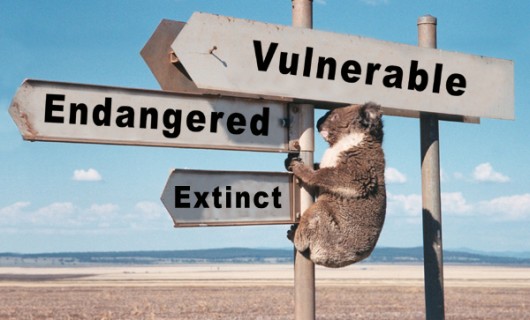 . .
.
Of note, ‘Recommendation 17‘ restricted the conservation status of the Koala only to ensure a ‘nationally resilient population is maintained’. That means that regional extinctions shall be acceptable, so long as a ‘nationally resilient population is maintained’ somewhere.
These are the places that the Koala is deemed to be declining and so given the vulnerable status. Other Koala populations elsewhere don’t weem to matter to the Australian Government.
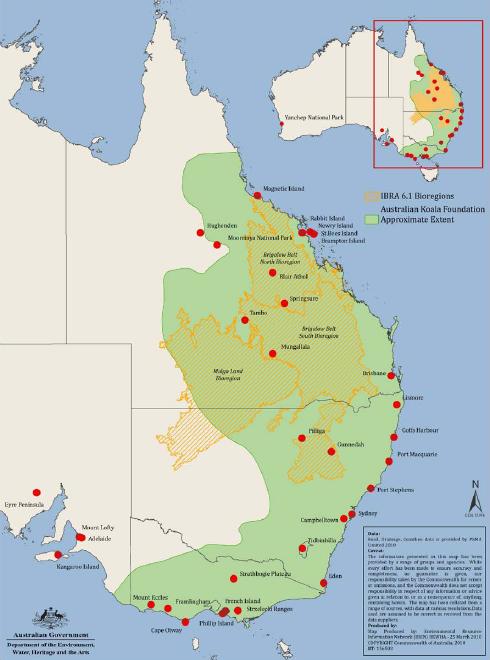 Koala tokenly listed as ‘Vulnerable’ but politically only at the above ‘selected places’
under the Environment Protection and Biodiversity Conservation Act (1999) Koala tokenly listed as ‘Vulnerable’ but politically only at the above ‘selected places’
under the Environment Protection and Biodiversity Conservation Act (1999)
.
.
2000: Even then, the United States recognised Koalas as ‘Vulnerable’
.
<<Back on 9th May 2000, the United States Government listed all koalas in Australia as vulnerable under the Endangered Species Act. The US Government determined that a) the eucalyptus and woodland ecosystems on which the arboreal marsupial depends has been greatly reduced, b) that despite conservation action by the governments of Australia, koala habitat continues to deteriorate, and c) that irrespective of koala numbers, the threats were present and real.
At the time, the Australian Government was outraged. The Australian Koala Foundation considered that the US may have been pointing out to Australia (when President Clinton and Vice President Al Gore were in power) that Australia needed to control its land clearing in readiness for the Kyoto Protocol on climate change. One petitioner pointed out that Australia at that time was clearing land second only to the Amazon.
At the time, the Victorian Government was pleading that they ‘had so many koalas they are pests’, and a similar cry was heard in the 2011 Senate Committee Enquiry into the plight of the Koala.
Australian Greens Leader, Senator Bob Brown had in 2010 successfully moved for a new Senate Comittee Enquiry to assess the threats to and management of koalas across the country. The Inquiry into the status, health and sustainability of Australia’s koala population, has particular reference to:
- the iconic status of the koala and the history of its management;
- estimates of koala populations and the adequacy of current counting methods;
- knowledge of koala habitat; d. threats to koala habitat such as logging, land clearing, poor management, attacks from feral and domestic animals, disease, roads and urban development;
- the listing of the koala under the Environment Protection and Biodiversity Conservation Act 1999;
- the adequacy of the National Koala Conservation and Management Strategy;
- appropriate future regulation for the protection of koala habitat;
- interaction of state and federal laws and regulations; and i. any other related matters.
.
Environment Minister Tony Burke appears to have been swayed by this plea as unlike his United States counterparts he did not consider the following in the American citation “…the actual number of koalas that were present at various times in the past and that may still exist is of much interest and helps to give some perspective but, as for many species, may not be the critical factor in determining whether the species is threatened. A low figure may reflect natural rarity of a population in marginal habitats. A high figure may be misleading if the entire habitat of the involved population faces imminent destruction”.
The document continues “…if we receive strong biological arguments, we would consider giving separate consideration to particular populations. It should be recognised, however, that koalas cannot be considered separate populations solely because they reside in different state jurisdictions”.
No such biological argument could be made. On the contrary, genetic studies in Victoria show that by and large all Victorian koalas, except those in the eastern part, are all pretty much genetically identical which means the future is bleak for conservation. Some of them even have testicles missing. On Kangaroo Island, some research suggests that as many as 29 per cent may have this affliction.
Imagine a koala that lives on the Murray River in New South Wales. On one side of the river, it has protection, but if it swims to Victoria, it does not. In AKF’s view, either the Australian Government values our national icon for its contribution to our nation or it does not.
As seen on Four Corners last night, the fur trade decimated the koala and the remnant populations are still low as a result of that slaughter.
Nowadays, the Koala pays its way in big tourism dollars, not the paltry one shilling (around 10 cents) per skin.
.
‘But the koala has powerful enemies. In the senate inquiry, developers, loggers, bureaucrats and even some departments of environment pleaded with the senators not to list the Koala because it would upset the developers or impede growth.’
.
The partial listing of the koala as vulnerable in NSW, ACT and Queensland can be seen as some sort of win, but will the existing legislation (the EPBC Act) be strong enough to protect the koala from long term destruction of its habitat?
Although the animal itself has been protected since 1936, its habitat really has not.
The Australian Koala Foundation believes its future lies in a koala-specific legislation similar to that of the American Bald Eagle Act, enacted in 1942. The Americans realised that if they did not do something strong and powerful they might lose their national icon forever. We believe that time has come now. The AKF estimates there may be as few a 43,000 koalas with no more than 85,000 left in its original habitat. If we are right, then there is no time to waste.
Greens Senator Bob Brown, as a final gesture before leaving Parliament, said he would support the AKF in our endeavours to enact a Koala Protection Bill. This should be a simple piece of legislation that basically says if you have koalas on your property that you cannot harm them, remove their trees and must – and that is the operative word – must ensure that your activity is benign for their long term future.
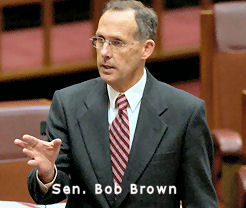
Four Corners has identified real threats to the koala and a partial listing will probably not make them go away. Neither will a specific piece of legislation, unless all our politicians actually realise we are at real risk of losing them.’>>
[Source: ‘Koalas deserve full protection‘, by Deborah Tabart, Chief Executive of the Australian Koala Foundation, 20120821, ABC, ^http://www.abc.net.au/environment/articles/2012/08/21/3571830.htm ; https://www.savethekoala.com/about-us/news-events/senate-inquiry]
.
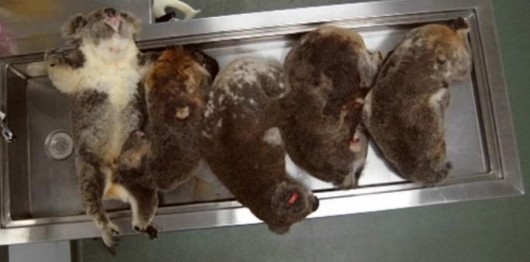 Dead Koalas on a vet’s autopsy table – with all the Green Talk how has it come to this?
Dead Koalas on a vet’s autopsy table – with all the Green Talk how has it come to this?
A native species that just sits up a tree, sleeps and hurts no-one
..now dying out because of Australian selfish viciousness.
Koalas are dying or being euthanised by the hundreds as a result of dog predation, road carnage, and Koala Habitat destruction.
[Source: ‘Koala Crunch Time’, ABC Four Corners (television programme), 20120821,
^http://www.abc.net.au/4corners/stories/2012/08/16/3569231.htm]
.
Watch ABC Four Corners Programme: ‘Koala Crunch Time‘
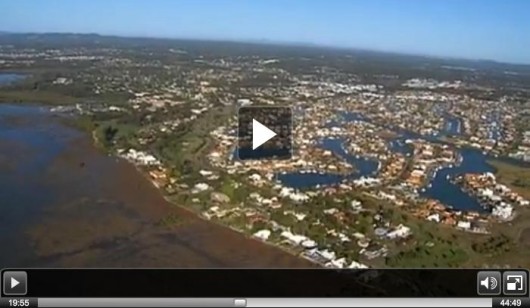 Australia’s Sprawl Profit overrules Biodiversity
‘Since 1997, koala hospitals along Australia’s eastern seaboard have recorded 15,000 Koala deaths’
[Source: Koala Crunch Time’, ABC Four Corners,^http://www.abc.net.au/4corners/stories/2012/08/16/3569231.htm] Australia’s Sprawl Profit overrules Biodiversity
‘Since 1997, koala hospitals along Australia’s eastern seaboard have recorded 15,000 Koala deaths’
[Source: Koala Crunch Time’, ABC Four Corners,^http://www.abc.net.au/4corners/stories/2012/08/16/3569231.htm]
.
 Westfield Shopping Centre development profiting out of Koala habitat apocalypse
Low (economic) Cost Housing, Coomera, Queensland Westfield Shopping Centre development profiting out of Koala habitat apocalypse
Low (economic) Cost Housing, Coomera, Queensland
.
.
IUCN wrongly continues to list Koalas as of ‘Least Concern’
.
Although Koala’s only exist naturally in Australia, at the international level the Koala (Phascolarctos cinereus) is still officially listed as of ‘Least Concern‘.
The most recent survey count of Koala status obtained by The International Union for Conservation of Nature (IUCN), the lead global authority on the environment and sustainable development, was back in 2008. Why, when the rapid decline data has been out since 2010?

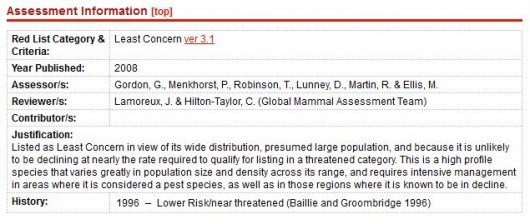 Phascolarctos cinereus (Koala)
The International Union for Conservation of Nature Red List of Threatened Species,
^http://www.iucnredlist.org/details/16892/0] Phascolarctos cinereus (Koala)
The International Union for Conservation of Nature Red List of Threatened Species,
^http://www.iucnredlist.org/details/16892/0]
.
The IUCN then assessed the Koala as having a ‘wide distribution’ and ‘a presumed large population’. It ignored regional declines and only regarded the national aggregate as appropriate data. Worse is that it stated thay the Koala “requires intensive management in areas where it is considered a pest species“.
Ed: What ecological incompetence, and wildlife hate would assess wildlife as a pest species?
.
The IUCN recognised that the Koala population was in decline in certain areas and identifed the following threats to the species:
- Continued habitat destruction, fragmentation, and modification (which makes them vulnerable to predation by dogs, vehicle strikes, and other factors)
- Bushfires
- Disease
- Drought associated mortality in habitat fragments
.
[Source: The IUCN Red List of Threatened Species – Phascolarctos cinereus (Koala), ^http://www.iucnredlist.org/details/16892/0]
.
Koala loss is symptomatic of Australia’s loss of much of the country’s native wildlife, its ecological communities and its biodiversity.
<<As of February 2011, a total of 1777 species are listed as threatened under the Environment Protection and Biodiversity Conservation Act (EPBC Act). A further 210 migratory and 464 marine species are also listed. The EPBC Act also lists 48 ecological communities as being threatened. These communities occur in a range of ecosystems including woodlands, forests, grasslands and wetlands.
Current threats to Australia’s biodiversity are:
- Habitat loss
- Degradation and fragmentation
- Invasive species and diseases
- Unsustainable use and management of natural resources
- Marine and coastal pollution (including from land based sources and vessels)
- Changes to the aquatic environment and water flows
- Changing fire regimes (Ed: bushfire management incompetence, and widespread Government-bush arson)
- Climate change.>>
.
[Source: ‘Status and Trends of Biodiversity’, Convention on Biological Diversity, ^http://www.cbd.int/countries/profile/?country=au#nbsap]
.
<<Friends of the Koala president Lorraine Vass said conservationists had been waiting for many years for koalas to be listed as vulnerable.
“At least a vulnerable to extinction listing,” she said. “It’s an additional layer of legislative protection and it’s better to have it than not to have it. “Apart from anything else it will be a very, very strong signal to everyone that at long last the nation is taking some responsibility for our national icon.”
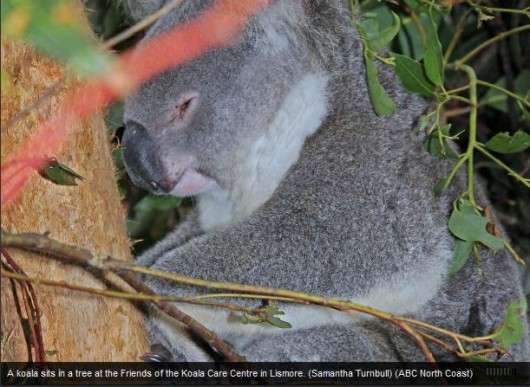
Ms Vass said statistics as well as anecdotal evidence showed koala numbers were rapidly declining, particularly in the Tweed (north eastern coastal New South Wales).
“I live at Wyrallah on a small property where koalas come and go, on the basis of observation at home I know that we’re seeing nowhere near as many koalas as we used to”, she said.
“In terms of statistics we’re actually bringing into care more koalas than we used to, but at the same time there are particular areas where we’re not bringing in as many koalas as we used to. So there are areas of local stress and the coastal area of Tweed is certainly one of those.”>>
[Source: ‘Greater protection for koalas‘, by journalist Samantha Turnbull, 20120430, ABC North Coast New South Wales, Australian Broadcasting Corporation, ^http://www.abc.net.au/local/photos/2012/04/30/3491805.htm, accessed 20121102]
.
<<This poor Koala was attacked by a Rottweiler in a suburban yard. It was reported that the koala was trying to get away and the dog grabbed it by the hindquarters as it was shimmying up a tree.
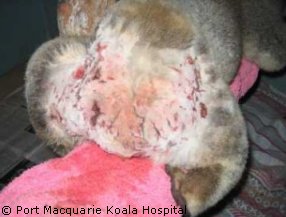 Koala injuries from a dog attack
Port Macquarie Koala Hospital
^http://www.koalahospital.org.au/ Koala injuries from a dog attack
Port Macquarie Koala Hospital
^http://www.koalahospital.org.au/
.
Sadly, this is a common occurrence with Koala’s. If it is not the hindquarters that are grabbed is around the neck or shoulder area. Usual injuries from this kind of incident are multiple puncture and tear wounds, with massive internal canine crush injuries. This koala had about 60 odd puncture wounds on his rump and groin area with many deep lacerations. His musculature around the groin and thigh area was lacerated pretty badly.
He died from shock, blood loss and ultimately a perforation of the intestine. The staff at the hospital gave him large amounts of fluids, and he was on strong painkillers and antibiotics. His wounds were flushed and he was kept in a warmed environment, but he died anyway.>>
[Source: Fourth Crossing Wildlife, ^http://www.fourthcrossingwildlife.com/dog_attack.htm]
.
.
Koala road deaths increasing
.
<<Not-for-profit conservation group, Friends of the Koala say 52 koalas were killed by vehicles on north coast roads last year.
The findings are part of the organisation’s annual report which documents the reasons behind the deaths of 222 north coast koalas. Association president Lorraine Vass says dog attacks and disease account for many koalas in their care. But she says hits from cars are the biggest concern.
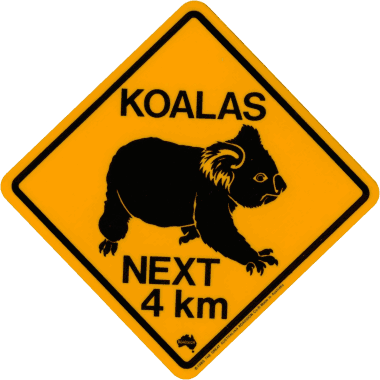
“One disturbing trend is an increase in road strikes,” she said. “Unfortunately that is a number that just keeps on increasing and last year we had 52 reports of koalas hit by cars. “Most of them, I’m afraid, were mortalities.”
But Ms Vass says there’s a positive outlook for koalas despite the figures. “I think there’s a lot to be optimistic about in terms of what’s going on with koala protection this year we’ve seen Lismore, we’ve got Tweed and Byron, those councils all working on a koala plan of management,” she said. “We’ve seen the federal announcement of the koala being listed under federal law as I say there’s a lot to be optimistic about.”>>
[Source: ‘Koala road deaths on rise‘, by Elloise Farrow-Smith, ABC, 20121019, ^http://www.abc.net.au/local/stories/2012/10/19/3614061.htm]
.
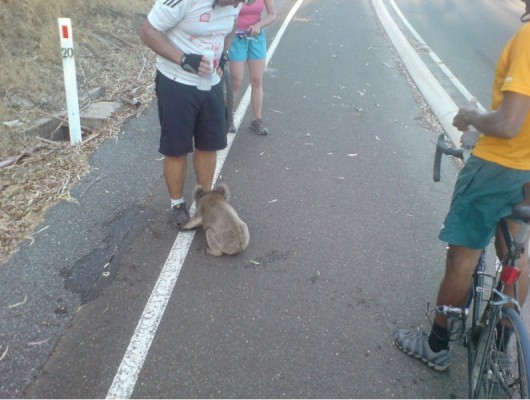 Koalas face a bleak future Koalas face a bleak future
.
Ed: The International Union for Conservation of Nature‘s global framework God-like governance for wildlife threatened by humanity is all about prioritising wildlife species most at risk of extinction for most protection.
.
It proclaims that if a species is not about to become extinct in the next ten years, its is not as important for conservation as those species that are.
.
But this is an Armageddon last man standing rationalisation. It may be administratively convenient, but it is an economic utilitarian philosophy that denies the rights of native wildlife to exist freely without persecution.
.
Were such an IUCN rationalist framwork applied to humans, such that don’t worry about say Chinese or Indians catching a deadly pandemic because there are a billion of them, it would be labelled as Herbert Spencer’s Social Darwinism or as Nazi Eugenics and quite rightly so. At The Habitat Advocate we espouse a worldview of Nature through: ^Deonteological Ethics and >Species Justice.
.
Every wildlife individual is valuable and has existence rights no different to humans.
.
Test: Would a human mother sacrifice her eldest or her youngest?
.
[Ed: All references sourced for this article 20111102]
.
.
Further Reading:
.
[1] ‘Koala Species Profile‘, Species Profile and Threats Database, Department of Environment etc, Australian Government, ^http://www.environment.gov.au/cgi-bin/sprat/public/publicspecies.pl?taxon_id=85104
.
[2] ‘Listing Advice to protect the Koala under the EPBC Act‘, Department of Environment etc, Australian Government,^http://www.environment.gov.au/biodiversity/threatened/species/pubs/197-listing-advice.pdf >Read Listing Advice (42 pages, PDF, 400kb – – NB. if slow to open, GoTo: File > Save As.., then open the PDF file from your auto-download folder)
.
[3] Koala Habitat Distribution Map (surveyed in 2011), Department of Environment etc, Australian Government, 2012 ^http://www.environment.gov.au/biodiversity/threatened/species/pubs/phascolarctos-cinereus-distribution-map.pdf
>Read Map (PDF, 300kb – NB. if slow to open, GoTo: File > Save As.., then open the PDF file from your auto-download folder)
.
[4] ‘Koala now threatened species‘, 20120215, Radio National Breakfast (radio programme), Australian Broadcasting Corporation,’There’s quiet optimism among koala experts that our national icon will finally be classified as a threatened or endangered species’.^http://www.abc.net.au/radionational/programs/breakfast/2012-02-15/3830832
>Play .mp3 audio:
 ℗ 2012 Australian Broadcasting Corporation ℗ 2012 Australian Broadcasting Corporation
.
[5] ‘Iconic animals – the koala‘, by Margot Foster, 20111228, ABC Rural (radio programme), Australian Broadcasting Corporation,
Abstract: ‘Michael Cathcart looks at the current efforts to protect this vulnerable animal. A senate committee has been looking into ‘the status, health and sustainability of Australia’s koala population’. He discovers the koala’s role as a cultural icon and the impact on our awareness of the koala, made by Norman Lindsay, as well as Dreamtime representations of the koala which reveal a great deal about the unique physiology and habits of this elusive animal.
The history of extensive slaughter of the koala since white settlement, because of the quality of its fur and value abroad, is an irony today because on Raymond Island, East Gippsland, koalas are making too many babies. There are about three hundred koalas on the small island and Department of Sustainability and Environment wildlife manager Charlie Franken says that’s about 250 too many.
Michael Cathcart speaks with Deborah Tabart OAM, CEO of the Australian Koala Foundation; Ann Moyal, author Of “Koala: A Historical Biography”; Michael J Connolly, Munda-gutta Kulliwari, Dreamtime Kullilla-Art; Helen Glad, Norman Lindsay’s grand daughter; Ann Moyal, author and historian; Charlie Franken, wildlife manager, Department of Sustainability and Environment; Dr Jay Patterson, Melbourne zoo vet and Dr Grant Kuseff, Bairnsdale veterinary surgeon;
^http://www.abc.net.au/rural/telegraph/content/2011/s3390776.htm
>Play .mp3 audio (large data file so may take a minute):
 ℗ 2011 Australian Broadcasting Corporation ℗ 2011 Australian Broadcasting Corporation
.
[6] ‘Interim koala referral advice for proponents‘, June 2012, Department of Environment (etc.), Australian Government,
Abstract: ‘Koala (Phascolarctos cinereus) populations in Queensland (QLD), New South Wales (NSW) and the Australian Capital Territory (ACT) have been listed as vulnerable under the Environment Protection and Biodiversity Conservation Act 1999 (EPBC Act). This listing came into legal effect on 2 May 2012. The listed threatened QLD, NSW and ACT populations are hereafter referred to in these guidelines as the koala.’
^http://www.environment.gov.au/epbc/publications/pubs/bio240-0612-interim-koala-referral-advice.pdf
.
[7] Australian Koala Foundation, ^ https://www.savethekoala.com/
 . .
[8] Koala Hospital, Port Macquarieuth Wales, ^ http://www.koalahospital.org.au/
 . .
[9] IUCN. (2001). IUCN Red List Categories and Criteria: Version 3.1. IUCN Species Survival Commission. IUCN, Gland, Switzerland and Cambridge, UK. ii + 30 pp, ^ http://www.iucnredlist.org/documents/redlist_cats_crit_en.pdf , >Read Document
.
Tags: Australian Koala Foundation, Black August, endangered koalas, Environment Protection and Biodiversity Conservation Act, Estimated Australian Koala Population, Friends of the Koala, Greater protection for koalas, iucn, Koala, Koala Crunch Time, koala extinction, koala habitat, Koala Protection Act, Koala Protection Bill, Koala road deaths, Koala road deaths on rise, National Koala Conservation and Management Strategy, New South Wales, Phascolarctos cinereus, Queensland, Save the Koala, Senate Committee Recommendations, South Australian koalas, The International Union for Conservation of Nature, The koala—saving our national icon, Threatened Species Scientific Committee, Victorian koalas, Westfield
Posted in Koalas, Threats from Development | 2 Comments »
Add this post to Del.icio.us - Digg
Saturday, October 27th, 2012
 Another organised event stomping through Blue Mountains Bushcare
[Photo taken 20120915, published with permission] Another organised event stomping through Blue Mountains Bushcare
[Photo taken 20120915, published with permission]
.
In January 2005, the Blue Mountains Council set up a Blue Mountains East Timor Friendship Committee and a friendship relationship with Timor Leste (East Timor) to work with a community in Timor Leste.
The Blue Mountains Council has partnered with Hato Builico, one of the four Sub-Districts of Ainaro District, south west of the East Timorese capital Dili. The Council developed its ‘Hato Builico Strategic Plan 2008′ to improve the lives of this rural community through funding of a Community Centre Refurbishment, Sustainable Economic Development, Health and Well Being, Capacity Development, Education and Training, Capital Works Infrastructure; and Governance and Partnerships.’
[Source: Blue Mountains Council, ^http://www.bmcc.nsw.gov.au/yourcouncil/easttimorfriendship, accessed 20121027]
.
This committee has since decided to stage a fundraising event to raise money for East Timorese communities. The event is called ‘Trek for Timor‘, which seems now scheduled to be held every two years in September. The route traverses bushland between Wentworth Falls and Katoomba in the Blue Mountains, about 100km west of Sydney. It passes through the Jamison Valley Wilderness within the Blue Mountains World Heritage Area . There are four separate distances – 5km, 13km, 25km and 45km options to cater for varying levels of fitness of participants.
.
The Trek Route
.
Section 1 – Charles Darwin Walk through Valley of the Waters to Leura Cascades (13km trek 7am – 4pm)
Section 2 – Leura Cascades to Katoomba Park & Oval (25km trek 6am – 6pm)
Section 3 – Katoomba Oval alkong Narrowneck and through the Jamison Valley to Jamison Creek – “an unsupported checkpoint”
Section 4 – Jamison Creek via Kedumba Pass to Queen Victoria Hospital (45km Trek 6am – 1am)
.
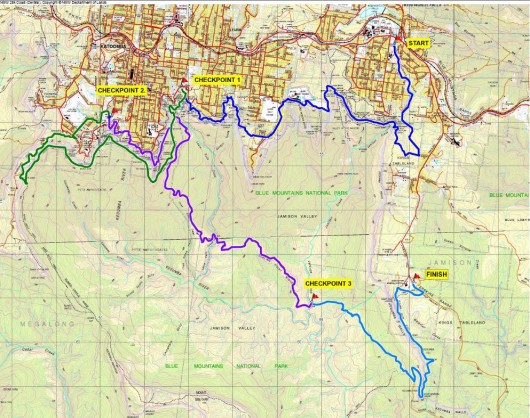 Trek For Timor – the 45km route map
Through the World Heritage listed Jamison Valley Wilderness (click image to enlarge)
[Source: Trek For Timor website, accessed 20121027, ^http://www.trekfortimorbm.org.au/wp-content/uploads/2012/05/2012-45km-route.pdf, >Read Map.pdf (2MB )] Trek For Timor – the 45km route map
Through the World Heritage listed Jamison Valley Wilderness (click image to enlarge)
[Source: Trek For Timor website, accessed 20121027, ^http://www.trekfortimorbm.org.au/wp-content/uploads/2012/05/2012-45km-route.pdf, >Read Map.pdf (2MB )]
.
The registration fee is $30 per person to cover costs and in addition each trekker (in teams of four to six) is asked to raise at least $150 in sponsorship for East Timor.
While a few tourist toilets are situated on parts of the course, participants may relieve themselves between checkpoints “make sure you move well off the track, and carry a trowel to dig a small hole to bury your waste.”
.
[Source: Trek For Timor, ^http://www.trekfortimorbm.org.au/]
.
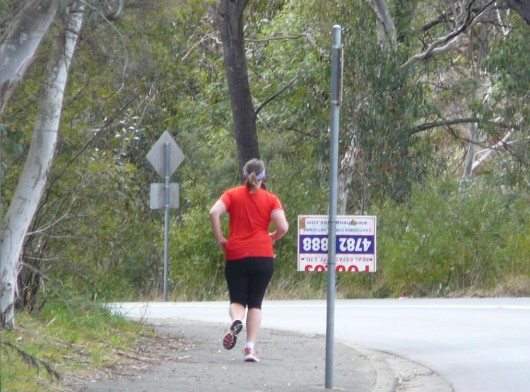 Trek for Timor particpant in September 2012
[Photo taken 20120915, published with permission] Trek for Timor particpant in September 2012
[Photo taken 20120915, published with permission]
.
While the cause seems noble, a key Blue Mountains problem of this event, like the many running that seemed to have cropped up in recent years, is that the Blue Mountains Council has routed the ‘Trek’ through Bushcare restoration sites and through creek beds, and there has been no environment impact assessment or community consultation in allowing for the event.
So while the cause may be noble, the means appears to be ignoble.
.
A Bushcare Volunteer’s Concerns about Environmental Damage
.
The following correspondence last month is between a concerned Blue Mountains Bushcare volunteer and Trek for Timor. Names have been omitted out of respect for privacy.
.
9th Sep (Bushcare Volunteer):
.
Dear Trek For Timor,
“As a local resident, environmentalist and Bushcare participant/bushland restorer, I am very concerned that the ‘Trek for Timor’ event will be passing through an environmentally sensitive area. Of great concern is the proposed creek crossing from Peckmans Road to the lower Katoomba Sports Oval. This area is (and has been for many years) a focus of environmental restoration.
I respectfully consider that three hundred and fifty ‘Trek for Timor’ participants crossing here would severely degrade the creek and its surrounds. Other crossings are also degrading the creek further downstream.
I consider the event can still take place but request that it by-pass the area of concern. I suggest it instead take a route that enters the adjacent top sports oval from Cliff Dr.
I look forward to your reply and understanding.”
Regards,
(Bushcare Volunteer)
.
9th Sep (Trek for Timor):
.
“Good Morning (Bushcare Volunteer),
I have been forwarded your email regarding your concerns raised about Trek for Timor route passing through the section near the lower Katoomba Falls Oval. I am the volunteer in charge of the route for this event and and thank you for letting us know your concerns.
You will of course be aware that any event held in the Blue Mountains area is subject to strict guidelines and requirements from Council.
Unfortunately the event is now only a few days away and it would be very difficult to change the route at such a late stage. There were also additional reasons due to traffic concerns and safety as to why the route was put around through the back of the reserve. Additionally, there are only 150 walkers who are registered to walk through this area, as the other walkers will be either stopping at the 5km or 13km checkpoints.
I would, however, be very interested to meet with you on site sometime this week to see if there is some signage we can use to draw the participants attention to care being taken in that area. Also, although we may be constrained in being able to change the route for this Saturday’s event, the event may be held again in 2014 and we would like to know your concerns so we can ensure that we avoid any environmentally sensitive areas, and have the time to plan any such re-route for that year.
Please let me know if we can meet at the reserve sometime this week (lunch times or prior to 9am would suit me best).
Thanks,
(Trek for Timor)”
.
10th Sep (Bushcare Volunteer):
.
Hello (Trek for Timor),
“Thanks for your reply of 10 Sept 2012 below to my email of 9 Sept 2012 further below.
I respond as follows:
1. Thank you for your offer but signage will not prevent degradation. I consider that 150 participants will degrade the sensitive creek where proposed to be crossed. The only way to prevent the degradation is to by-pass the area as suggested at point 3 below.
2. The Council has neither informed the local community nor environmental groups of the proposed event. Consequently, there has been no local input.
3. I consider the traffic and safety concerns can be readily addressed given the traffic and safety issues along Oak St should already exist. I note that instead of turning left into Peckmans Rd, the route could easily continue for approximately 200 metres along Oak St. without any further road crossings before entering the top sports oval. The participants could then walk around the perimeter of the top and lower sports ovals to maintain the required distances of the event.
4. Given the small variation, I believe the route can be changed within five days before the event commences this Saturday.
5. Respectfully, the event could be seen as environmentally unsustainable should it proceed as currently planned.
I look forward to your reply and trust the event will now be re-routed.”
Regards,
(Bushcare Volunteer)
.
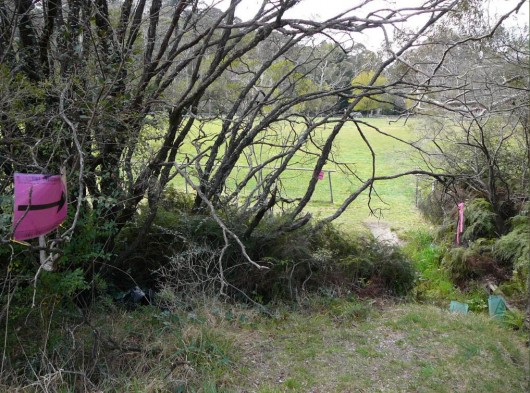 Trek For Timor route over creek restoration site, Katoomba
[Photo taken 20120915, published with permission] Trek For Timor route over creek restoration site, Katoomba
[Photo taken 20120915, published with permission]
.
11th Sep (Trek for Timor):
.
Dear (Bushcare Volunteer)
“Our committee has given full consideration to your suggestion and has sought Council’s advice on your request to reroute the trek. Both Council and the Trek for Timor organisers have safety concerns regarding your suggested alternative route, especially the very busy intersection of Kamilaroi Rd, Katoomba Falls Rd & Cliff Drive.
As we are sure you will agree, the safety of the trekkers is paramount.
The Environment Sustainability Officer of Council has also advised us that he considers the trek will have little or no impact on the crossing we will be using.
Having considered your request, taking advice from Council and following our committee discussions we have decided to continue with the course as planned. Our offer of signage advising the trekkers to take care when crossing the creek still stands.
Thank you for raising your concerns with us. Please direct all future correspondence to BMCC’s Environmental Sustainability Section.”
Regards,
T4TBM Organising Committee
(Trek for Timor)
.
14 Sep (Bushcare Volunteer):
.
Dear (Trek for Timor),
Thank you for your reply of 11 September 2012 below to my email of 10 September 2012 further below.
I respond as follows:
1. I think it is inappropriate for me to only direct my concerns to Blue Mountains City Council especially when the “Trek for Timor Blue Mountains Organising Committee” has organised the event. I also consider it necessary for me to respond to your replies of 10 and 11 September 2012 to dispel some misconceptions.
2. I wish to remind you that there has been no local input given Blue Mountains City Council has neither informed the local community nor environmental groups of the proposed event. Please provide me with the name of the Council’s “Environment Sustainability Officer” whom you contacted and their correct title, as I am only aware of the manager and administration and education officers carrying this title.
3. Once again, thank you for your offer but signage “advising the trekkers to take care when crossing the creek” will not prevent its degradation. The only way to prevent the degradation is to by-pass the area as suggested at point 6 below and point 3 in my email of 10 September 2012 further below.
4. I consider that environmental qualifications are not needed to understand that 150 “trekkers” crossing a muddy creek will damage it and the riparian vegetation. As such, I consider that any alternative unfounded view could be seen as deceptive and misleading.
5. You state that “Both Council and the Trek for Timor organisers have safety concerns regarding your suggested alternative route, especially the very busy intersection of Kamilaroi Rd, Katoomba Falls Rd & Cliff Drive.” Yet your replies of 10 and 11 September 2012 neither alerted me that the route would be crossing Katoomba Falls Rd during the very busy weekend traffic from the Katoomba Sports Oval towards the Katoomba Falls Kiosk for the 25 km and 45 km events, as is indicated on your web site. I also note that the detour I suggested on 10 September 2012 and at point 6 below passes through this location without any extra road crossings and so does not create any additional safety concerns and thus required additional resources that should already be addressed. Accordingly, I consider that it would be fair for me to say (and anyone reading this email) that all replies (and alleged replies) received by me from those involved in the “Trek for Timor” event to date are unfounded, perhaps misleading and deceptive.
6. I consider that there is ample time to change the route so that the participants can enter Katoomba Sports Oval off Cliff Drive. Traffic marshals and signs could be easily moved from Peckmans Rd to Kamillaroi Rd and Cliff Dr, as well as informing participants of the detour at the start of the event. Unlike the planned route, I note the detour does not require the participants to cross Katoomba Falls Rd.
7. Should the event continue to cross the creek adjacent to Peckmans Rd as planned and any other creeks in this area, it appears to me that the “Trek for Timor Blue Mountains Organising Committee” does not wish to acknowledge and address the concerns of local residents and environmentalists who have cared many years for this sensitive area.
I look forward to your reply and trust the ‘Trek for Timor Blue Mountains Organising Committee’ will reconsider re-routing the event.”
Regards,
(Bushcare Volunteer)

.
23 Sep (Bushcare Volunteer):
.
Dear ‘Trek for Timor Blue Mountains Organising Committee’,
Further to my email of 14 September 2012, I note the following:
1. The ‘Trek for Timor Blue Mountains Organising Committee’ did not reply to my email of 14 September 2012 below.
2. The ‘Trek for Timor’ event was not re-routed but instead went ahead on 15 September 2012 and crossed the creek adjacent to Peckmans Road despite ongoing prior concerns, requests, a suggested feasible alternative route and opportunities not to do so.
3. A ‘Trek for Timor’ notice erected next to the entrance of upper Katoomba Falls Sports Oval acknowledged that “there will be a high volume of walkers” participating in the “Trek for Timor” event.
4. Despite the ‘Trek for Timor’ event being advertised as a “walking” event, a number of participants were instead seen running the event, including at the creek crossing. These participants were also strongly encouraged to do so by ‘Trek for Timor’ marshals.
5. As indicated on the ‘Trek for Timor’ web site, the ‘Trek for Timor Blue Mountains Organising Committee’ (together with Blue Mountains City Council) was prepared to re-route participants up Cliff Drive and onto Birdwood Avenue in the event that Prince Henry Cliff Walk was closed during the event yet did not want to re-route the event along a safer stretch of road to prevent a creek crossing. I note locals consider Cliff Drive and Birdwood Avenue to be very dangerous roads for pedestrian use due to the number of sharp bends, the steep slope, the lack of safe pedestrian access and the speed and size of vehicles that utilise these roads.
Consequently, I consider the ‘Trek for Timor’ event has caused environmental damage to the creek adjacent to Peckmans Road and its riparian vegetation. In addition, I consider that the ‘Trek for Timor Blue Mountains Organising Committee’ disregards local community concerns including the community’s efforts in protecting and restoring environmentally sensitive areas for more than twenty years.
I trust future “Trek for Timor” events will no longer take place in Upper Kedumba River Valley.
Yours faithfully,
(Bushcare Volunteer)
.
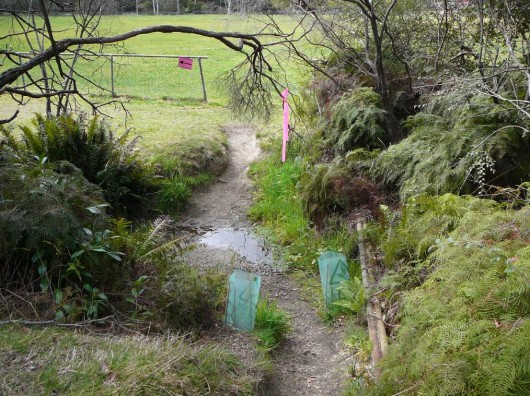 Eroded creek crossing along Trek For Timor route
[Photo taken 20120915, published with permission] Eroded creek crossing along Trek For Timor route
[Photo taken 20120915, published with permission]
.
.
Editorial Comments:
.
[1] There appears to have been no community consultation process facilitated by either the Blue Mountains Council or Trek for Timor – genuine, fair, transparent or otherwise. Local interested stakeholders such as local Bushcare Groups appeared to have not been consulted in respect to the event itself and the route chosen. Bushcare Volunteer: “there has been no local input given Blue Mountains City Council has neither informed the local community nor environmental groups of the proposed event.“
.
[2] No environmental assessment appears to have been conducted by the Blue Mountain Council or by the local New South Wales National Parks and Wildlife Service. Trek For Timor’s claim of there being “strict guidelines and requirements from Council” are not publicly available. What are the “strict guidelines and requirements from Council”, if any?
.
[3] The decision by Blue Mountains Council to allow the course route to traverse a sensitive creek watercourse that is under remediation as a Bushcare site is contrary to the ecological restoration and native habitat conservation objectives of Bushcare. The creek site is within 200 metres upstream of Katoomba Falls and the Greater Blue Mountains World Heritage Area. There appear to be no control limits on the numbers of participants and their support crews.
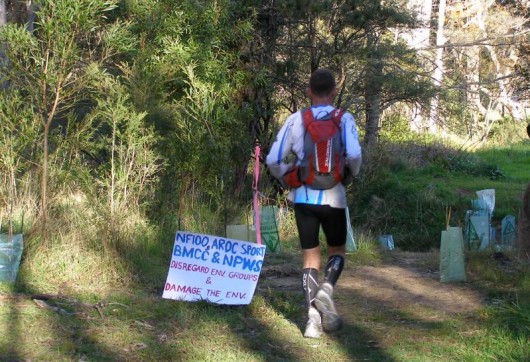 . .
[4] The cumulative impacts of tramping and soiling by the Trek for Timor and other similar running events upon the local natural environment appear to have not been environmentally assessed. Any such assessment outcomes by Council’s Environment Sustainability Officer is not readily available on either the Blue Mountains Council website or on the Trek for Timor website.
Similar running events through the natural bushland of the Blue Mountains that have been approved by Blue Mountains Council in recent years are:
.
‘Running Wild is keen to provide NSW runners with opportunities to regularly run on trails and where better than in the Blue Mountains National Park. The park covers a huge area and is already known for great races such as the Woodford to Glenbrook, the Six Foot Track and The North Face 100, but there are many other excellent trails out there, just waiting to be run. Our vision is to bring new and exciting trail races to all runners, which is also good for us, as it gives the committee a really good excuse to get out on the trails and run more, to find even better trails to share.”
[Source: Running Wild NSW ^http://www.runningwildnsw.com/about/
.
 Northface 100 competitors head off on a similar route through the Blue Mountains World Heritage Area Northface 100 competitors head off on a similar route through the Blue Mountains World Heritage Area
.
[5] The current trend of adventure recreation and adventure tourism have not been adequately assessed by the government custodians of the environmentally sensitive and ecologically important vegetation communities in which these activities have been allowed. Adventure Tourism is an ongoing threat to the integrity and health of native habitat.
.
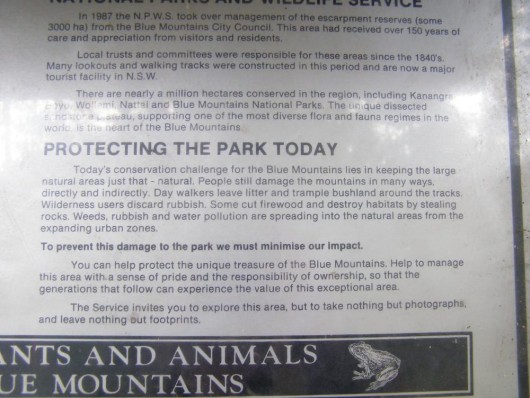 Blue Mountains National Park sign at Katoomba along the route
The custodians of the National Park have abandoned their core conservation values for tourism
[Photo by Editor 20120706, licenced under ^Creative Commons] Blue Mountains National Park sign at Katoomba along the route
The custodians of the National Park have abandoned their core conservation values for tourism
[Photo by Editor 20120706, licenced under ^Creative Commons]
.
Read more on this website about:
.
Sunday, October 21st, 2012
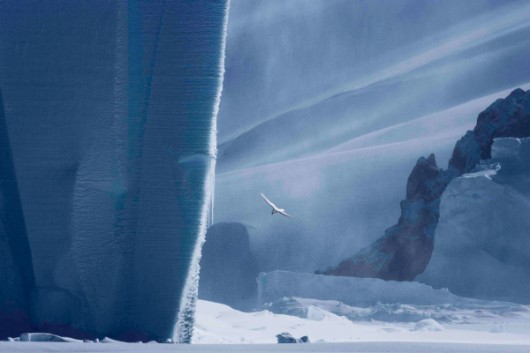 Snow Petrel (Pagodroma nivea) over Antarctic Ice
(Photo by John Weller) Snow Petrel (Pagodroma nivea) over Antarctic Ice
(Photo by John Weller)
.
‘An alliance of 30 global environment organisations today launched a report calling for greater protection for the East Antarctic marine environment, on the eve of an international meeting where the future conservation of this region will be decided.
The Antarctic Ocean Alliance (AOA) report “Antarctic Ocean Legacy: Protection for the East Antarctic Coastal Region”, supports a proposal from Australia, France and the EU for East Antarctic marine protection but also calls for additional important areas to be included such as the Prydz Gyre, the Cosmonaut Polynya, and the East India seamounts.
In just four days, the Commission for the Conservation of Antarctic Marine Living Resources (CCAMLR), will begin meetings in Hobart, Tasmania to debate several proposals for marine protection, including the East Antarctic coastal region and the Ross Sea. The Ross Sea was the subject of an AOA report in February this year.
“The AOA is calling on CCAMLR Members to support the current East Antarctic coastal region proposal put forward by Australia, France and the EU, but to also consider additional areas in subsequent years that our report shows are critical to ensuring the wildlife in the region gets the protection it needs,” said AOA Director Steve Campbell.
“We are calling on CCAMLR Members to support the establishment of the world’s largest network of marine reserves and Marine Protected Areas (MPAs) in Southern Ocean as a legacy for future generations,” Mr. Campbell said. “Decisive protection for the East Antarctic coastal region and Ross Sea would be a great start to that process.”
The remote East Antarctic coastal region is home to a significant number of the Southern Ocean’s penguins, seals and whales. It also contains rare and unusual seafloor and oceanographic features, which support high biodiversity.
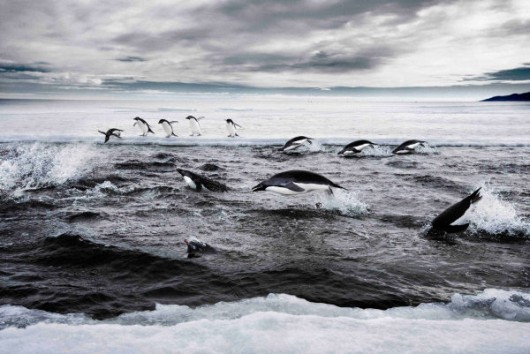 Adelie Penguins (Pygoscelis adeliae) in Antarctica
(Photo by John Weller) Adelie Penguins (Pygoscelis adeliae) in Antarctica
(Photo by John Weller)
.
“While the AOA supports the conservation gains included in the proposal from Australia, France and the EU, we hope that CCAMLR delegates will consider expanding on the area to be protected to include additional areas that are critical habitats for Adélie penguins, Antarctic toothfish, minke whales and Antarctic krill in the future,” said Mr. Campbell.
Antarctic marine ecosystems are under increasing pressure. Growing demand for seafood means greater interest in the Southern Ocean’s resources, while climate change is affecting the abundance of important food sources for penguins, whales, seals and birds.
In October 2011, the Antarctic Ocean Alliance proposed the creation of a network of marine protected areas (MPAs) and marine reserves in 19 specific areas in the Southern Ocean around Antarctica.
This report, ‘Antarctic Ocean Legacy: Protection for the East Antarctic Coastal Region‘, outlines a vision for marine protection in the East Antarctic, one of the key regions previously identified by the AOA.
Currently, only approximately 1% of the world’s oceans are protected from human interference, yet international agreements on marine protection suggest that this number should be far higher.
The Commission for the Conservation of Antarctic Marine Living Resources (CCAMLR), the body that manages the marine living resources of the Southern Ocean (with the exception of whales and seals), has set a target date of 2012 for establishing the initial areas in a network of Antarctic MPAs.
One of the key places for which the AOA seeks protection is the East Antarctic coastal region. This remote area, while vastly understudied, is home to a significant proportion of the Southern Ocean’s penguins, seals and whales. The East Antarctic coastal region also contains large seafloor and oceanographic features found nowhere else on the planet. The AOA offers this report to assist in designating marine reserves and MPAs in the East Antarctic coastal region. This is the third in a series of “Antarctic Ocean Legacy” proposals from the AOA.
This report describes the geography, oceanography and ecology of this area. The AOA acknowledges the scientists and governments that have studied the region and welcomes and gives support to the proposal that has been submitted for marine protection in the East Antarctic by Australia, France and the EU, but is cautious that constant vigilance and additional marine reserves will be required to ensure that the conservation values of the proposal are not compromised in the future.
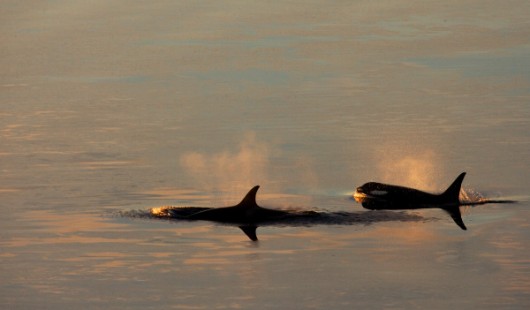 Killer Whales breaching in Antarctic waters
(Photo by John Weller) Killer Whales breaching in Antarctic waters
(Photo by John Weller)
.
The AOA proposes that in addition to the seven areas referenced by Australia, France and the EU, four additional areas also be considered for protection in the coming years. A network MPAs and marine reserves encompassing these additional areas and those proposed by Australia, France and the EU would span approximately 2,550,000 square kilometres.
Because the East Antarctic coastal region is “data‐poor”, the AOA plan is based on the application of the precautionary approach, one of the core concepts at the centre of CCAMLR’s mandate.
This proposal includes:
- A representative sample of biological features at the species, habitat and ecosystem scale to ensure broad scale protection.
- Areas of protection large enough to encompass broad foraging areas for whales, seals, penguins and other seabirds.
- Protection of many of the region’s polynyas, which are sources of food for many species.
- Protection of unique geomorphic features, including the Gunnerus Ridge, Bruce Rise, a trough mouth fan off Prydz Bay, various seamounts and representative areas of shelf, slope and abyssal ecoregions.
- Full protection of Prydz Bay, an area that supports large numbers of seabirds and mammals as well as likely nursery grounds for krill and toothfish.
- Protecting areas of scientific importance that may serve as climate reference areas.
.
 Weddell seal (Leptonychotes weddellii) in Antarctic waters
(Photo by John Weller) Weddell seal (Leptonychotes weddellii) in Antarctic waters
(Photo by John Weller)
.
Currently only 1% of the world’s oceans are protected from human interference, yet international agreements on marine protection suggest that this number should be far higher.
The designation of a network of large‐scale MPAs and marine reserves in the East Antarctic coastal region would be an important and inspirational step for marine protection in the Southern Ocean. CCAMLR Members have an unprecedented opportunity to establish a network of marine reserves and MPAs an order of magnitude greater than anything accomplished before. With such a network in place, key Southern Ocean habitats and wildlife, including those unique to the East Antarctic coastal region, would be protected from the impacts of human activities.
The AOA submits that with visionary political leadership, CCAMLR can grasp this opportunity and take meaningful steps to protect critical elements of the world’s oceans that are essential for the lasting health of the planet.
.
Notes:
.
- The AOA’s research has identified over 40% of the Southern Ocean that warrants protection in a network of large-scale marine reserves and MPAs, based on the combination of existing marine protected areas, areas identified within previous conservation and planning analyses and including additional key environmental habitats described in the AOA’s report.
- The AOA is campaigning for CCAMLR to adopt its ‘Vision for Circumpolar Protection’ while this unique marine environment is still largely intact. CCAMLR has agreed to create a network of marine protected areas in some of the ocean around Antarctica this year but the size and scale is still under debate.
- CCAMLR is a consensus body that meets with limited public participation and does not provide media access. The AOA believes that, without public attention during the process, only minimal protection will be achieved. It has launched the ‘Join the Watch’ campaign focused on CCAMLR, which now has more than 100,000 participants from around the world.
- Antarctic waters make up almost 10% of the world’s seas and are some of the most intact environments left on earth. They are home to almost 10,000 unique and diverse species such as penguins, seals and whales.’
.
[Sources: ‘New AOA report calls for protection of critical East Antarctic marine habitats’, by Blair Palese, AOA Communications Director, 20121019 ^http://tasmaniantimes.com/index.php?/weblog/article/New-AOA-report-calls-for-protection-of-critical-East-Antarctic/, ‘Antarctic Ocean Legacy: Protection for the East Antarctic Coastal Region’, by Antarctic Ocean Alliance, 20121018, ^http://tasmaniantimes.com/index.php?/pr-article/antarctic-ocean-legacy-protection-for-the-east-antarctic-coastal-region/]
.
.
.
Further Reading:
.
[1] East Antarctica targeted by dodgy fishing
.
Read Report: >’Antarctic Ocean Legacy: Protection for the East Antarctic Coastal Region.pdf (1.6MB), 2012, by the Antarctic Ocean Alliance (AOA), ^http://awsassets.panda.org/downloads/11352_aoa_east_antarctic_report_web__2_.pdf]
.
[2] Antarctic Toothfish?
.
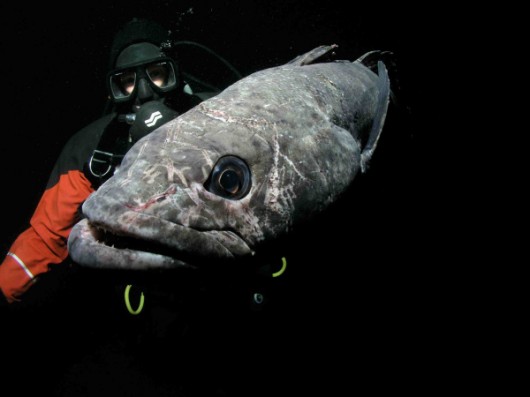 Antarctic Toothfish (Dissostichus mawsoni) the Ross Sea, Antarctica
[Source: The Last Ocean, photo by Rob Robbins, ^http://lastocean.wordpress.com/] Antarctic Toothfish (Dissostichus mawsoni) the Ross Sea, Antarctica
[Source: The Last Ocean, photo by Rob Robbins, ^http://lastocean.wordpress.com/]
.
‘Antarctic Toothfish (Dissostichus mawsoni) are by far the dominant fish predator in the Ross Sea. Whereas most Antarctic fish species rarely get larger than 60 cm, Ross Sea toothfish can grow in excess of two metres in length and more than 150 kg in mass.
Being top predators, they feed on a variety of fish and squid, but they are also important prey for Weddell seals, sperm whales, colossal squid, and a specific type of killer whale that feeds almost exclusively on toothfish.
While these fish have long been studied for their ability to produce anti-freeze proteins that keep their blood from crystallizing, very little is known about their life cycle and distribution. We do know they live to almost 50 years of age and grow relatively slowly. They likely mature between 13 and 17 years of age (120-133 cm in length).
In the Ross Sea, toothfish are caught throughout the water column from about 300 metres to more than 2,200 metres deep. While most fish control their buoyancy with a swim bladder, toothfish actually use lipids or fats (lending to their popularity as a food fish).
Recent research suggests that toothfish have a complex life cycle which includes a remarkable spawning migration. In the Ross Sea region, adults feed over the continental shelf and slope, and then migrate from the Ross Sea continental shelf to northern seamounts, banks and ridges around the Pacific-Antarctic Ridge system. Here in the northern offshore waters, fish release their eggs, which are then picked up by the Ross Gyre and brought back to the shelf. This hypothesis is likely, but not yet proven because Antarctic toothfish eggs or larvae have never been found. Small juveniles have been found in other regions, but never in the Ross Sea, lending even more mystery to the life cycle of this fish.’
.
[Source: The Last Ocean, ^http://www.lastocean.org/Commercial-Fishing/About-Toothfish-/All-about-Antarctic-toothfish__I.2445]
.
[3] Antarctica’s ‘Ross Sea’?
.
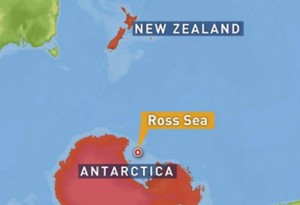
The Ross Sea ecosystem is the last intact marine ecosystem left on Earth. Unlike many other areas of the world’s oceans, the Ross Sea’s top predators are still abundant. Here they drive the system, shaping the food web below in a way that’s totally unique.
While comprising just two percent of the Southern Ocean, the Ross Sea is the most productive stretch of Antarctic waters. It has the richest diversity of Southern Ocean fishes, an incredible array of benthic invertebrates and massive populations of mammals and seabirds.
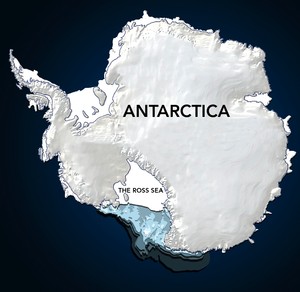
More than a third of all Adélie penguins make their home here, as well as almost a third of the world’s Antarctic petrels and Emperor penguins. Also found here are Antarctic Minke whales, Weddell and Leopard seals, and Orcas, including a population specially adapted to feed on Antarctic toothfish, the top fish predator of the Ross Sea.
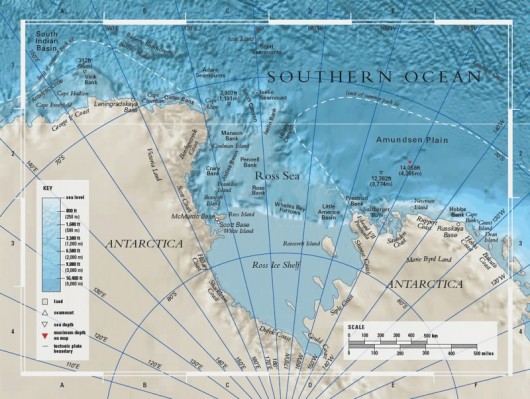 The Ross Sea Map
Source: ^http://oceana.org/en/explore/marine-places/ross-sea The Ross Sea Map
Source: ^http://oceana.org/en/explore/marine-places/ross-sea
.
The Ross Sea’s rich biodiversity and productivity puts it on a par with many World Heritage sites, like the Galapagos Islands, African Rift lakes and Russia’s Lake Baikal.’
.
[Source: The Last Ocean, ^http://www.lastocean.org/Ross-Sea/The-Ecosystem-/Toothfish-Adelie-penguins-Antarctic-Petrels-Minke-whales__I.273]
.
[4] Ross Sea dodgy fishing escapades
.
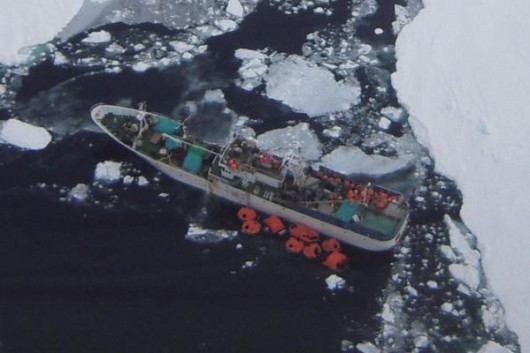 Dec 2011: Dodgy Russian-flagged fishing rust-bucket ‘Sparta’
hits an iceberg while fishing in Antarctica’s Ross Sea – a long way from Russia Dec 2011: Dodgy Russian-flagged fishing rust-bucket ‘Sparta’
hits an iceberg while fishing in Antarctica’s Ross Sea – a long way from Russia
[Source: ^http://www.stuff.co.nz/taranaki-daily-news/news/national/6150088/Distress-call-sparks-Southern-Ocean-rescue-effort]
.
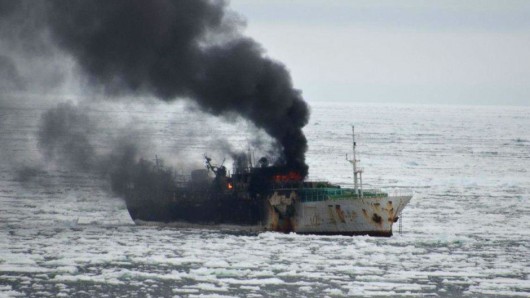 Jan 2012: Dodgy Korean-flagged rust bucket fishing vessel ‘Jeong Woo 2’
burns while fishing in Antarctica’s Ross Sea
– a long way from Korea Jan 2012: Dodgy Korean-flagged rust bucket fishing vessel ‘Jeong Woo 2’
burns while fishing in Antarctica’s Ross Sea
– a long way from Korea
Australian records show the Jung Woo 2 is owned by the Sunwoo Corporation and is licensed
to fish for Chilean sea bass, crab and other bottom-dwelling fish.
The old ship was built in Japan in 1985 and is registered in Busan, South Korea.
[Source: ^http://www.guardian.co.uk/world/2012/jan/11/three-fishermen-killed-blaze-antarctica]
.
[5] Mar 2012: ‘US retailer says no to ‘Ross Sea’ seafood’
.
‘A third US retailer has announced it will not stock seafood from Antartica’s Ross Sea for environmental reasons, reports Greenpeace.
Harris Teeter joins US supermarket chains Safeway and Wegmans by taking the ‘Ross Sea Pledge’ which means it will not buy or sell seafood from that area. It is also calling for the entire Ross Sea to be protected.
“We have pledged not to buy or sell any seafood harvested from the Ross Sea,” the company states on its website. “By taking the “Ross Sea Pledge,” we encourage the nations who are members of the Commission for the Conservation of Antarctic Marine Living Resources to designate the entire Ross Sea as an MPA [Marine Protected Area],” it continues.
The Ross Sea has been identified as the least human affected large oceanic ecosystem remaining on Earth. Many Scientists are advocating for it to be designated as a fully protected marine reserve. However, a longline fishery for Antarctic toothfish, started by New Zealand vessels in the late 1990s, is operating in the Ross Sea and supplying the luxury market.
“The delicate balance of the fragile Ross Sea is under threat from commercial fishing,” says Greenpeace New Zealand Oceans Campaigner Karli Thomas.
“Although technology has made it possible, it is simply not sustainable to be fishing every last corner of our ocean. The Ross Sea is a special place that we should be protecting as the home to diverse and unique wildlife, and a refuge in the face of climate change – not exploiting to feed the wealthy.”
In 2010, Greenpeace published a report outlining the role that seafood traders, retailers and chefs can play in protecting the Ross Sea. “The announcement by Harris Teeter shows there is a growing awareness by retailers that the Ross Sea should be protected as no-go area,” says Thomas.
The recently formed Antarctic Ocean Alliance, a group of environmental organisations, last week launched a report calling for a large-scale marine reserve to be established in the Ross Sea.’
.
[Source: Greenpeace, ^http://www.greenpeace.org/new-zealand/en/press/US-retailer-says-no-to-Ross-Sea-seafood/]
.
[6] Carting Away the Oceans…
.
Read Report: >’Carting Away the Oceans V.pdf‘, by Casson Trenor, Greanpeace USA 2011, ^http://www.greenpeace.org/usa/Global/usa/planet3/publications/oceans/CATO_V_FINAL.pdf, 2MB]
.
[7] Indiscriminate illegal gillnetting
.
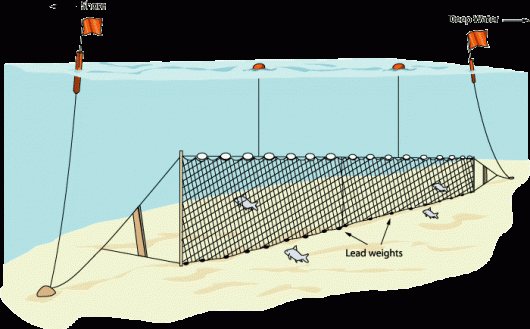 Illustration of a bottom gill net Illustration of a bottom gill net
(Michigan Sea Grant)
.
Significant progress has been made in reducing the level of IUU catch through the cooperation of CCAMLR, its Member nations and legal fishers. However, a number of IUU fishers still operate primarily in the South Indian Ocean and directly off the East Antarctic coastal region.
The conservative catch limits remain in place today, as IUU fishing remains a problem and is unlikely to further decline. In recent years, IUU fishers have increasingly used deepwater gillnets in the area, making IUU estimates nearly impossible to calculate.
Gillnets are banned by CCAMLR because they pose a significant environmental threat due to their high levels of bycatch and the risk of “ghost fishing,” which refers to nets that have been cut loose or lost in the ocean and continue catching marine life for years.
The amount of toothfish caught in IUU gillnets remains unknown, but is likely substantial. For example, gillnets found by Australian officials in 2009 spanned 130 km and had ensnared 29 tonnes of Antarctic toothfish.
IUU fishing and the uncertainty associated with toothfish populations severely compromise fisheries management and has led to the rapid decline of some toothfish stocks.
Moreover, like many deep dwelling fish, toothfish live a long time, grow slowly as adults and mature late in life, all characteristics that make them vulnerable to overfishing.
Local depletions of toothfish may easily occur, as has happened over BANZARE Bank. Scientists have yet to understand the Antarctic toothfish’s life history in the East Antarctic, which further compromises management.’
.
[Source: Antarctic Ocean Alliance (AOA) report “ Antarctic Ocean Legacy: Protection for the East Antarctic Coastal Region”, page 19]
.
[8] Illegal Unreported Unregulated (IUU) Fishing’
.
‘Illegal, unreported and unregulated (IUU) fishing is fishing which does not comply with national, regional or global fisheries conservation and management obligations.IUU fishing can occur within zones of national jurisdiction, within areas of control of regional fisheries bodies, or on the high seas. With the increasing demand for fishery products and the decline of fishery resources, the increasing incidence of IUU fishing has been of great concern to responsible fishing nations.
In a 1999 report to the United Nations (UN) General Assembly, the UN Secretary General stated that IUU fishing was “one of the most severe problems currently affecting world fisheries.”
By hindering attempts to regulate an otherwise legitimate industry, IUU fishing puts at risk millions of dollars of investment and thousands of jobs as valuable fish resources are wantonly depleted below sustainable levels. Disregard for the environment by way of high seabird mortality and abandonment of fishing gear gives rise to even more concern, as does the general disregard for crew safety on IUU boats.
IUU fishing on the high seas is a highly organised, mobile and elusive activity undermining the efforts of responsible countries to sustainably manage their fish resources. International cooperation is vital to effectively combat this serious problem. By using regional fisheries management organisations as a vehicle for cooperation, fishing states, both flag and port states, and all major market states, should be able to coordinate actions to effectively deal with IUU fishing activity.
At the initiative of the United Nations FAO Committee on Fisheries, States developed the Agreement on Port State Measures to Prevent, Deter and Eliminate Illegal, Unreported and Unregulated Fishing. It is the first global legally-binding instrument that aims to reduce the occurrence of IUU fishing. Australia signed the Agreement on 27 April 2010 and intends to take binding treaty action to ratify these amendments.
IUU fishing is jeopardising the Australian harvest of fish stocks both within and beyond the Australian Fishing Zone (AFZ), and the long-term survival of fishing industries and communities. The recent incidence of illegal fishing of Patagonian toothfish in Australia’s remote Southern Ocean territories is a prime example of the damaging effects of unregulated fishing on the sustainability of stocks and the viability of the Australian industry.
Australia’s remote sub-Antarctic territories of Heard and the McDonald Islands lie in the southern Indian Ocean about 4,000 km south-west of Perth. Since 1997, six vessels have been apprehended by Australian authorities for illegal fishing in the AFZ around Heard Island and the McDonald Islands in the sub-Antarctic.
Illegal fishing also occurs in Australia’s northern waters and is largely undertaken by traditional or small-scale Indonesian vessels.
Since 1974, traditional Indonesian vessels have been allowed access to a defined area of the Australian fishing zone (north west of Broome) in which Australia agrees not to enforce its fisheries laws – an area known as the MoU Box. IUU fishing by Indonesian vessels has occurred both in the MoU Box (through a failure to comply with agreed rules) and as a result of opportunistic fishing in other areas of the AFZ around the MoU Box.
In more recent times, there has been a noticeable shift away from what could be termed ‘traditional’ fishing. Vessels are being found further east, as far across as the Torres Strait, and are largely targeting shark for its valuable fin.’
.
[Source: ‘Overview: illegal, unreported and unregulated (IUU) fishing‘, Australian Government, Department of Agriculture, Fisheries and Forestry, ^http://www.daff.gov.au/fisheries/iuu/overview_illegal,_unreported_and_unregulated_iuu_fishing]
.
[9] Antarctic Ocean Alliance
.
^http://www.antarcticocean.org
.
[10] The Last Ocean: Ross Sea
.
‘The Last Ocean was started in 2004 to promote the establishment of a marine protected area (MPA) in order to conserve the pristine qualities of the Ross Sea, Antarctica.
In August 2009, the Last Ocean Charitable Trust was created as an extension of this project, specifically to raise awareness of the Ross Sea within New Zealand. The Trust is based in Christchurch, New Zealand’s gateway to Antarctica.’ Visit website: ^http://www.lastocean.org/
.
[11] Ross Sea Dependency
.
^http://www.rosssea.info/
.
.
Tags: Antarctic, Antarctic ecosystem, Antarctic Ocean, Antarctic Ocean Alliance, Antarctic Toothfish, Commission for the Conservation of Antarctic Marine Living Resources, East Antarctic Coastal Region, fishing, Marine Protected Areas, Ross Sea, Ross Sea Ecosystem, Ross Sea Pledge, Southern Giant Petrel, Southern Ocean
Posted in Antarctica (AU), Threats from Fishing | 1 Comment »
Add this post to Del.icio.us - Digg
Tuesday, October 16th, 2012
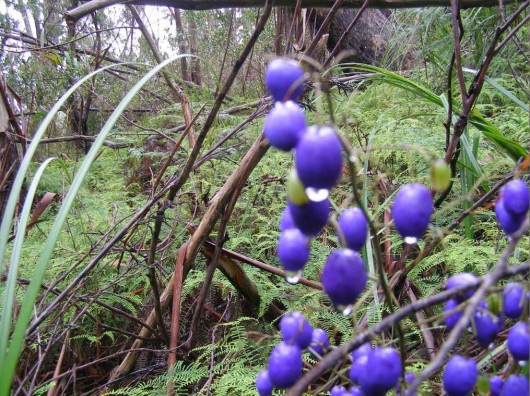 Tasman Flax-lily (Dianella tasmanica) (blue berry) in a Blue Mountains Swamp
At the headwaters of Katoomba Creek, Katoomba
Photo by Editor 20120128, licensed under ^Creative Commons, click image to enlarge Tasman Flax-lily (Dianella tasmanica) (blue berry) in a Blue Mountains Swamp
At the headwaters of Katoomba Creek, Katoomba
Photo by Editor 20120128, licensed under ^Creative Commons, click image to enlarge
.
Q: When is a protected swamp not deemed a swamp and so not worthy of protection?
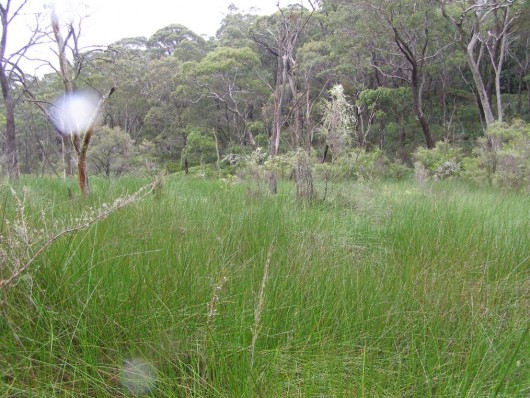 Closed sedgeland dominated by Soft Twig Rush (Baumea rubiginosa)
across a Blue Mountains Swamp along the headwaters of Yosemite Creek, Katoomba
Photo by Editor 20120128, licensed under ^Creative Commons, click image to enlarge Closed sedgeland dominated by Soft Twig Rush (Baumea rubiginosa)
across a Blue Mountains Swamp along the headwaters of Yosemite Creek, Katoomba
Photo by Editor 20120128, licensed under ^Creative Commons, click image to enlarge
.
A: When unqualified local Council development planning staff are selectively blind to allow for housing development.
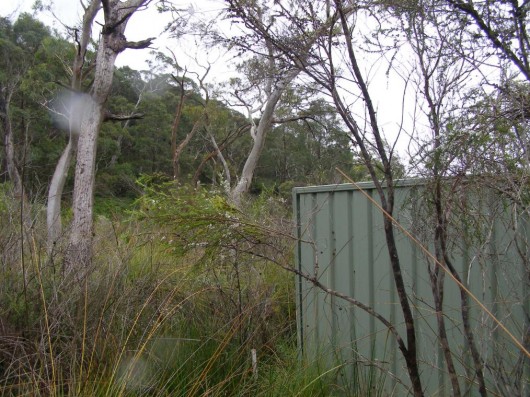 Colorbond fence encroaching into the above Blue Mountains Swamp
Along the headwaters of Yosemite Creek, Katoomba
Photo by Editor 20120128, licensed under ^Creative Commons, click image to enlarge Colorbond fence encroaching into the above Blue Mountains Swamp
Along the headwaters of Yosemite Creek, Katoomba
Photo by Editor 20120128, licensed under ^Creative Commons, click image to enlarge
.
Q: When is a protected swamp deemed a swamp worthy of protection?
A: When quasi-qualified local Council environmental staff are selectively seeking public relations kudos and grant funding.
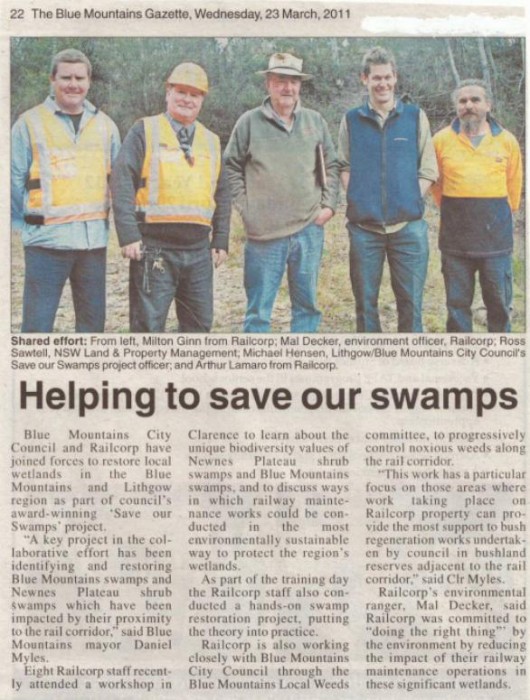 The Save Our Swamps (SOS) Project The Save Our Swamps (SOS) Project
.
The Save Our Swamps (SOS) Project is a recent joint project between Blue Mountains City Council, Gosford City Council, Lithgow City Council and Wingecarribee Shire Council to protect and restore the federally listed Temperate Highland Peat Swamps on Sandstone endangered ecological community.
It is funded through a 12 month $400,000 federal Caring for Country grant operating across all four LGAs as well as a 3 year $250,000 NSW Environmental Trust grant focused on the Blue Mountains City Council and Lithgow City Council Local Government Areas. [Source: Blue Mountains Council, ^http://saveourswamps.com.au/index.php]
.
 Blue Mountains Swamp
A ‘hanging swamp‘ – hanging on a steep slope Blue Mountains Swamp
A ‘hanging swamp‘ – hanging on a steep slope
.
The Blue Mountains National Park is one of seven national parks which collectively comprise a million hectares of the Greater Blue Mountains Area, which since 2000 has been listed as a UNESCO World Heritage Site. This area is protected internationally for (1) its outstanding examples representing significant on-going ecological and biological processes in the evolution and development of terrestrial, fresh water, coastal and marine ecosystems and communities of plants and animals and (2) contain the most important and significant natural habitats for in-situ conservation of biological diversity, including those containing threatened species of outstanding universal value from the point of view of science or conservation. [Read More about ^The Greater Blue Mountains World Heritage values]
.
Since 12th May 2005, ‘Temperate Highland Peat Swamps on Sandstone‘ have been recognised as an important and rare ecological community listed as Endangered under the Australian Environment Protection and Biodiversity Conservation Act 1999, as well as within New South Wales under the Threatened Species Conservation Act 1995 (NSW) (TSC Act).
So naturally, one would expect such swamps to be identified, mapped and ecologically protected – one would expect. .
These swamps occur naturally in very few places on the planet, as shown (in red) in the following distribution map within south eastern Australia:
.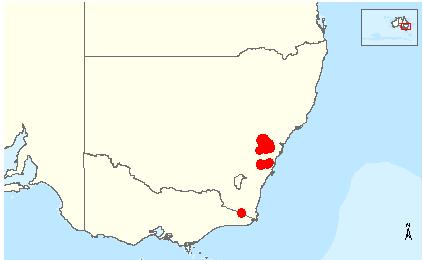 Temperate Highland Peat Swamps on Sandstone – Global Distribution Map
[Source: Australian Government, Department of Environment et al., Temperate Highland Peat Swamps on Sandstone – Global Distribution Map
[Source: Australian Government, Department of Environment et al.,
^http://www.environment.gov.au/cgi-bin/sprat/public/publicshowcommunity.pl?id=32#Distribution, accessed 20121015]
.
Blue Mountains Swamps are included as part of the Temperate Highland Peat Swamps on Sandstone. These are the top two red areas in the above map.
The Blue Mountains west of Sydney are Triassic sandstone plateaux. Blue Mountain Swamps occur in shallow, low-sloping, often narrow headwater valleys (Keith and Benson 1988; Benson and Keith 1990), on long gentle open drainage lines in the lowest foot slopes, low-lying broad valley floors and alluvial flats (Department of Environment and Conservation 2006), and in gully heads, open depressions on ridgetops and steep valley sides associated with semi-permanent water seepage (Holland et al. 1992; Blue Mountains City Council 2005; Department of Environment and Conservation 2006).
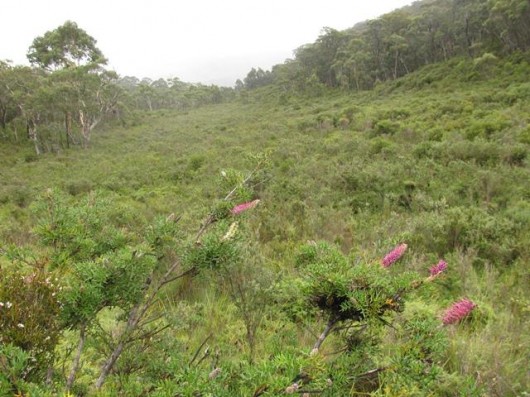 Farmers Creek Swamp
Newnes Plateau, Blue Mountains – is it protected? Or just not targeted for development yet?
Grevillea acanthifolia (pink flower) in the foreground
[Source: Lithgow Environment Group, ^http://www.lithgowenvironment.org/swamp_watch2.shtml] Farmers Creek Swamp
Newnes Plateau, Blue Mountains – is it protected? Or just not targeted for development yet?
Grevillea acanthifolia (pink flower) in the foreground
[Source: Lithgow Environment Group, ^http://www.lithgowenvironment.org/swamp_watch2.shtml]
.
Most of these swamps are situated within the Greater Blue Mountains Area and so are ecologically protected, but many are not. Many Blue Mountains Swamps are situated just outside on the fringe lands. Those fringe lands lie on the bush interface with human residential settlement and despite their environmental protection on paper are at risk of being bulldozed for housing development. Such threats from development are referred to as ‘edge effects‘. These swamps are on the edge of housing development, or put the more chronological way, housing development is being allowed to encroach upon the edge of these swamps that were there first. Other Blue Mountains Swamps such as those up on Newnes Plateau are at risk of being bulldozed and drained for mining.
According to the Blue Mountains Council, there are less than 3,000 hectares of Blue Mountains Swamp in existence. As they predominantly comprise many small areas, they are very susceptible to edge effects. As the urban footprint expands to the edges of the plateau, the swamps are coming under ever increasing pressure.
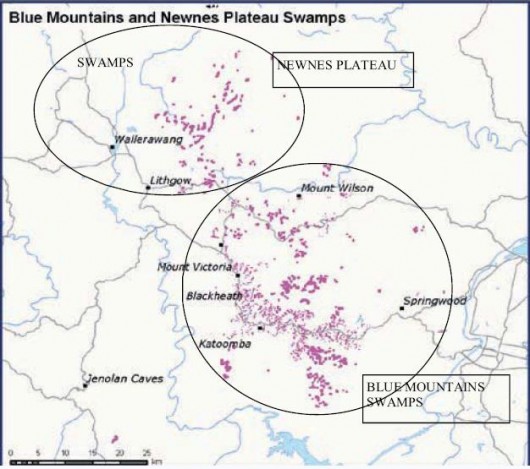
The predominant threats to Blue Mountains Swamps are:
.
- Clearing for urban development
- Urban runoff – sediment deposition, tunnelling and channelisation from stormwater discharges
- Bushfire (both ‘wild’ and ‘hazard’ reduction)
- Weed invasion
- Nutrient enrichment (urban runoff)
- Mowing
- Grazing
- Water extraction (bores, tapping natural springs and building dams)
.
[Source: ‘Blue Mountains Swamps’, Blue Mountains Council, ^http://www.bmcc.nsw.gov.au/sustainableliving/environmentalinformation/livingcatchments/bluemountainsswamps/]
.
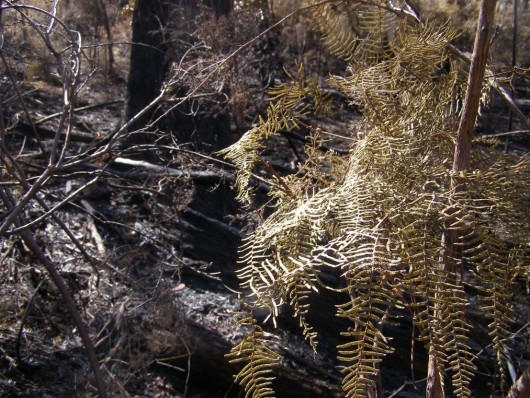 Blue Mountains Swamp
Here an acre of pristine Coral Fern (Gleichenia dicarpa) burned at Devil’s Hole, Katoomba
It was set fire to (‘hazard reduced’) by National Parks and Wildlife (NSW) on 20120911
Photo by Editor 20120922, licensed under ^Creative Commons, click image to enlarge Blue Mountains Swamp
Here an acre of pristine Coral Fern (Gleichenia dicarpa) burned at Devil’s Hole, Katoomba
It was set fire to (‘hazard reduced’) by National Parks and Wildlife (NSW) on 20120911
Photo by Editor 20120922, licensed under ^Creative Commons, click image to enlarge
..
Blue Mountains Swamps – substrate characteristics
.
Blue Mountains Swamps are characterised by the constant presence of groundwater seeping along the top of impermeable claystone layers in the sandstone and reaches the surface where the claystone protrudes (Keith and Benson 1988; Holland et al. 1992; Blue Mountains City Council 2005).
The substrate tends to be a shallow black to grey coloured acid, peaty, loamy sandy soil with organic matter and are poorly drained and so tend to be either constantly or intermittently water logged (Hope and Southern 1983; Keith and Benson 1988; Benson and Keith 1990; Stricker and Brown 1994; Stricker and Wall 1994; Winning and Brown 1994; Stricker and Stroinovsky 1995; Benson and McDougall 1997; Whinam and Chilcott 2002; Department of Environment and Conservation 2006).
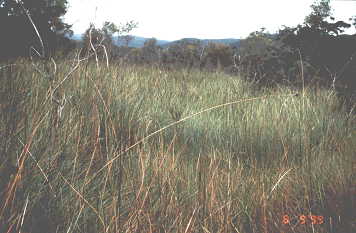 Blue Mountains Swamp on Newnes Plateau Blue Mountains Swamp on Newnes Plateau
The swamps naturally trap sediment and disperse rain water over a wide area and protect floors of headwater valleys from erosion. They vary in structure and species composition according to geology, topographic location, depth of the water table, extent and duration of water logging and bushfire frequency.
.
Blue Mountains Swamps – vegetation variation
.
The structure of Blue Mountains Swamp vegetation varies from open shrubland to closed heath or open heath (dominated by shrub species but with a sedge and graminoid understorey and occasionally with scattered low trees) to sedgeland and closed sedgeland. The Greater Blue Mountains World Heritage Area ids listed for its outstanding natural values, a major component of which is the high number of eucalypt species and eucalypt-dominated communities. These can be found in a great variety of plant communities including within and upslope of Blue Mountains Swamps.
Topographic location, hydrology and soils significantly influence the dominant species composition. Structure of the vegetation varies from closed heath or scrub to open heath to closed sedgeland or fernland. The common cross-feature with all types is the presence of frequently waterlogged soil.
 The Gully Swamp
Dominant tree canopy is Eucalyptus oreades
This one’s ‘protected’ as an Aboriginal Place under the National Parks and Wildlife Act 1974 (NSW), Part 6
Yet it is infested with environmental and noxious weeds – so what does ‘protected’ mean?
(Photo by Editor 20110502, licensed under ^Creative Commons, click image to enlarge) The Gully Swamp
Dominant tree canopy is Eucalyptus oreades
This one’s ‘protected’ as an Aboriginal Place under the National Parks and Wildlife Act 1974 (NSW), Part 6
Yet it is infested with environmental and noxious weeds – so what does ‘protected’ mean?
(Photo by Editor 20110502, licensed under ^Creative Commons, click image to enlarge)
.
Blue Mountains Swamps – Known Tree Species
.
- Eucalyptus mannifera subsp. gullickii
- Mountain Swamp Gum (Eucalyptus aquatica)
- Eucalyptus copulans
- Ed: Blue Mountains Ash (Eucalyptus oreades), only at creek headwaters around Katoomba
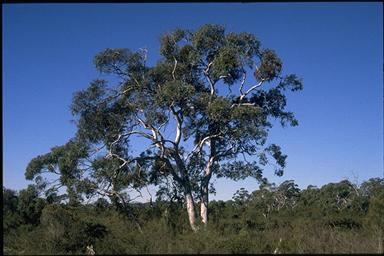 Eucalyptus mannifera (subspecies ‘gullickii’)
Found naturally in a Blue Mountains Swamp Eucalyptus mannifera (subspecies ‘gullickii’)
Found naturally in a Blue Mountains Swamp
.
Blue Mountains Swamps – Known Shrub Species
.
- Flax-leaf Heath Myrtle (Baeckea linifolia)
- Leptospermum juniperinum
- Hakea teretifolia
- Leptospermum grandifolium
- Grevillea acanthifolia (subspecies ‘acanthifolia’)
- Leptospermum polygalifolium
- Banksia spinulosa
- Almaleea incurvata
- Epacris obtusifolia
- Epacris hamiltonii
- Sprengelia incarnata
- Deane’s Boronia (Boronia deanei)
- Persoonia hindii
- Swamp Bush-pea (Pultenaea glabra)
- Bantam Bush-pea (Pultenaea parrisiae)
- Dwarf Kerrawang (Rulingia prostrata)
.
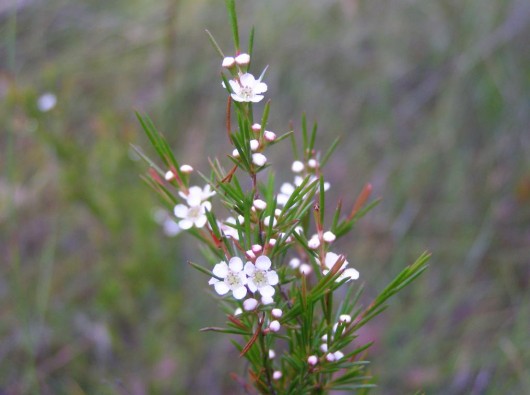 Flax-leaf Heath Myrtle (Baeckea linifolia)
In a Blue Mountains Swamp, flowering in late summer
(Photo by Editor 20080128, licensed under ^Creative Commons, click image to enlarge) Flax-leaf Heath Myrtle (Baeckea linifolia)
In a Blue Mountains Swamp, flowering in late summer
(Photo by Editor 20080128, licensed under ^Creative Commons, click image to enlarge)
.
Blue Mountains Swamps – Known Fern Species
.
- Water ferns (Blechnum nudum)
- Pouched Coral ferns Gleichenia spp (G. dicarpa and G. microphylla)
- Umbrella ferns Sticherus spp
- King Fern (Todea barbara)
- Drosera binata
.
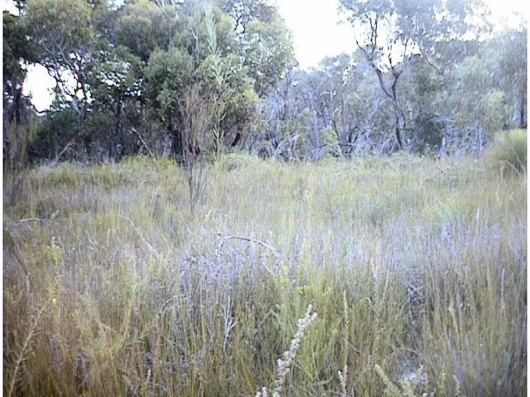 Blue Mountains Swamp – is this one protected? Blue Mountains Swamp – is this one protected?
.
Blue Mountains Swamps – Known Sedge Species
.
- Large tussock sedge, Gymnoschoenus sphaerocephalus
- Rhizomatous sedges and cord rushes:
- Soft Twig Rush (Baumea rubiginosa)
- Lepidosperma limicola
- Ptilothrix deusta
- Lepyrodia scariosa
- Leptocarpus tenax
- Cord-rush (Baloskion longipes)
.
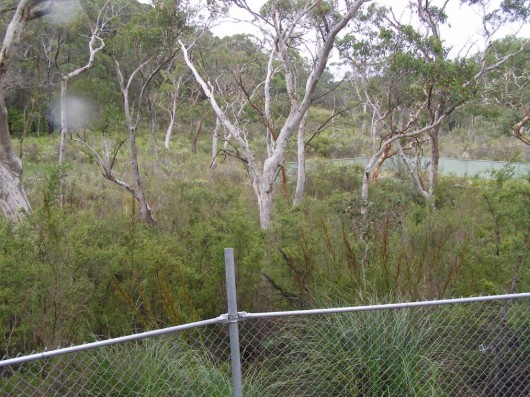 ‘Edge Effects’ – when housing development is allowed to encroach upon Blue Mountains Swamps
(Where Fifth Avenue Katoomba has priority over the headwaters of Yosemite Creek, before it enters the Blue Mountains World Heritage Area)
Tree species here is Eucalyptus mannifera subsp. gullickii
Photo by Editor 20120128, licensed under ^Creative Commons, click image to enlarge ‘Edge Effects’ – when housing development is allowed to encroach upon Blue Mountains Swamps
(Where Fifth Avenue Katoomba has priority over the headwaters of Yosemite Creek, before it enters the Blue Mountains World Heritage Area)
Tree species here is Eucalyptus mannifera subsp. gullickii
Photo by Editor 20120128, licensed under ^Creative Commons, click image to enlarge
.
Blue Mountains Swamps – Known Grasses and Herbs Species
.
- Deyeuxia spp (D. gunniana, D. quadriseta),
- Swamp Millet (sachne globosa )
- Lachnogrostis filiformis
- Poa spp (P. labillardierei var. labillardierei, P. sieberiana)
- Tetrarrhena turfosa
- Entolasia stricta
- Dampiera stricta
- Mirbelia rubiifolia
- Gonocarpus teucrioides
- Carex klaphakei
- Derwentia blakelyi
- Wingecarribee Gentian ( Gentiana wingecarribiensis)
- Lepidosperma evansianum
- Yellow Loose Strife (Lysimachia vulgaris var. davurica)
- Tawny Leek-orchid (Prasophyllum fuscum)
- Dark Leek-orchid (Prasophyllum uroglossum)
- Large Tongue Orchid (Cryptostylis subulata)
.
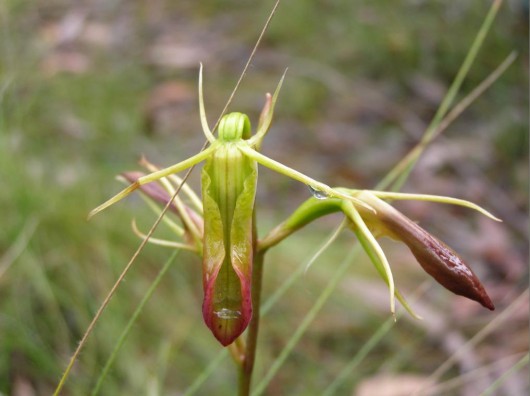 Large Tongue Orchid (Cryptostylis subulata)
Blue Mountains Swamp
Photo by Editor 20120128, licensed under ^Creative Commons, click image to enlarge Large Tongue Orchid (Cryptostylis subulata)
Blue Mountains Swamp
Photo by Editor 20120128, licensed under ^Creative Commons, click image to enlarge
.
For further Reading visit: ^Temperate Highland Peat Swamps on Sandstone , ^Blue Mountains Swamps in the Sydney Basin Bioregion – profile
.
So what differentiates a Blue Mountains Swamp?
.
What is common across the above varying substrate and vegetation characteristics, that differentiates a Blue Mountains Swamp from other vegetation communities are the following attributes:
- Situated on the Narrabeen Sandstone plateaux across the Blue Mountains region
- Underlying sandstone, ironstone and claystone bedrock forming a horizontal impermeable layer
- Ancient peaty sandy soil with organic matter that is poorly drained
- Presence of groundwater
- Constantly or intermediately waterlogged soil
- Locally native vegetation that thrives in such waterlogged soils
.
Q: But where do the spatial limits of a Blue Mountains Swamp begin and end? Are Blue Mountains Swamps dependent upon the health of adjoining vegetation communities, particularly of those upstream.
A: Probably, but who knows and who is researching Blue Mountains Swamps?
Q: Is it the physical characteristics that differentiate a Blue Mountains Swamp from other less significant vegetation communities or is it our selective attitudes that decide whether to protect it or condemn it?
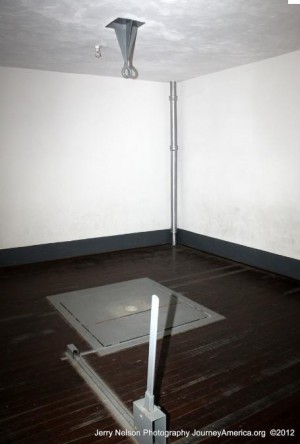 God Government Death Lever God Government Death Lever
.
A Save or Bulldoze Case Study:
‘Katoomba Creek Swamp at Twynam Street’
.
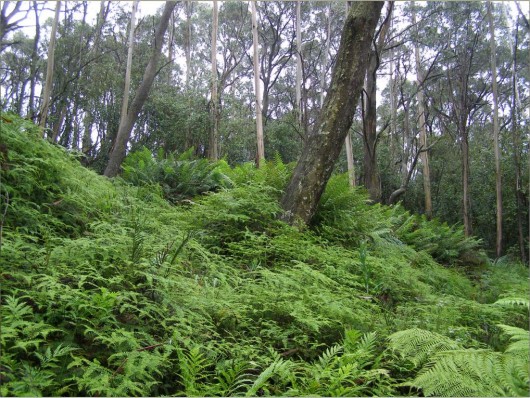 Katoomba Creek Swamp
With a cluster of magnificent King Ferns (Todea barbara) up the back, which are dependent upon constant ground water seepage
Photo by Editor 20120128, licensed under ^Creative Commons, click image to enlarge Katoomba Creek Swamp
With a cluster of magnificent King Ferns (Todea barbara) up the back, which are dependent upon constant ground water seepage
Photo by Editor 20120128, licensed under ^Creative Commons, click image to enlarge
Katoomba Creek in the Upper Central Blue Mountains flows northward from a central plateau into the Grose Valley within the Blue Mountains National Park.
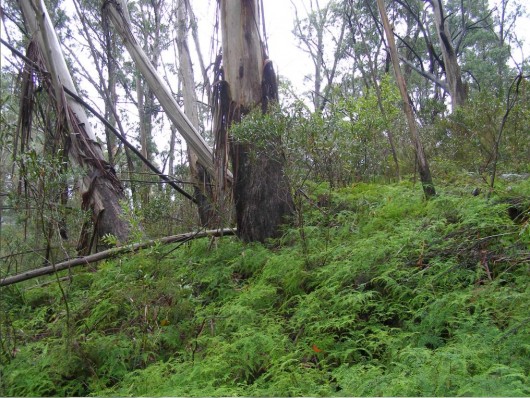 Katoomba Creek Swamp
Dominated by Pouched Coral Ferns (Gleichenia dicarpa), which are dependent upon constant ground water seepage
Tree canopy is Blue Mountains Ash (Eucalyptus oreades), which is rare and in the Blue Mountains found only around Katoomba
Photo by Editor 20120128, licensed under ^Creative Commons, click image to enlarge Katoomba Creek Swamp
Dominated by Pouched Coral Ferns (Gleichenia dicarpa), which are dependent upon constant ground water seepage
Tree canopy is Blue Mountains Ash (Eucalyptus oreades), which is rare and in the Blue Mountains found only around Katoomba
Photo by Editor 20120128, licensed under ^Creative Commons, click image to enlarge
.
The headwaters of Katoomba Creek are forked from four upland gullies, one which has been dammed for water reservoir (Cascade Reservoir), and another starts near Twynam Street which forms the outer settlement area of Katoomba. It is just three kilometres upstream from the World Heritage Area – the boundary of which is rather arbitrary and should be here at the precious headwaters.
Yet despite the substrate and vegetation characteristics of the creek headwaters suiting those of a Blue Mountains Swamp, Blue Mountains Council’s chief housing development manager, Paul Weston, Executive Principal, Building & Construction Services on 13th February 2012 deemed that “the vegetation community across the site is consistent with the Eucalyptus oreades Open Forest community, and known variations of that community, and is not a hanging swamp.”
“The inspections confirmed that some basic features common to hanging swamps are present on the land, such as steep slopes and groundwater seepage which supports the occurrence of the fern species Pouched Coral Fern (Gleichenia dicarpa), which is also found in swamps. However, the absence of many typical Blue Mountains Swamp species, the presence of a prominent tree canopy, the absence of peat formation and the co-existence of the ferns with established and emerging sclerophyll shrub species, make this community inconsistent with that of the Blue Mountains Swamp Community.”
Furthermore, while the sheltered south easterly aspect, steep slope, the underlying geology and locally moist conditions provide a niche within the forested E. oreades- E. radiata – E. piperita community for ferns and other species to flourish in the wet conditions, the area does not support the usual suite of Blue Mountains swamp sedges, ground layer and shrub vegetation, nor the development of peat, nor is it wet enough to prevent the co-existence of other drier sclerophyll forest understory and canopy species in this vicinity.
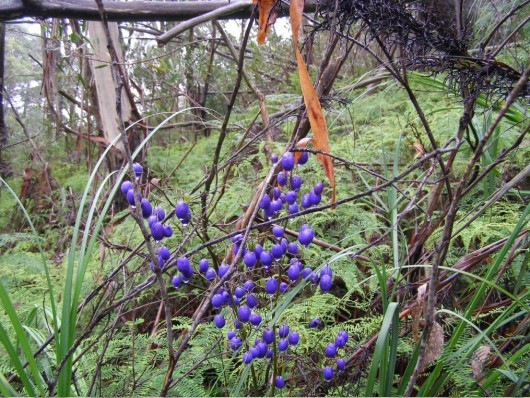 The Proposed Housing Development Site at 121 Twynam Street Katoomba
The same Katoomba Creek Swamp – Tasman Flax-lily (Dianella tasmanica) in foreground
Photo by Editor 20120128, licensed under ^Creative Commons, click image to enlarge The Proposed Housing Development Site at 121 Twynam Street Katoomba
The same Katoomba Creek Swamp – Tasman Flax-lily (Dianella tasmanica) in foreground
Photo by Editor 20120128, licensed under ^Creative Commons, click image to enlarge
.
Blue Mountains Council’s Environmental Scientist and Environmental/Landscape Assessment Officer have inspected and assessed this swamp and deemed it not a swamp but a ‘wet forest‘.
Ed: What puritanical pretense!
.
This pristine vegetation community lies wholly within the riparian zone of the headwaters of Katoomba Creek (just metres away from the above photo). The underlying substrate is sandstone, ironstone and claystone bedrock forming a horizontal impermeable layer. The soil is ancient peaty sandy soil with organic matter that is poorly drained. It has constant groundwater causing waterlogged soil. The vegetation is a carpet of Pouched Coral Ferns, with a large cluster of King Ferns. It has Soft Twig Rush (Baumea rubiginosa), its Lepidosperma limicola (sedge grass in foreground). The tree canopy is Eucalyptus oreades which is common across Blue Mountains Swamps found at creek headwaters, but endemic only around Katoomba.
Is this more Swamp Selective Bias?
Indeed, the Blue Mountains Council ecological mapping assigned this site as a dry sclerophyll Eucalyptus piperita/ Eucalyptus sieberi forest. Woops.
The Council judgment letter stated that this site is zoned under Local Environmental Plan (LEP) 1991 as Residential Bushland Conservation. But in fact, 80% of the site is zoned as a ‘Protected Area – Environmental Constraint‘ (see below extract). Woops.
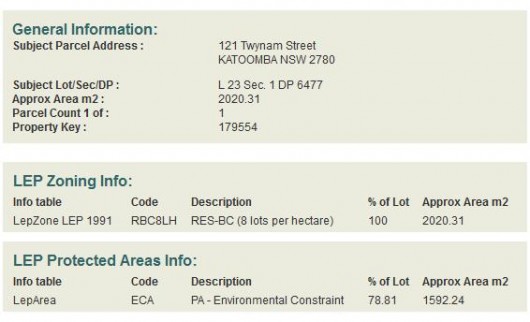 . .
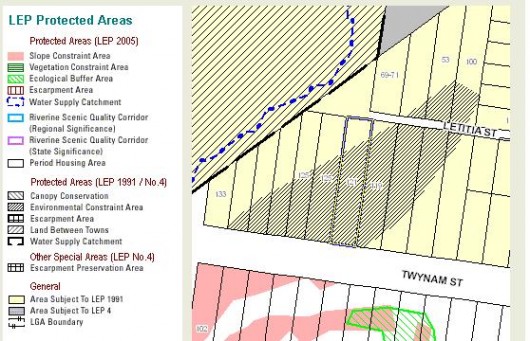
The ‘Environmental Constraint Area‘ zoning under Local Enviropnment Plan 1991 for 121 Twynam Street (perimeter highlighted)
covers 80% of the site from the street frontage.
.
LEP 1991 Protected Areas Objectives: Clause 7.2 Environmental Constraint Area
.
(a) To protect environmentally sensitive land and areas of high scenic value in the City (Ed: not that any reasonable person could possibly deem the Blue Mountains to be a ‘city’).
(b) To provide a buffer around areas of ecological significance. (Ed: Such as a pristine Blue Mountains Swamp)
(c) To restrict development on land that is inappropriate by reason of its physical characteristics or bushfire risk. (Ed: the site is Bushfire Risk Category 1)
.
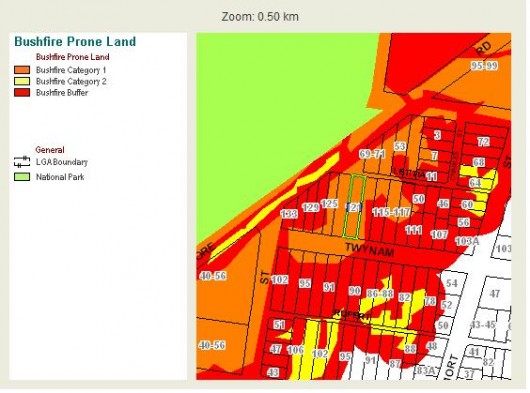 121 Twynam Street is zoned a Category 1 Bushfire Risk 121 Twynam Street is zoned a Category 1 Bushfire Risk
.
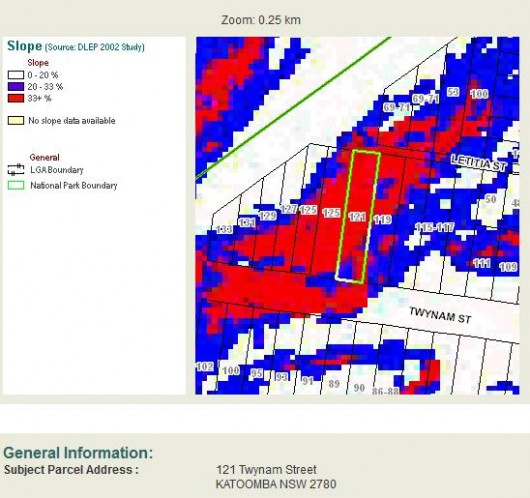 The Slope of the site exceeds 33% grade, which exceeds the limits for the Council’s development criteria The Slope of the site exceeds 33% grade, which exceeds the limits for the Council’s development criteria
.
LEP 1991 Clause 11.3 ‘Environmental Constraint Area’
.
“The Council shall not consent to development in a Protected Area – Environmental Constraint Area, unless it is satisfied, by means of a detailed environmental assessment, that the development complies with the objectives of the Protected Area that are relevant to the development and will comply with the Development Criteria in clause 10 that are relevant to the development.”
Council Judgment:
.
“In conclusion it is considered that the proposed dwelling and driveway have been designed and located to ensure that the development will not have a significant adverse environmental impact and is suitable for the site.”
.
[Sources: ‘Proposed dwelling at 121 Twynam Street, Katoomba” letter by Paul Weston, Executive Principal, Building & Construction Services, Blue Mountains Council’s Development, Health & Customer Services Department, 20120213, Ref: X/69/2010; Blue Mountains Council website – ‘Interactive Maps’, ^http://www.bmcc.nsw.gov.au/bmccmap/index.cfm]
.
Ed: So is this judgment and the process one of selective blindness, ignoring rules, hypocrisy, incompetence, or worse? In the case of Katoomba Creek Swamp, the decision is not to save this particular Blue Mountains Swamp, but to bulldoze it.
.
Tags: Baumea rubiginosa, Blue Mountains National Park, Blue Mountains Swamps, Coral Fern, Dianella tasmanica, Edge Effects, Environment Protection and Biodiversity Conservation Act, Gleichenia dicarpa, Greater Blue Mountains Area, hanging swamp, headwaters, Katoomba Creek, Newnes Plateau, Save or Bulldoze, Save Our Swamps, Soft Twig Rush, Tasman Flax-lily, Temperate Highland Peat Swamps on Sandstone, The Gully Swamp, Twynam Street, waterlogged soil, Yosemite Creek
Posted in Blue Mountains (AU), Threats from Bushfire, Threats from Development, Threats from Greenwashing | 2 Comments »
Add this post to Del.icio.us - Digg
|
|
 The pergola entrance to the Blue Mountains Cultural Centre
..using Old Growth ‘Tasmanian Oak’?
The pergola entrance to the Blue Mountains Cultural Centre
..using Old Growth ‘Tasmanian Oak’?
 The Jamison Valley Wilderness
Contains natural stands of giant old growth Turpentines (Syncarpia glomulifera)
and old growth Mountain Blue Gums (Eucalyptus deanei
The Jamison Valley Wilderness
Contains natural stands of giant old growth Turpentines (Syncarpia glomulifera)
and old growth Mountain Blue Gums (Eucalyptus deanei Blue Mountains Cultural Centre entrance
Blue Mountains Cultural Centre entrance The distinctive colour and texture of Tasmanian Oak (treated and stained)
The distinctive colour and texture of Tasmanian Oak (treated and stained) Tasmanian Oak in Tasmania
A new ten inch (wide) ‘Tasmanian Oak’ post inside Oatlands’ restored mill, Tasmania
Tasmanian Oak in Tasmania
A new ten inch (wide) ‘Tasmanian Oak’ post inside Oatlands’ restored mill, Tasmania The Pygmy Possum (Genus Cercartetus)
Once prolific, but now threatened across the Blue Mountains heathland escarpment
due to misguided escarpment Government Arson labelled as ‘Hazard Reduction’
To the Rural Fire Service anything natural is phobically deemed to be a ‘hazard’.
[Source: ^http://www.warra.com/warra/research_projects/research_project_WRA116.html]
The Pygmy Possum (Genus Cercartetus)
Once prolific, but now threatened across the Blue Mountains heathland escarpment
due to misguided escarpment Government Arson labelled as ‘Hazard Reduction’
To the Rural Fire Service anything natural is phobically deemed to be a ‘hazard’.
[Source: ^http://www.warra.com/warra/research_projects/research_project_WRA116.html]
 Tasmanian Oak/Mountain Ash (Eucalyptus regnans)
Its original distribution mainly from Tasmania
To a lesser extent variants come from the high rainfall areas of East Gippsland, Dandenong Ranges to Black Spur Range and the Otway Ranges.
Tasmanian Oak/Mountain Ash (Eucalyptus regnans)
Its original distribution mainly from Tasmania
To a lesser extent variants come from the high rainfall areas of East Gippsland, Dandenong Ranges to Black Spur Range and the Otway Ranges.
 Eucalyptus regnans
(marketed as ‘Tasmanian Oak’)
Eucalyptus regnans
(marketed as ‘Tasmanian Oak’)
 Commercial skip used to cart away builders’ waste from the construction site
(Approximate scale)
Commercial skip used to cart away builders’ waste from the construction site
(Approximate scale)
































































 1927 ‘Black August’
When 600,000 Koalas were shot and skinned across Queensland
1927 ‘Black August’
When 600,000 Koalas were shot and skinned across Queensland



































































